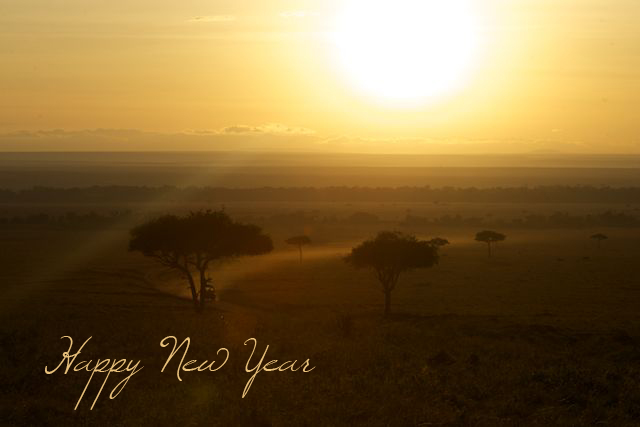photography
Soothing the Soul through Photography
09/09/13 18:01 Filed in: Insights & Opinion

We are exposed to a tremendous amount of triggers every day. Their range goes from traffic over emails, phone calls, social media notifications, work queries, advertisement, television and much more to complete exhaustion not only of our brain, but also of our soul. All these triggers need to be processed and we end up being stressed. And on top of it, some of the triggers are already of a stressing nature by themselves.
At these moments when we think it gets all too much, photography can be the soothing remedy. Photography let us see through the clutter again and focus on what is important and helpful for us. Ideal would be a photography stroll in nature. Both are soul soothing, yet a flowerpot at home does the trick to. Watch the light fall on the flowers and get your camera to photograph it. Your soul can rest in harmony with the camera and the flowers, your focus will come back, clutter will be out of sight and stress will subside.
If you have the chance to go out in a park, forest or zoo, create a little photographic safari for yourself. Dachshunds become jackals, greyhounds cheetahs and the neighbor’s cat a leopard. Have a close look at the trees around you and find the most amazing birds. You might start forgetting where you are and the city park becomes a jungle and the grass fields the Great Plains of the Serengeti and Masai Mara.
Be gentle to your soul and give it some photography time.
Happy snapping!
Ute Sonnenberg for www.rohoyachui.com
What are the Components of Your Photography?
05/09/13 12:57 Filed in: Photo Tips
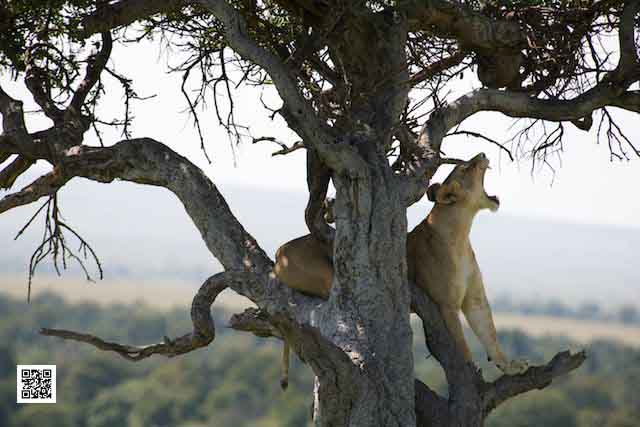
Take one of your pictures and look at it. Ask yourself the question, what made the picture.
There is the camera that captured the photo. Maybe it was a smart phone camera or a camera body with a lens or a small point and shoot camera. And there is the subject of your photo, your family, friends, a landscape, animals, wildlife, people on a street or a lovely beach. All these components are easy to identify. You can see them and touch them.
Yet there is more. The main component is you. Not only that you operate the camera, it is you who sees the composition, decides on the subject, creates compositions, connects with the light, senses an opportunity, creates opportunities and eventually captures moments that last forever.
Where you conscious about your role as main component of your photography?
Lets take it even further with an example of wildlife photography. You are on photographic safari, it is hot, the sun is burning on your head, you are following a leopard through Kruger Park, the game vehicle is going off road, you got to duck from branches, flies are circling your head and then you see the leopard, you got to focus, choose the right settings, the right angle, just the moment that the light is on it’s face and then press the shutter at the right moment.
It all depends on you and your ability to cope with any circumstances and to stay focused on what you do. Be nice for yourself, even nicer than you are for you camera equipment. You are the main component of your photography.
Happy snapping!
Ute Sonnenberg for www.rohoyachui.com
Why Genuineness is the Future
30/08/13 10:11 Filed in: Photography & Art
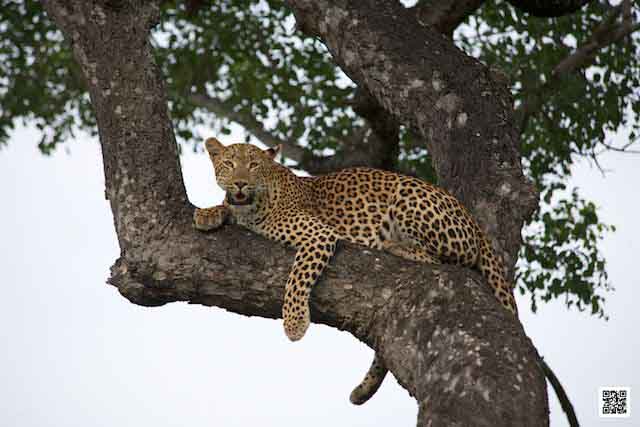
Genuineness in photography is something that was almost lost, with all the Photoshop tools and compositions and subjects copied from images taken by great photographers.
One can already predict how the coming winning World Press Photo will look like and also the next winning image of a National Geographic photo competition. They will be heavily photoshopped and the composition will be what we daily see on TV and in the magazines. It has been like that for years and it might be like that for a few more years, but boredom will fall over the images that win competitions today and people will get tired of always the same.
There are several possibilities where the trends will go, but the most likely direction will be the genuineness of a captured moment. Fashion might not fall into that category, but street photography will most likely and wildlife photography too. People who have been on photographic safaris love their images as they are, because while looking at them, they go back to the precious moment in the Masai Mara, under that tree where the leopard was sitting. They might start thinking when they are back home that they should do something to the photo before showing it online, just because everyone is doing some editing, but by heart they wouldn’t do that. And this feeling, that people just stand to their pictures and love them for what they are will create the change to more natural and genuine photography.
It will be a process and might take a while, but it seems that it has started already. Listen to how you like your photos most.
Happy snapping.
Ute Sonnenberg for www.rohoyachui.com
How to Embed Photography in Your Life
29/08/13 09:07 Filed in: Photography & Art
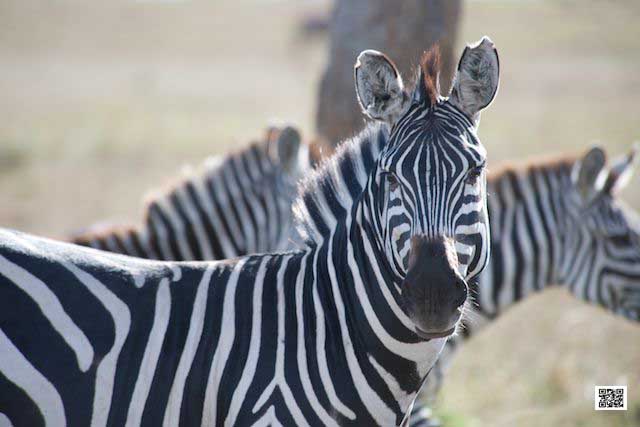
Nowadays the word “embed” is known to us from embedding codes in websites or other digital media we are constantly using. How would it be to embed the code of photography into our lives or did we already?
Embedding a code on a website makes that something beautiful becomes visible when the website is published, like a video, an e-book or an image. Isn’t just the same happening when we embed photography into our lives? Our photography makes visible what we see, experience, feel, wish and love. The image as a print or online medium is the published code of our photography and of our lives.
The social media made it easy to make photography part of our lives with the support of the smart phones, which make it easy to carry a camera at all times. So, do we even need to think about it? Isn’t it just happening? Not always. Think about when are you happily snapping away and when are you hardly touching the camera. What do we need to keep going with our photography?
Nature is always doing the trick, so keep that in mind when photography is some kind of stuck. And yes, doing a wildlife safari is a real boost, in the forests close to home or on the savannas of Africa.
Happy snapping!
Ute Sonnenberg for www.rohoyachui.com
What to Photograph This Summer
12/07/13 14:31 Filed in: Photo Tips
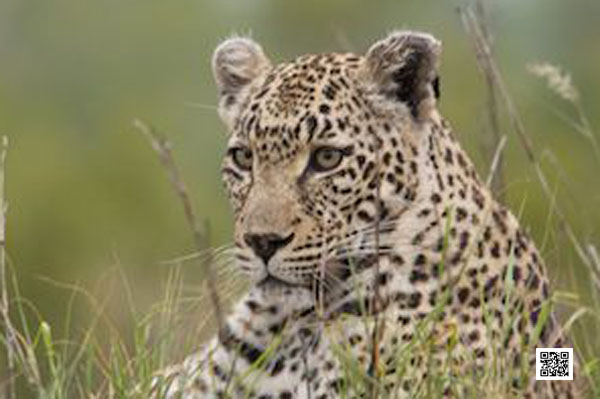
In the northern hemisphere summer is in full swing and in the southern hemisphere winter is very mild with the promise of great wildlife sightings. But there are not only on photographic safaris in South Africa, wildlife photography courses in Kenya and team building photographic safaris in Namibia great wildlife sightings and nature adventures, also the beautiful nature of the northern hemisphere has to offer great beauty to the photographer. The green of the forests with their beautiful light and shade compositions are wonderful photography subjects and so are the parks. The animals from your own pet to the deer and foxes of the woods are beautiful in this awesome light of summer.
And don’t forget the cities and villages you can visit with their summer flair and flowerbeds.
Actually anything is great in summer and the camera can just click away, capturing this lovely feeling of being outdoors and enjoying a warm summer day.
Enjoy yourself! Keep snapping!
Ute Sonnenberg for www.rohoyachui.com
What is Painting with Light
04/07/13 17:28 Filed in: Photography & Art

There has been a great hype about light painting recently and people try to invent constantly new ways of applying this technique. But what is at the bottom of all that? What is light painting?
Photography comes from the Greek and means light drawing. The artist is not using a pen, the camera is the pen with which he/she captures/draws what he/she sees. And it is only a small step from light drawing to light painting. Photography is painting with light and it needs no new techniques to do it, the camera is enough.
But if you like to try the new techniques, do it. Make yourself a painter, creating with one line amazing animals in the darkness of the bush and add an extra dimension to your photographic safari, wildlife photography course or team building photographic safari.
Keep playing!
Happy snapping!
Ute Sonnenberg for www.rohoyachui.com
Learn from Van Gogh
03/07/13 17:26 Filed in: Photography & Art
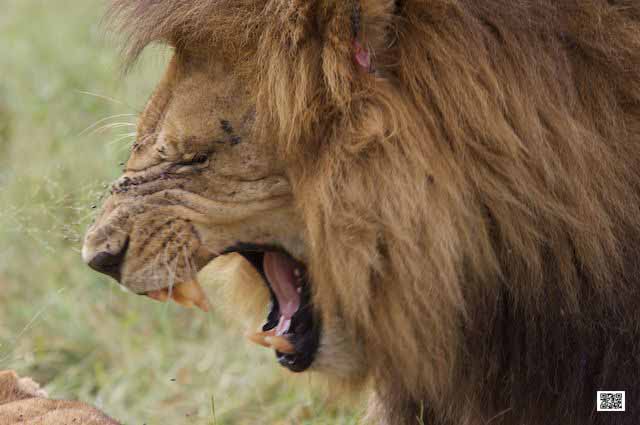
Vincent van Gogh put all his passion in his paintings, all he felt when seeing beauty in nature, people and anything else that touched him. He did not restrain emotion, he let it all come out and express itself in his paintings.
How would he have experienced what so many people are doing nowadays, the photographic safaris they go on, the team building photographic safaris companies do and the wildlife photography courses people attend. He most likely would have loved the light and the incredible colors and genuineness of the savannah.
Let your images show your awe and your emotions. Don’t be shy, dare to express yourself.
Happy snapping!
Ute Sonnenberg for www.rohoyachui.com
How Easily are You Distracted?
06/06/13 08:54 Filed in: Wildlife Photography Courses

We probably all know situations where the noise on the street or from the neighbors makes it impossible for us to concentrate on what we are writing or creating in other ways. We just cannot focus and get more and more annoyed and distracted from what we are doing.
These distractions can also occur on photographic safaris, team building photographic safaris and wildlife photography courses. And the source of distraction can be more than people on the same vehicle and the vehicle next to you on the sighting. Think about the weather and how comfortable you feel with it. Wind can be a very disturbing element and cold and heat too. We often identify distraction caused by people easily, but it takes us longer to identify distraction by feeling uncomfortable. We might be impatient with the situation, because we are cold and we become agitated with the photo shoot and the result is not good.
Observe it yourself. Dig deeper when you feel impatient or agitated during your photography and identify the source. Often all is solved by only putting on a jacket.
Happy comfortable snapping!
Ute Sonnenberg for www.rohoyachui.com
Do You Collaborate with Painters?
05/06/13 09:22 Filed in: Photography & Art
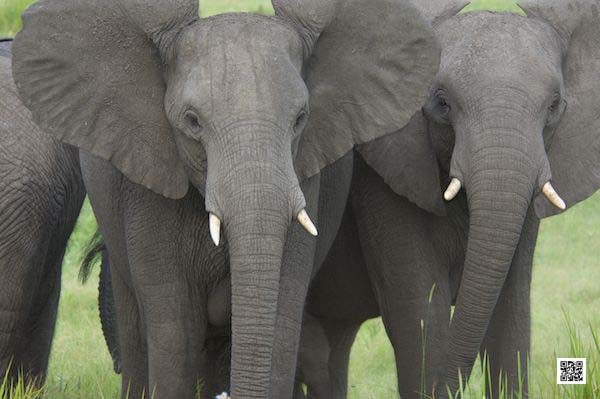
There are many talented wildlife painters out there, who don’t have the opportunity to go on photographic safaris, team building photography safaris or wildlife photography courses and they need images to paint from. Think about that when you wonder what else you could do with your photographs. Look around in your neighborhood, town or country and you will find people that would love to work with your images. And imagine how great that is to have your pictures painted.
That applies of course also to all other photographs you take at home or on holiday. It gives a new dimension beyond framed pictures and photo books. Try it!
Happy snapping and painting!
Ute Sonnenberg for www.rohoyachui.com
ePhoto Book: Dream Okavango
26/05/13 08:49 Filed in: Photographic safari destinations

One of the dream destinations of photographic safaris, wildlife photography courses and team building photographic safaris is the Okavango Delta in Botswana.
Join a female leopard in her dream of her home, the amazingly beautiful Okavango Delta, where a river disappears in the desert and creates a magical place.
View the ephoto book here.
Happy dreaming!
Ute Sonnenberg for www.rohoyachui.com
Where is Your Camera Right Now.
23/05/13 08:42 Filed in: Photographic Safari Tips

Never thought about it? But what will you do when you suddenly see something fabulous or breathtakingly beautiful? Searching your bag or pockets for the cell phone and missing the great moment?
These questions might sound silly for our daily journey to work and back, but they are not. On photographic safari, wildlife photography courses and team building photographic safari guests learn that you should always be ready to shoot and often they learn it the hard way. When returning to the lodge or camp from an evening game drive it is very tempting to pack your camera in your bag, because you can see already the lights of the camp, but suddenly there is a porcupine on the road and you have no camera ready. This is the moment you will remember forever, because you were desperate to see a porcupine and now its gone and you have no photo.
This is just the same with our travel to work every day or other situations we experience as ordinary and not worth to have a camera at hand. But what about the sunrise that suddenly paints the city purple or the great light in the park?
So, where is your camera? You got the point and just remember, a great photographic moment can appear anywhere, any time.
Happy snapping!
Ute Sonnenberg for www.rohoyachui.com
Train Your Eye
14/05/13 11:20 Filed in: Photography & Art

There is everyday somewhere news about a new piece of photographic equipment, promising better images and great photography. But in order to create great images one needs to see first and there is no equipment to replace the photographer’s eye.
It is not enough to physically see, it is necessary to see light and composition. The cameras try to help with the grid on the screen to create compositions according to the rule of thirds, but there is a better to learn that.
Just look at the old master and train your eye in seeing light and composition. During wildlife photography courses on photographic safaris and also during team building photographic safaris, training the eye is part of the photography basics. With examples of paintings the attendees learn to see perspectives and compositions, how the old masters used the light in their paintings and why we love them.
The best way to train the eye is to look at the old masters regularly, that the eye starts seeing paintings everywhere and no thinking is necessary anymore when creating a photograph.
Try it with art books or with galleries like the Louvre on the Internet and experience what it does to your photography.
Happy snapping!
Ute Sonnenberg for www.rohoyachui.com
How to Create Dreamy Soft Background
08/05/13 13:27 Filed in: Photographic Safari Tips

We probably all love these beautiful photographs with a flower or animal nicely in focus and the background blurred, with the background just being a nice color backdrop for the subject.
How can you get images like that and how do you do it when being on photographic safari? You can work with the f-stop, using a small f-stop number to have only lets say the flower in focus and the rest blurred out. But it is also possible to get the same effect by being very close to the subject when photographing it. A wide-angle lens will do very well with that.
During wildlife photography courses and team building photographic safaris we practice the being close version with subjects like flower when we are in the camp or have a picnic in the bush, but it is not working when you want to photograph animals, lets say birds. They will not let you get that close or it might be too dangerous doing that. In that case choosing a big distance results in the same effect. The telephoto lens in combination with a single focus point blurs out the background and your subject is in focus.
You don’t have to wait for a photographic safari to practice. Just look around where you live and find a flower and/or bird.
Happy snapping!
Ute Sonnenberg for www.rohoyachui.com
How Leadership Benefits from Intuition
02/05/13 18:38 Filed in: Intuition for Business

He saw things was said about Steve Jobs and probably similar attributes are used describing other charismatic innovative business leaders. What sets them apart from others?
The conscious use and trust in their intuition. Some of them might have had it always and never thought about it, reality had proved for them that they could rely on their intuition and they had never doubts. Others might have consciously learned it and went through a process of doubts and trust of falling and standing up. But the essence of all is that they were and are conscious of the benefits of utilizing their intuition for business decisions and strategies. There is nothing more reliable, nothing that leads to results faster and there is no better communication than the communication on intuitive level, completely independent from power supply and Internet access and more precise and resourceful than anything else. Tapping into the intuitive level means access to unlimited resources, only waiting to be used for the daily challenges of business and life.
Those who have doubts and would like to have a guided start into this medium can go on an intuition training photographic safari that works like a Silicon Valley Incubator. It can be a spin off to new dimensions in success and insight. And the guide is photography, a reliable tool, available anywhere at any time.
Ready for your intuition? Its waiting for you.
Ute Sonnenberg for www.rohoyachui.com
Photographic Safari Destination Ngorongoro Crater
19/04/13 10:24 Filed in: Photo Safari | Photographic safari destinations

The Ngorongoro Crater is a place not to be missed when being on photographic safari in Tanzania. In 1979 the Ngorongoro Crater became a UNESCO World Heritage Site and offers breathtaking views from its rim and a great variety of wildlife living on the crater floor. The photographic safari game drives decent every day 620 meters (2,000 feet) into the crater to cruise the entire day on the crater floor. It would take too much time to go up to the lodge in between, so one stays in there for the day. But this is not difficult. The crater floor covers 260 square kilometers (100 square miles) and lots of wildlife lives there. It is an ideal place for wildlife photography courses and team building photo safaris with the opportunity to have picnic breakfast and lunch during the day game drive.
The best place to stay at the Ngorongoro Crater is in one of the three lodges at the rim. From there the view is just beautiful and completely mesmerizing. These lodges cost a bit more, but it’s worth it. I would recommend staying not longer than for 2 or 3 nights, unless you have a special interest in the area and its wildlife. It is very busy at the Ngorongoro Crater and off road driving is not allowed (because of the many vehicles). That means the animals can be far away and only big zoom lenses will allow good wildlife photography. But it’s definitely worth going there. It’s very impressing.
Dress warm. The elevation of the crater floor is about 1,800 meters (5,900 feet) and the crater rim about 2,400 meters. It can be very chilly and windy. Bring a fleece sweater!
Ready to go? Do, if you can.
Ute Sonnenberg for www.rohoyachui.com
Wildlife Paintings of Wildlife Photographs & vice versa
18/04/13 12:52 Filed in: Photography & Art

When wildlife painters like David Shepherd work on their paintings they use photographs to help them paint animals correctly and to recall certain moments and light. Many use photographs other people took on their photographic safaris and others go on photographic safari themselves. It would be interesting to have painters on wildlife photography courses to see how they work and how they use the camera as a tool. Do they photograph already compositions they paint later or do they capture mostly animals with the idea of being able to paint them correctly? Probably both, yet there could be inspiration from painters to photographers and the other way around.
But there are also photographers that recreate paintings in photographs like Richard Tuschman did with Edward Hopper’s paintings (image below).

What is more difficult, painting a photograph or recreating a painting with a photo? It might all boil down to the skills of the photographer and painter, but I cannot see how to recreate a Van Gogh with a photo or a Picasso. So I think its more difficult to create the photo.
Anyhow, it is a nice thing to try during a painting or photography course with lots of fun and probably funny results.
Try it? Have fun!
Ute Sonnenberg for www.rohoyachui.com
Photographing Native Kenyans
17/04/13 18:14 Filed in: Photo Safari

There are beautiful photographs of Native Americans and various tribes from remote areas of the world that amaze us and inspire us to photograph them ourselves. But how does one do that without getting in trouble?
Let’s take the example of the Masai in Kenya. When you are on a photographic safari in the Masai Mara you will very likely have encounters with the local people and in this case with the Masai people. They live there and their cattle herds are roaming in the Mara, guarded by children. Now imagine a game drive vehicle with a wildlife photography course on it with all lenses pointing on the child. How must that feel? Most likely this feels very unpleasant for the child.
If the distance is big enough a photograph can be taken without disturbing and that is also in general a good solution for e.g. street photography. It worked in the past quite well until the Masai understood the people’s passion for photography and the money involved. Nowadays even when they see you from far pointing a camera on them they approach immediately, making clear that you have to pay to take a photo and you better do it or don’t take the photo.
It’s somehow a pity that it has changed to that, but for the Masai has also changed a lot. As tourism took off, especially during high season thousands of people are visiting the Masai Mara and Mara River crossing points can look like a team building photo safari event when seeing the number of vehicles gathering there. All these people also love to see and photograph the Masai and now imagine yourself what that did to them.
In general ask before you take a photo. You will have to pay them some money and it will not be as spontaneous as we would like it, but it’s nowadays reality. If you have a big zoom lens you might get away with a snap shot and these natural shots are always the prettiest.
Happy photo snapping!
Ute Sonnenberg for www.rohoyachui.com
Nature's Grace Beautifully Captured
15/04/13 17:10 Filed in: Photography & Art

How long did it take you to see that the glowing beautiful fabric with the stunning light on the photo above is a vegetable?
It took me a moment to realize that this is nature’s beauty photographed like the most beautiful ball gown. The photograph was created by Edward Weston, the magnificent photographer of the last century. He is well known for his nudes, but the nature objects like the vegetables are just stunning. A simple pepper or crop unfold their beauty under the creative hands of the photographer and become pieces of art.
Sometimes on our photographic safaris in Kenya or South Africa when we do a wildlife photography course we try to create some play time. It can be really fun to practice “studio photography” in the bush. We take an object like a leave, a fruit or even just something from our bush breakfast and do a photo shoot with it right where we are. The results are often really nice, although we do not have the studio lights Edward Weston used, but working with ambient light is wonderful and inspiring, bringing new and surprising results.
Try it for a start in your own garden. Use the golden hour and see what you can create. If you need some more inspiration have a look at Weston’s books like The Last Years in Carmel.
Happy snapping!
Ute Sonnenberg for www.rohoyachui.com
When Your Domestic Cat Goes on Safari
13/04/13 08:44 Filed in: Photo Safari | Photography & Art
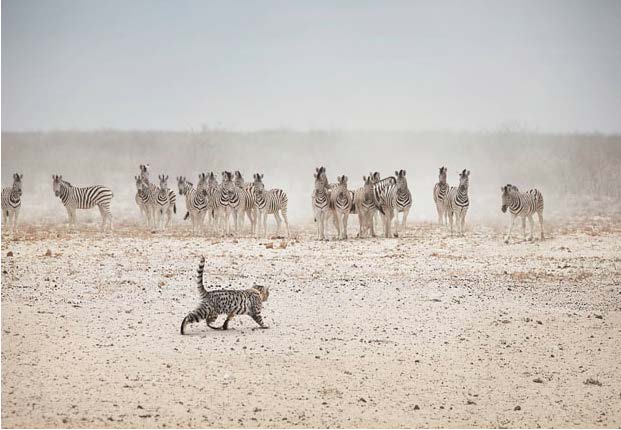
I’m not a friend of Photoshop for wildlife photography, but there are exceptions and here is one.
What happens when domestic cats go on photo safaris and do all the big cat things? Then they are part of a Whiskas advertising campaign and a teamwork result of photographer George Logan and retoucher Tony Swinney.
They are done with so nice humor, yet showing that your domestic cat looks and behaves very much like a big cat, although she or he is rather small. Actually the African wild cat has about the size of a domestic cat and does live in the bush.
Well, if you are short of wildlife for your photography course, remember your cat and you have the subject you were looking for. Now only some photoshopping and you can even create the impression that you were traveling with your cat to the bush.
Enjoy these great and funny images!
See more images on the PetaPixel post.
Ute Sonnenberg for www.rohoyachui.com
The Worlds Oldest Photography Museum at Your Finger Tips
12/04/13 10:09 Filed in: Photography & Art

The world’s oldest photography museum made the step into the digital age. The in 1949 opened George Eastman House in Rochester, New York has become the first photo museum to join Google Art Project.
So far 50 high-resolution images have been uploaded. They show a variety of subjects like Frida Kahlo, Martin Luther King and great photography from the very early years.
The Google Art Project is anyway a good idea to go on worldwide museum photo safari just from the comfort of your home and with no more costs than your Internet connection. It is also a great source for teaching art classes and photography courses, providing inspirational examples of visual art.
Have a look and enjoy some great museums from around the world.
Ute Sonnenberg for www.rohoyachui.com
How Far would You Go for a Photo
10/04/13 12:05 Filed in: Photography & Art

Clark Little is a photographer shooting shore breaks on the North shore of Oahu, Hawaii. When I read the PetaPixel interview with him, I didn’t only like the images a lot, I also liked what he said about risks and precaution.
In essence he is saying that his experience of 30 years in surfing is his guard and the knowledge of the risk involved keeps him focused. This applies not only to photographing the big waves of Hawaii, but also all other photographic opportunities from travel photography to photographic safaris and “just” photographing at home. Do not forget where you are and what the risks might be. At home it might be the edge of the veranda you can fall off and in the bush the pride of lion in the open plains.
However, Clark Little never attended a photography course, yet his photography is what he does for a living and he is very successful and very grounded. The passion for what you do is the key.
Read the full interview here.
Enjoy where your passion takes you.
Ute Sonnenberg for www.rohoyachui.com
Fairy Tale Star Talers Falling in Chicago
09/04/13 08:31 Filed in: Photography & Art

You might know the fairy tale Star Talers by the Brothers Grim. In all illustrations (at least the ones I know) one sees a girl standing, looking up to the sky, her hands holding her skirt up, collecting the star talers that fall from the sky. The air is full of sparkles and it looks quite magical.
Now there can be star talers sparkling the air even in Chicago. Photography enthusiast Satoki Nagata photographed at night, using an off camera flash that turned the falling rain and snow into stars falling from the sky.
Try it for yourself, go on night photo safari in your hometown or suggest it in your photography course class, or create a team building experience and see what stars you can illuminate. The light needs to fall in a certain angle on the rain or snow. So don’t give up when the first photo is not a success. Just keep going and it will turn out well.
Happy snapping!
Ute Sonnenberg for www.rohoyachui.com
Bert Stern: Meet Inspiration
08/04/13 12:03 Filed in: Photography & Art

In case the name Bert Stern doesn’t immediately ring a bell, he is the photographer who took the amazing images of Marilyn Monroe shortly before her death. His creative nature revolutionized advertising photographs in the early 60ies and his photographic work seems always to reflect the essence of the subject.
His photographic safaris could happen for example on 5th Avenue in New York, walking with a Martini glass filled with water, waiting for ideas for an advert. He exposed himself to the inspiration that is surrounding us and waited that it made itself known to him. It is an amazing way to work and it results in intimate and mesmerizing images.
When you would like to experience a photography course lead by him, just visit the current exhibition at the Stanley-Wise Gallery in New York and watch the just released documentary on Bert Stern Original Mad Man. Read more about Bert Stern and the movie in TIME Lightbox.
Be inspired!
Ute Sonnenberg for www.rohoyachui.com
ePhoto Book: Beauty at Ease
07/04/13 18:21 Filed in: Photography & Art

Meru National Park is a beautiful photo safari destination in northern Kenya. Its breathtaking landscapes and beautiful animals provide ideal conditions for wildlife photography courses. The light is magnificent and the outlooks over the park are stunning.
Meru got also the rare Grevy’s zebras and the gerenuks, also called “giraffe antelope”. It is a place to go to enjoy nature and photography and to be with beauty at ease.
Enjoy the ephoto book “Beauty at ease”.
Ute Sonnenberg for www.rohoyachui.com
On Photo Safari: What to Wear
06/04/13 09:27 Filed in: Photo Safari

This is NOT only a post for ladies! Also men can end up with too much luggage and the wrong things packed.
Being on photo safari means being out in the bush, exposed to the elements, yet just to a certain extend. That demands careful packing and not only with regards to the camera equipment to make sure the wildlife photography course is going smoothly, but also to be prepared for all weather situations. And being not prepared for the weather, can influence the photography again, so better think of it.
First of all inquire about the climate of the region you are going to. Do not only look up the weather forecast on the Internet, but ask people you have been there or live there. 20 degrees warmth feel different when there is wind, but who can image how it feels from reading the wind information online. Better ask.
Pack casual, practical outdoor clothes that allow you to dress in layers. By doing that all will be covered, the heat at noon and the chilly evenings. Bring a light rain jacket that can function as a windbreaker and rain cover. Always wear closed shoes when being in the bush. And bring easy slippers for in the camp. Bring a sun hat and sunscreen. The sun in Africa can be tricky and you can end up with sunstroke when being not prepared.
In the bush camps is no need to dress up for dinner (except the very luxury lodges). You can bring jeans and t-shirt to have some change from the safari outfit and to have backup clothes in case all gets wet, but keep in mind when packing that it works best when you can combine everything with everything else. Most of the lodges and camps also offer laundry service. So, there is no need to bring many clothes and to have excess luggage on the safari flights.
Ready to go? Enjoy the fun of photographing wildlife!
Ute Sonnenberg for www.rohoyachui.com
Hands of Tips when Planning a Team Building with Photography
05/04/13 09:58 Filed in: B2B

A team building with photography can take place anywhere, in the office building where you work, in the city where you live or at nature destinations close and far to and from home. Yet there are some things to consider and in order to get the best benefits for your team you should keep in mind the following tips to make the right decisions.
1. Choose a location that allows the team to feel away from work.
2. Make sure the team understands that no photographic skills are needed; only a digital camera or cell phone with camera. No stress!
3. Make sure your team leader understands that it is fun, yet with great team connecting features. Photography is the playful tool to align the team members for the company’s goals.
4. Try not to put too much talking or presentations in the team building. Let the team members enjoy the experience and trust the team building presenter that the goal of the team building will be achieved.
5. Surrender to the process. Photography will do its job and provide what the team needs.
Some of these pointers might be hard to do, especially the surrender point can be tough, the letting go and trusting the process, yet by doing it the benefits will be huge. The choice of location can also be challenging depending on where you are. Not everywhere is easy access to wildlife photo safaris or beautiful nature just on the doorstep. If you can choose nature and if it is a garden or park in your city do it. Nature is always supporting, inspiring and comforting. Make sure no one panics and thinks now has to follow a photography course before joining the event. There is no need to do that. Everybody can press a shutter.
Encouraged? Now explain it to your boss
Ute Sonnenberg for www.rohoyachui.com
Inspiration: The Art Paris 2013
04/04/13 09:31 Filed in: Photography & Art
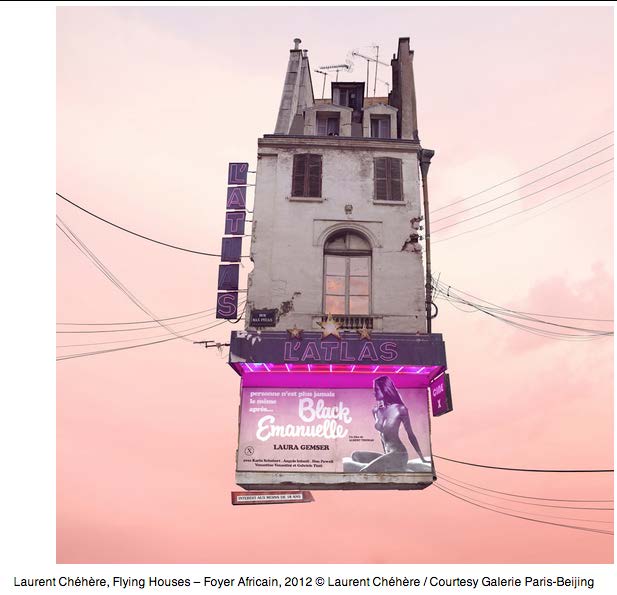
How much inspiration does one need? Endlessly much and provided by just opening the eyes. But there are these events that provide a high dose of inspiration and one of them was the Art Paris fair last Easter weekend.
Take only the image above, the flying house. It is a beautiful creation made of a photograph, giving the feeling “The Little Prince” from Saint-Exupéry will look out of the window just now. And there was much more work, just as inspiring and opening new creative perspectives to photography with galleries from all over the world exhibiting.
Ever thought of going to an exhibition and photographing the exhibition’s artwork? It can be an inspiring photographic safari wandering around and capturing the paintings and photographs of the artists, reflecting by doing that what they do to you and how they can inspire you in your own work. That way you can travel through Africa, America and Europe, art history and old masters while taking the essence with you to make the next steps for yourself.
You can make it even a team building event, visiting with your colleagues an art exhibition, everybody photographing what he/she likes and understand that way how they see things their own way. Or go with your photography course to do the same thing and learn from each other. There are endless opportunities to play with it.
Inspiration is an infinite source accessible to all; one just needs to keep the eyes open.
Happy seeing and snapping!
Ute Sonnenberg for www.rohoyachui.com
Street Photography: A Hype?
03/04/13 08:40 Filed in: Photography & Art

It seems that street photography is currently very popular and appealing. Maybe because of the easy access cell phone cameras, those allow us being on photo safari as soon as we leave home and let us discover the street photographer in us. Or is it the freshness of the moment captured, preserved for the future with often a touch of humor? Our daily life is the inspiration for our photography and one doesn’t need a photography course to do it, enjoy it and produce great photography.
Well, there are two photographers who collaborated to create an awesome street photography book called Berlin+Wien. The photographers are Kay von Aspern and Christian Reister. Their photographs were recently celebrated at the Burjuar in Berlin and will be shown in a new exhibition in Eigensinnig in Vienna that opens May 1st.
Inspired? Keep enjoying snapping wherever you go and capture wonderful moments of awe and joy.
Ute Sonnenberg for www.rohoyachui.com
LaToya Ruby Frazier: Photographic Social Documentaries
02/04/13 08:34 Filed in: Photography & Art

LaToya Ruby Frazier is from Braddock, Pa, nowadays called a “distressed municipality”, back in time home to one of America’s first steel mills. Her photographic work tells the story of her hometown through the story of her family. Her solo exhibition “A Haunted Capital” runs from March 22 – August 11 2013 at the Brooklyn Museum.
This young artist’s social documentaries show the dark side of industrialization and what happens when industrialization moves on to other places, leaving behind destroyed environments, cities and people. Her photographic safaris capture demolished hospitals and despair, yet the beauty of the photographs seems to promise a future, a future not yet arrived and unknown to the people involved.
Social documentaries can be great subjects for photography course assignments, long time projects and ways to capture history.
Be inspired and capture your history.
Ute Sonnenberg for www.rohoyachui.com
ePhoto Book: Out of Africa, an unexpected journey
31/03/13 11:18 Filed in: Photography & Art
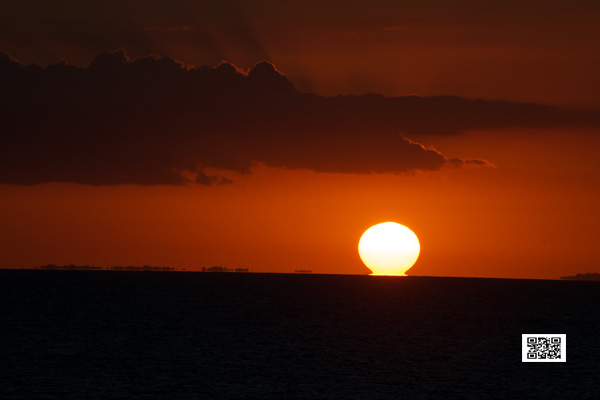
I’m usually always in Africa, doing photography and photographic safaris with photography courses. But sometimes it can happen that something unexpected happens and one gets asked to be at a very different place. That happened when I was asked to present photography courses in New Zealand. It was an unexpected journey that took me out of Africa and it was full of beautiful landscape and magic.
Have a look yourself here.
Ute Sonnenberg for www.rohoyachui.com
On Photo Safari: Safety Travel Tips for Photographers
30/03/13 10:33 Filed in: Photo Safari
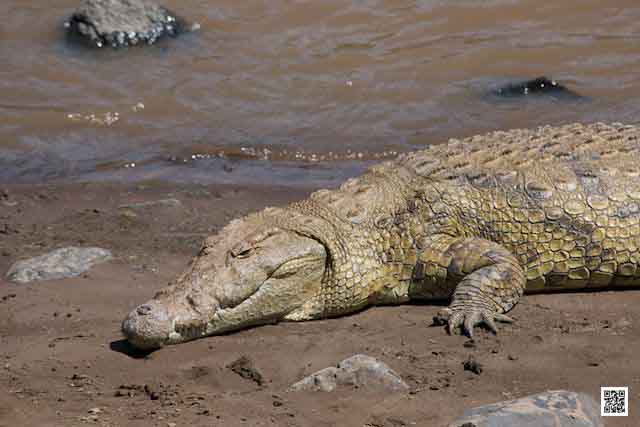
Traveling for photography is the most wonderful thing to do; yet one needs to be conscious of the dangers involved to ensure a great experience and fantastic photos.
This applies to all photography travel no matter where in the world. As a photographer one carries expensive photo equipment and this can attract the interest of the more shady kind of people. So, make sure your equipment is insured in the first place. That gives already a peace of mind. But you want to photograph and not to loose it, so take precautions to be safe during your trip. When traveling in a group do not drop your guard, because you think you are fine as a group. If everyone in the group thinks that drops the guard, everyone will be a soft target for thieves. Yet its understandable that you want to focus on photography not thinking of anything else, so, make clear who in the group is taking care of safety and if you travel alone, find somebody to cover your back.
Another important safety aspect is to make backups of your photos on several external hard drives and just as at home, make sure one backup is off site, which means while traveling keeping them in different places and send one backup home, if possible. Read for more details also Joey L.’s travel tips.
Choose safe accommodation as a “home base” from where you go on your photographic explorations. For example when you want to photograph Andalusia choose a hotel that is safe and in a central location to be able to see all you want during day trips. This has several advantages. You can tell the hotel where you are going and when you think to be back. They will be able to follow up on you, if you are not returning as intended. The hotel will also be able to advice with directions and sights you should see and you avoid carrying around all your things or to pack and unpack every day. I do that anywhere that way, in Spain just as in Nairobi. The locals always know where to go, how to get there and what to do in emergencies. Just choose carefully the accommodation.
The advantage of going on pre-organized photographic safaris is that you are traveling with experienced guides and adequate safari vehicles. Yet be careful with the choice of the safari operator with regards to the vehicle and the quality of the guide. For our photography courses in the bush we always choose operators with qualified guides and 4x4 vehicles and this works very well. They are usually from good camps or lodges that provide also safes in their tents or rooms. They are not the cheapest, but provide higher safety. If you rather travel budget and solo, just be cautious and take in Joey’s tips.
Travel safe and happy snapping!
Ute Sonnenberg for www.rohoyachui.com
The Discovery of Thunder
29/03/13 10:09 Filed in: Photo Safari

This year celebrates the 200th anniversary of Dr. David Livingston’s birthday. He was one of the most remarkable explorers, crossing Africa on foot in 1856 from the Atlantic to the Indian Ocean. He was the one who spotted the Victoria Falls first and there will be celebrations in the Zambian city Livingston throughout the year.
One hears the Victoria Falls first, before one can see them. Their thunder prepares the visitor for what the eye will see, a 2 km wide and 100m tall curtain of falling water, the largest in the world.
The Victoria Falls can be explored in several ways, often embedded in Africa holidays between photographic safaris, from walking the falls to viewing them from a helicopter or small aircraft. They are impressive and a photographic challenge for photographers. An entire photography course could be dedicated to them, learning how to capture their majestic water curtain the right way to let the viewer give the feeling of being there.
The region around the Victoria Falls offers lots of activities from water activities on the Zambezi to bungee jumping and wildlife interactions in the surrounding game reserves.
Maybe this anniversary year is a good reason to visit them.
Ute Sonnenberg for www.rohoyachui.com
Egene Atget: Nostalgia and Surrealism
25/03/13 15:22 Filed in: Photography & Art

Eugene Atget, French photographer, was born in 1857 and his photography breathes the air of nostalgia, with his images telling the story of Paris at the turn of centuries. He seemed to be a shy man; referring to the photos he took that they would only be simple documents. Nonetheless others noticed their strength and Man Ray, one of the most prominent surrealists of his time purchased several of them and used “During Eclipse” for the cover of La Revolution surrealiste (via Photoblographer). Atget did not want his name on the cover picture. Maybe there was also a bit hesitation with surrealism, but that would be speculation on his thoughts. Yet it’s quite interesting that these nostalgic images are linked to surrealism, when one has in mind e.g. paintings of Dali.
The photography story of Egene Atget is a story like many others of photographers and artists who don’t think too much of their own work and hesitate to be proud of it. One got to start somewhere, with a photography course, a study or just snapping away, nothing is impossible. Just keep practicing and photographing as much as possible and the next cover photo might be one of yours!
Happy snapping!
Ute Sonnenberg for www.rohoyachui.com
ePhoto Book: Roma
24/03/13 14:13 Filed in: Photography & Art
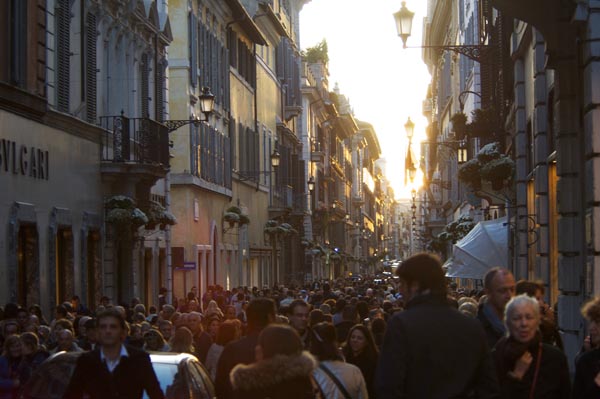
There is a new pope, pope Francis, and he resides in Rome. Well, the photo book was made long before the new pope came, but it just gives a glimpse into the city’s life.
The photos were taken during a photography course in November with the warm Roman winter light, masses of people on the streets and the historical symbols of the city.
Enjoy beautiful Rome.
Ute Sonnenberg for www.rohoyachui.com
On Photo Safari: Animal Behavior
23/03/13 10:44 Filed in: Photo Safari

Photo safaris are of course for the purpose of seeing animals and photographing them, but that can be challenging at times, when the animals just are who they are and the photographer is too late to capture the action. This can be improved by a faster camera, a better trained photographer, yet more important by the photographer having knowledge about animal behavior.
During photographic safaris with photography courses this is an important part of the course. In order to do wildlife photography one needs to know the animals or at least have somebody on the vehicle who does. For example birds. Photographing a bird’s take off is the moment of capturing motion, beauty and dynamic, yet it happens very fast and the photo is often one of an empty branch or an empty piece of sky. This changes when the photographer knows that a bird ducks down for a moment before it takes off, like a skydiver before jumping out of the plane. Then you only need to start shooting the moment the bird ducks down and you will have the take off.
Another example is lion movement. Lion tend to rest during the day and get active when it cools down in the late afternoon. But it can be very tempting to be impatient and not wait when being at a lion sighting and they are all not moving an inch and it becomes very boring. Stay with them when you see that they start grooming and yawning. This is a clear sign that they will get up soon and that is when the action comes and movement happens.
In case this sounds all new don’t worry. There are rangers on the vehicles who know the animals. Learn from them about animal behavior and your wildlife photography will improve and stress to get it right will subside.
Happy snapping and wildlife watching!
Ute Sonnenberg for www.rohoyachui.com
The Paradox of Photographing People's Lives
22/03/13 10:05 Filed in: Photography & Art | Insights & Opinion

Sebastiãno Salgado is an amazing photographer, traveling the world photographing people’s lives in difficult circumstances. His images go deep, show the people’s struggle and the respect he feels for them. Sebastiãno Salgada is only one of a number of photographers capturing the lives of the impoverished and unfortunate with respect and great artistic skills. And we as the viewer and buyer love the images and admire the photographers.
But what makes the photographers choose these subjects and what makes us the viewer to love these images?
We want to feel that we live.
In the western world most of the people have a home, work and some sort of security in their lives. For most of the people there is no daily confrontation with danger and death, the own death, which is how we want to live, what we work for, to be safe. Yet it seems that we need the confrontation with death in order to be conscious that we live. One can do bungee jumping or skydiving, do video gaming or embark on adventures themselves and one can also look at art and photographs like from Salgado. I don’t know if people from a dangerous gang controlled city area or an area with no water and food look at and love photographs that show suffering and death like Salgado’s images. They have it themselves, they experience it every day and they are conscious that they live, because they are confronted with the possibility of their own death every day. Or would they like to see the reflection of their own lives?
The paradox is that the need to feel that we live pays the ones who capture the suffering of others well and makes sure they have a secure life, which creates in return the need within them to go out and photograph again. Another phenomenon is that the further away the suffering and death happen the more the viewer seems to be able to love the photographs and to feel the situation of the people there. It seems to be hard to bear when it comes too close and that is completely understandable. The suffering the photographs show is unbearable and hard to cope with and at the end we all want to survive, physically and emotionally.
So, what does that mean? Will photography awards continue going to photographs that show suffering or will happy photos win as well? Will the world sustain its regions of poverty and suffering or will there be a time that efforts pay off and people have food and shelter?
I don’t know, we humans are funny creatures with a very complicated psychological constitution. Maybe it is part of the process of becoming human.
Do we need to feel guilty that we love these photographs? No. We seem to have a very good sense of when a photograph was taken with respect and compassion and the photos keep us aware that there is still a lot to be done in the world.
And how do photo safaris fit in here? Not? What do we experience on a photographic safari that is so addictive? Nature? This is probably something for another post.
Keep enjoying the spirit of photography and its deeper insights.
Ute Sonnenberg for www.rohoyachui.com
image above by Sebastiano Salgado
How to Accelerate Innovative Leadership with Photography
21/03/13 10:15 Filed in: B2B
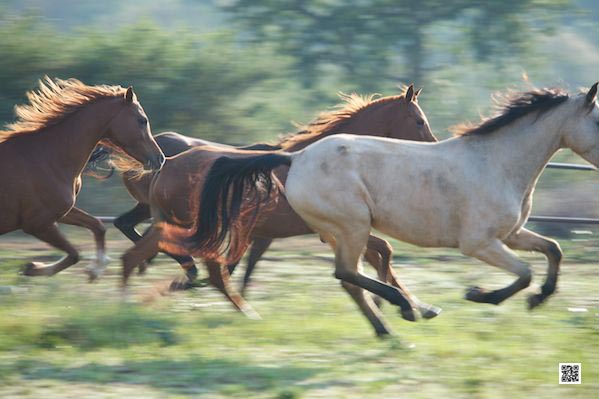
Something is innovative when it is qualitatively new and in order to be an innovative leader, executing innovative leadership an innovative leadership tool is what is needed.
Times are fast, news spreads within seconds all over the world and high quality decisions need to be made quickly, having global impact on the company’s success and the life of people. The high quality demand in combination with time is tricky and asks for a tool that can manage both with the result of innovative decisions. The tool needs to serve innovative leaders and accelerate innovative leadership. This tool is photography.
Photography is easy, quick, reliable, insightful and last but not least also fun. And when there is fun, work and learning just goes easier. Instead of a long and tiring process photography makes it possible to get to the point quickly, unearths insights instantaneously and is incredibly easy to handle. It is applicable to all issues, processes, projects and leadership challenges, team buildings, HR tasks and in house training and coaching. The utilization of photography accelerates problem solving, strategic planning, product development and any other task a company is dealing with every day.
Use it, accelerate innovation and bring some fun into daily work. Well it is not quite a photographic safari experience, but there are pretty sure some Big 5 just around the corner of the office. It is about seeing, innovation is about seeing like Steve Jobs did and photography makes one see.
Happy accelerated seeing with photography!
Ute Sonnenberg for www.rohoyachui.com
Street Photography: Inspiration
20/03/13 08:47 Filed in: Photography & Art

As a response to an earlier post about Bill Brandt’s street photography, Steve Kenny and Jeanette DeMain provided some more inspirational street photographers to be worth looking at and they really are.
There is Jacob Riis, a Danish American who lived from 1849 to 1914. He is also called a social documentary photographer, trying to help the impoverished in New York City with his photographic and journalistic talent. So, he might be best characterized as a social reformer with a camera as his tool. His focus might not have been on composition and light in the artistic way, yet he saw a different light, the light in people and he wanted the light of these hidden away impoverished people and their life situation to be visible for all.
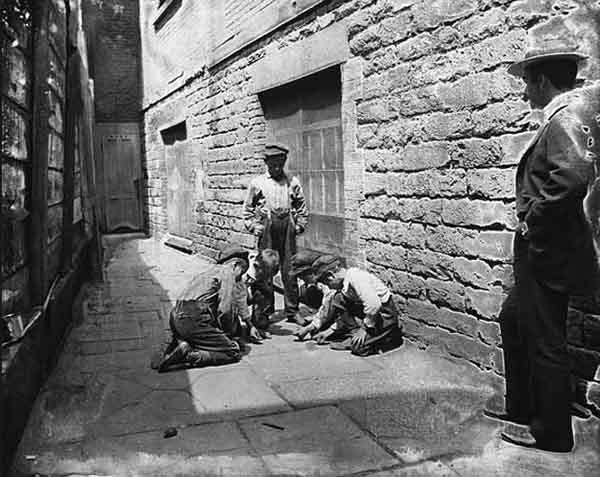
Swiss born and after World War II to the US emigrated photographer Robert Frank is another inspirational photographer, capturing the spirit of America in his book The Americans. He saw American life as overemphasized on money and America often as a bleak and lonely place (Wikipedia). While trying to capture the soul of America as he experienced it, he wielded a great artistic eye, reflecting in the composition of his photographs.

And then Dennis Hopper, an artistic multi talent. His snapping away is not only capturing famous people he was socializing and working with, his photographs also capture the spirit of time whenever he saw it. It might be even harder to acknowledge the photographic talent of Dennis Hopper when on most of his photographs are celebrities and one thinks its already a good photo because of that, yet they are also well composed and just taken at the right moment.
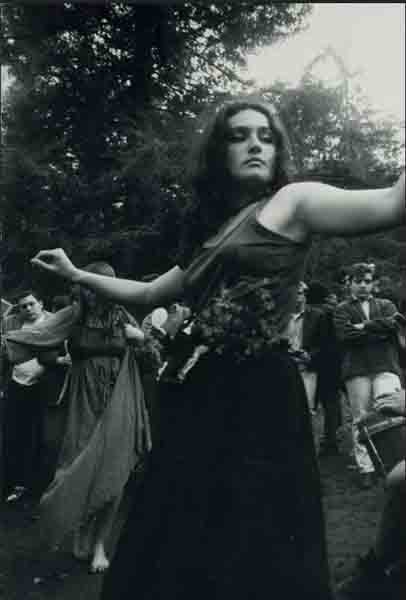
Between all these men finally a woman, Vivian Maier. Maier was a amateur street photographer who worked as a nanny in Chicago for 40 years. Her photographs remained unknown until they were discovered by John Maloof, a historian and collector only two years before she died. He said about Vivian Maier, “She was a Socialist, a Feminist, a movie critic, and a tell-it-like-it-is type of person. She learned English by going to theaters, which she loved. She wore a men's jacket, men's shoes and a large hat most of the time. She was constantly taking pictures, which she didn't show anyone.” Now look at her photos and see how great they are.

All these examples of great photographers, their journeys and their art can be of great inspiration to all of us. They show that art happens just in front of us, on our doorsteps, in our daily lives, we only need to start seeing it. And they show also that street photography is an important part of history, telling the story of time and people and sometimes they change the lives for some people too.
So, as mentioned in the earlier post, go out and snap away, make street photography part of your photography courses, go on photographic safari in your home town and find new Big 5 everyday!
Thank you Steve and Jeanette for the inspiration.
Keep enjoying photography!
Ute Sonnenberg for www.rohoyachui.com
Intuition Training Explained
19/03/13 08:36 Filed in: Intuition | Insights & Opinion

Intuition is not something we need to train for to have it; it is something that is always there, we only need to train ourselves to identify it and to utilize it.
Intuition is also often called gut feeling and without thinking about it we are using it or at least talking about it every day. How often do we have a gut feeling about something to happen and how often are we saying to our friends and colleagues “I knew this would happen”? Pretty much every day, about something or somebody in our personal life or work life.
Many leaders in corporate, or how we call them nowadays thought leaders, base their decisions on intuition. They might not call it like that for the outside world, but for themselves they know they do. That does not mean that they do not look at the numbers and it does not mean that they do not think businesswise, but their intuition lets them look at the right numbers, lets them point out numbers that are not quite right, although they look good. Their intuition lets them ask the right questions, lets them dig deeper where others don’t, their intuition helps them to make the right investments and alerts them when they should step out.
Many of them got to success and successful use of their intuition by falling and standing up, learning by making mistakes and by making right decisions to understand how their intuition talks to them. But even those who are already conscious of the value of their intuition, are mostly not using its full potential and those who are not yet aware of the benefits of their intuition are missing out great opportunities of success.
For the full use of ones intuition and to tap into its enormous resources, one can be trained. The training enables in essence the trainee to see and hear clearly what information is offered by his/her intuition and how to utilize it in daily life and work. And because intuition is something non-physical and non-visible, it helps a lot to make it physical and visible in order to see and hear what it’s trying to provide.
It is easier than it sounds to make something non-physical and non-visible, physical and visible, one only needs a camera. It is that strength of photography together with its easy access and easy handling what makes it the appropriate tool to train intuition. Add an accelerating and supporting environment to that and an intuition training of only 4 days is ready to jump start the beneficial use of intuition for personal and business purposes.
The intuition training enables business leaders of all trades to communicate on intuition level, turns team buildings into new qualities and achieves all that within the relaxed atmosphere of a photographic safari with a photography course, yet the photography course is a bit different.
The technical photography skills of the delegates are not of importance, the camera only needs to be digital. The daily routine is the routine of a photographic safari with a game drive in the morning and a game drive in the afternoon and the delegates will snap away like on a holiday, yet there is a big difference. For every game drive an assignment will be given to the attendees, an assignment only the unconscious is able to accomplish. This makes it easy for the conscious mind, because it can thoroughly enjoy the landscape and animals while the unconscious does the work. To see what the unconscious has worked out, the images will be uploaded back at the lodge and explored according to the assignment. Each assignment has the character of a learning cycle and guides the delegates step by step in identifying the language of their intuition and the information their intuition is providing. The learning cycles of each assignment are part of the bigger learning cycle, the 4 days event itself, starting with departure in Nairobi and ending with arrival in Nairobi on the last day. Within this greater learning cycle the delegates are taken into a different hemisphere, the intuition level and the northern hemisphere where the smaller learning cycles of the game drive assignments take place.
As a result of the intuition training the delegates are able to communicate without words, thoroughly on intuition level, or energy level, and to benefit from the information the intuition level provides to suit their needs in personal life and business. Success becomes sustainable, fueled by the endless resources of the intuition level, also called the endless resources of the unconscious level or energy level as it is called in quantum physics.
Photography is the innovative tool to easy access these resources for beneficial use. It makes photography the most potential tool of the future and the intuition level the never-ending resource of information and knowing to achieve aspired goals.
We all got access to these resources, lets use them.
Ute Sonnenberg for www.rohoyachui.com
Alfred Wertheimer: Photographing Nina Simon
18/03/13 15:06 Filed in: Photography & Art

Photographer Alfred Wertheimer was hired by Anne Fulchino, the person who hired him already for the famous photo series of young Elvis Presley, in the mid 60ies to photograph Nina Simon, the beautiful and uncompromising singer from North Carolina.
By photographing Nina Simon, Wertheimer employed his famously characterized “available darkness” instead of “available light” approach to photography, a way to approach and create contrast in an image. It is probably an interesting way to capture the soul of the subject in this case Nina Simon and a variation of what one learns in photography courses, yet its part of the same, the relation of light and darkness.
Nina Simon would turn 80 this year. Unfortunately she passed away already in 2003 in the south of France, but her songs are just as great as in the 60ies and the photographs tell a story of a special woman.
Often a photographer’s life and work story gets connected with other artist’s lives and work, like Wertheimer with Elvis Presley and Nina Simon and the Annie Leibovitz with the Rolling Stones.
One never knows for what purpose one is called to photograph somebody. The person might be the next superstar
Happy snapping.
Ute Sonnenberg for www.rohoyachui.com
On Photo Safari: Meet the Lion
16/03/13 14:40 Filed in: Photo Safari

On photo safaris probably the most popular events are the stops in the bush for coffee and sundowners. Being right there in the middle of the animals, overlooking beautiful landscape and enjoying a nice cup of coffee or thee. Usually we discuss photographic topics as we are on a photography course, play a bit with the cameras or just chat about anything. Its really nice.
On very rare occasions these stops include animal encounters, bigger animal encounters. The photo above was taken by my student Michelle de Souza when she was safely back in the vehicle and the lioness had made her way to inspect the things on the table. There was no moment that the people were in danger. The lioness was seen in time and all could get back into the safe landrover. Something like that is really very rare and it ended with the lioness walking away with the cookie box.
Happy snapping!
Ute Sonnenberg for www.rohoyachui.com
When Business Leaders Use Photography
15/03/13 12:28 Filed in: B2B

When business leaders use photography the first that comes to mind might be images of top managers on photo safari wildlife photography courses with big telephoto lenses enjoying their hobby during a holiday in Africa.
But there is more. Innovative business leaders use photography as tool in their daily work. No big zoom lens and heavy camera needed, the cell phone is enough or a nice little pocket camera. The photographs are the helping tool with problem solving, strategic planning, team buildings, leadership training, business coaching and endlessly more.
But how does it work? Pretty simple. Whatever question or task the leader/manager is confronted with and struggling to get hold of its essence and the innovative solution, photography comes in to help seeing. The problem or task gets visualized through photographs and the photographer/leader/manager does not even have to leave the office. Photographing with the right mindset will deliver all answers and unearth hidden from plain view solutions. Now they only need to use the information provided and implement solutions and results.
Sounds too easy? It is easy, yet a training is needed to use this amazing tool photography in that way. And from there you just go.
Imagine how easy things get in the office!
Happy snapping!
Ute Sonnenberg for www.rohoyachui.com
Philippe Petit: When Art Looks Effortless
13/03/13 12:38 Filed in: Photography & Art
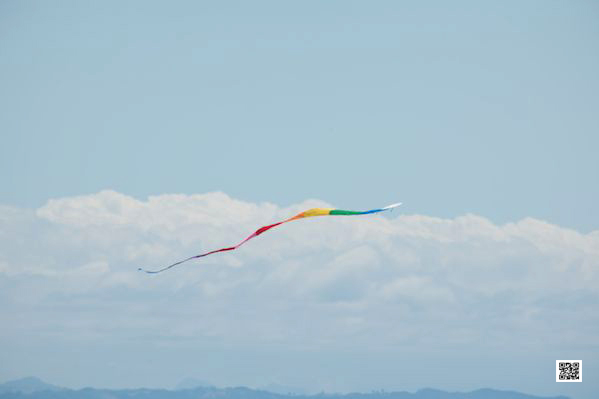
Philippe Petit is the high-wire-walker, famous for walking across the void between the two towers of the World Trade Center in New York in 1974.
“I knew as a wire walker, I would be a poet who writes in the sky. Art happens when you work millions of hours not to make it look hard but to make it look effortless. The beauty for an audience is to be inspired and awestruck because you made them forget that the wire was even there.” Philippe Petit
To make the audience forget that there is a wire, he works incredibly hard before the actual performance, but nobody can see that it is even work what he is doing.
Many great artists create a similar experience like for example the great ballet dancer Nureyev or in music e.g. Sting. Their performances seem effortless.
That can lead to the wrong conclusion that they don’t work and shouldn’t earn money and definitely not those huge amounts, because it doesn’t look like hard work. The same principle applies to any craftsmanship or work that is wonderfully done, from the gardener to the business leader and the painter and the housewife. Behind the appearance of effortlessness hides the most difficult and hard work, making it look effortless itself is hard work.
What does that mean for photography and photographers? One can often hear opinions that photography is no hard work, because it’s only a click on the shutter. When wildlife photography is presented its quality is often explained with the time the photographer had to spend to get the image and the difficulties he/she experienced in the bush. Other photographic artwork gets explained and valued with the hours the photographer had spend behind the computer to make it look like that and the more hours the more worth. But somehow nobody ever says about a photograph that it is great art, because it looks effortless. Is it, because there is controversy about what is art in photography or because people think that the other photographer only got lucky?
I don’t know, but I do know that every artist goes through a creative process with ups and downs and struggle and hassles, a painter, a musician and a photographer. And one can see the difference in the photographs, the story of the photographer is in them and photography itself is the effortless medium to visualize the efforts of the artist.
A creative journey in short is a photographic safari or a wildlife photography course. It’s the photographer and his/her camera that embark on the adventure and the pictures tell their story. The quality of the photos of the first day is different from the photos of the final day, yet they were taking with only a click on the shutter.
Keep working on effortless looking photography. It is not easy to get there, but when you make it, the results are mind-blowing.
Happy snapping!
Ute Sonnenberg for www.rohoyachui.com
Innovative Brainstorming with Photography
14/03/13 12:34 Filed in: B2B
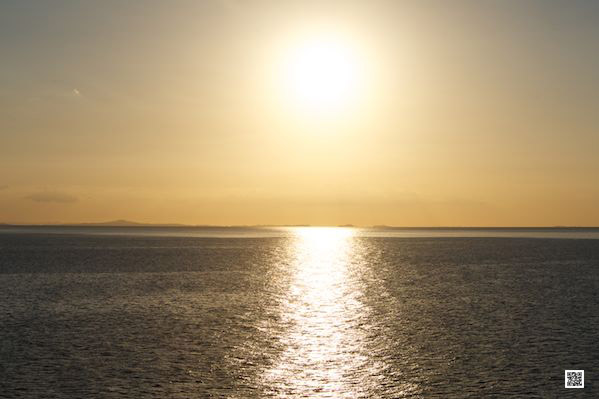
Brainstorming is often the way we try to find ideas regarding a certain project, a new product or for problem solving. We use it in business, in personal life and for creative processes. And we usually talk a lot while brainstorming, using several techniques to tap into our creativity to come up with innovative ideas. Also images are involved, but the semantic plays a major role.
How about using only images to brainstorm? A team is brainstorming about lets say a business issue and using entirely photography to unearth problem solving ideas and concepts. Each member of the team visualizes an idea through photography and shows the image to the colleagues. All team members look at all images, “digest” what they see and take the ideas further; visualizing what potential they see in them. At the end of the brainstorming session the essence of all ideas is left on the screen in form of one or more images for further use to solve the business issue.
These sessions are very efficient and allow leaders to guide their teams to innovation in an intuitive way. They work also for issues within teams and can be used in team buildings e.g. in combination with photographic safari excursions for one or more days. The environment will contribute to the success. But in essence they work anywhere, in meeting rooms in offices, on planes, at conferences and anywhere else.
Try it and by the way they are fun too.
Ute Sonnenberg for www.rohoyachui.com
Annie Leibovitz: Reflection
11/03/13 09:03 Filed in: Photography & Art

Sometimes a photographer needs moments of contemplation to reflect on the work she/he is doing, the photography she/he is doing and how happy one is with what one does. In this video a young Annie Leibovitz is reflecting on her portrait work, how she feels about it and how she experienced photographing John Lennon on the day he was killed. She expresses the wish to have time to be out, only she and her camera for two or three weeks, just to photograph what she wants, sees and loves.
Isn’t this exactly the dilemma when the photography business goes well for a photographer that suddenly there is no time anymore to just enjoy photography in its pure and essential way, just the photographer and the camera and no clutter around? This might be the moment that photography becomes again a hobby for the photographer, as funny as it might sound. And the photography guide starts craving a photographic safari just for him/herself and a photography teacher wishes to attend a photography course just for him/herself.
It is probably the danger when making your hobby and passion your work that you might lose the passion and love for what you are doing. I don’t know how Annie Leibovitz feels about this today, yet its great to hear how she felt about it at a younger age.
Keep having fun and joy when snapping away! Keep listening to your heart.
Ute Sonnenberg for www.rohoyachui.com
ePhoto Book: Sensation
10/03/13 10:56 Filed in: Photography & Art
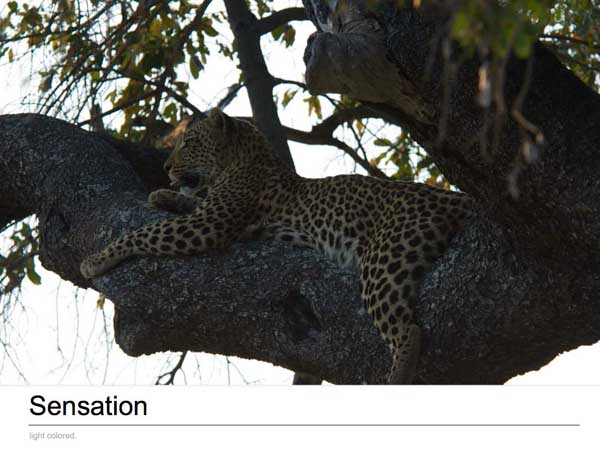
The Okavango Delta in Botswana is one of the most beautiful destinations for photographic safaris. The light is just sensational and even with an entry level photography equipment one can take the most amazing pictures.
Images from photo safaris to the Okavango Delta can always be identified easily, the light is different from any other place and photographers heaven.
The images of this book were not taken during a photography course, just when traveling for photo fun to the delta.
Click for the ephoto book here.
Enjoy!
Ute Sonnenberg for www.rohoyachui.com
On Photo Safari: The Speed of Memory Cards
09/03/13 10:54 Filed in: Photo Safari

When new cameras are announced, the speed in frames per second is one of the very interesting features. We want a camera to be fast to capture animals in motion. Nothing is more frustrating on a photographic safari than pressing the shutter and nothing happens. Sometimes the missing focus is the reason, but often it is the speed. And very often it is not even the camera that slows down the process; it’s the memory card. You can have a fast camera, but it will not be able to use its entire abilities when the memory card is to slow in processing the images. Then you see the message “buffering” and the lion kill is just happening in front of you.
Be conscious about that when purchasing memory cards. Always ask what card suits best the abilities of the camera. When you are attending photography courses make it a topic to understand better what memory card to use when and for which camera. It will make you a happier photographer, shooting away at great sightings in the bush and elsewhere.
Happy snapping!
Ute Sonnenberg for www.rohoyachui.com
Bill Brandt: Pioneer of Street Photography
08/03/13 09:24 Filed in: Photography & Art

In the age of cell phone cameras probably all smart phone users are street photographers, snapping around wherever they are, collecting an amazing body of work about our society.
In the early 30s of the last century when street photography was not known, the British Photographer Bill Brandt started documenting British life with his photography. Not only the subjects of his photography have a great value, also his eye for light and composition is amazing.
Maybe there should be an art-street-photography part in every photography course and should the students go out on photographic safaris through their town or village to capture daily life in a stunning way.
Be inspired and enjoy snapping arty street photos!
Ute Sonnenberg for www.rohoyachui.com
How Photography Inspires
07/03/13 14:44 Filed in: Photography & Art | B2B
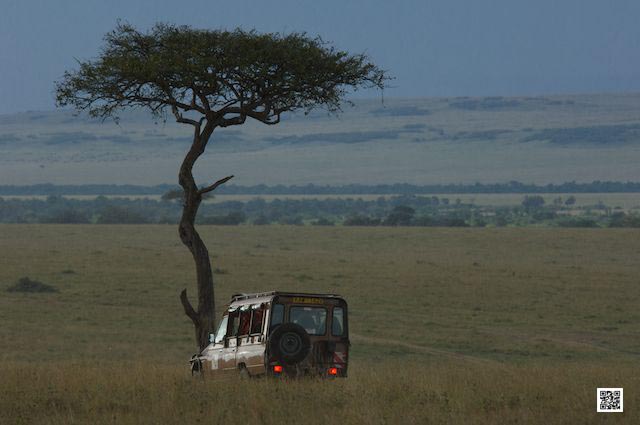
Photography has become a part of our daily life, to capture snap shots of the children and pets, to communicate, archive, explain and inspire.
It inspires not only our private life, but also our work life and it will do even more in the future. Leaders will visualize the future of their company, finding solutions by utilizing photography; teams will become more aligned by joining team buildings with photography; communication will be visual and misunderstandings will be minimized and even success will be visualized with the help of photography.
But there is more. Photography is and will be not only our everyday tool, it also inspires us to learn, grow and invent. It is at the root of innovation and images carry innovative ideas. Photography is fun and adventure and photographic safaris might be the only shooting left in the bush and conservation blooming. It is technology curiosity with constantly new evolving photographic gear and photography courses igniting art and joy.
Photography is inspiration. Let it inspire you!
Ute Sonnenberg for www.rohoyachui.com
Ansel Adams: On Photo Safari in America
06/03/13 14:43 Filed in: Photography & Art

Who wants to walk in Yosemite? Who wants to go on a photographic safari through America? Who wants to attend a photography course presented by a great master of photography?
If your answer is yes, me, then you should visit the Ansel Adams exhibition in London. The show is on until April 28th in the Maritime Museum in London. And if the journey to London would be a bit too far, there is a catalog available online to enjoy his great work.
Learning form old masters is not only beneficial for painters; it is also a wonderful source of inspiration for photographers.
Be inspired and enjoy learning!
Ute Sonnenberg for www.rohoyachui.com
Conservation, Photography and Fashion
05/03/13 09:10 Filed in: Photography & Art
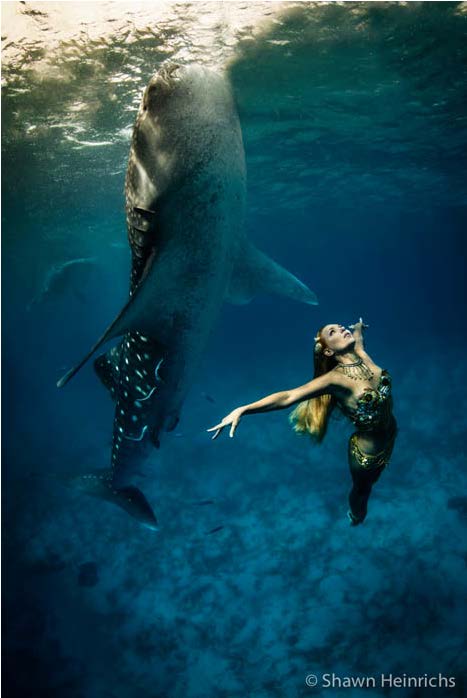
Photographic safaris are helping not only to create jobs and to bring income to communities in Africa; they also play an important role for conservation. Where people go on safari to photograph wildlife, the animals are safe and all is done to protect the wildlife and their environment. The increasing number of guests who do photographic safaris and follow wildlife photography courses helps to ban hunt in precious areas and to increase for example the number of lion in the wild. Ecotourism and photography work well together. They are the future for the wildlife areas, they help to protect and create a nature minding conscious in the communities and in the first world countries. The photo camera replaces the rifle and wildlife is preserved.
Fashion is not that often mentioned as a major contributor to conservation, but there are great examples like the fashion shoot of Shawn Heinrichs and Kristian Schmidt with the intention to help protecting the whale sharks. Whale sharks are endangered, but most people don’t know. These incredible and peaceful animals were posing together with models for a mesmerizing fashion shoot of the most beautiful kind. The community in the Philippines where the photographs were taken has developed a small whale shark tourism. Hopefully they will both have a bright future, the whale sharks protected and safe and the community with a stable income and safe as well.
Read more about the fashion shoot in the original post from PetaPixel.
Ute Sonnenberg for www.rohoyachui.com
Gregory Heisler: Master of Portrait Photography
04/03/13 13:57 Filed in: Photography & Art

Gregory Heisler’s portraits were TIME Magazine covers, show world leaders and in many ways impressing people. What is it that makes his portrait photography different and mesmerizing?
When you visit his website you will see that he categorized the portraits like quiet, vibrant and dynamic. Each word an attempt to reflect the essence of the photograph, the essence of the person photographed.
Great portrait photography captures not only a picture of a person, it captures a personality in all its dimensions. And Gregory Heisler is doing that very well. Look at his images and try to feel how he connects with the person he photographs. Then apply it to your own photography, maybe bring it up in a photography course and practice especially the connecting and personality reading part of portrait photography. You will learn to work consciously with your intuition, creating amazing portraits.
Happy snapping!
Ute Sonnenberg for www.rohoyachui.com
ePhoto Book: Lamu
03/03/13 11:21 Filed in: Photography & Art

The island of Lamu is located just off the north-eastern coast of Kenya. It is the oldest Swahili settlement of the country and with its Arab architecture it is a wonder-world for photographers.
This photo book lets you travel to Lamu and takes you on a photographic “safari” through the streets of this World Heritage Site, a very special place for photography courses, lovers of colorful cultures and travelers to the tropical regions of the world.
Enjoy Lamu. View the book here.
Ute Sonnenberg for www.rohoyachui.com
On Photo Safari: Moving Objects
02/03/13 11:20 Filed in: Photo Safari

On photo safari probably the most exciting part is to photograph moving objects, like a leopard jumping in a tree or lion cubs playing in the sun. As long as the lion cubs are playing in the sun everything is nice and easy. The light is great and the images will look lovely.
But as soon as the leopard moves around in the tree and with every step he makes the light changes, it becomes a photographer’s challenge. A leopard moves fast and light changes fast too. That means fast changing settings back and forward, keeping the focus point constantly on the leopard where you want it to be, checking ISO and exposure, not forgetting what you all changed now that he walks into bright light and so on. It is exhausting and wildlife photography course attendees all agree that this is a very challenging task.
But photographing moving objects is also great fun and it often results in stunning arty images, like half blurred horses in the last light of the day or a herd of buffalo like an abstract painting in the first light of the day. Movement is great and often lives its own life in our photographs, surprising us with its mind blowing results and let forget the trouble we went through to get them.
Inspired? Enjoy the fun!
Ute Sonnenberg for www.rohoyachui.com
How Photogrpahy fixes Things
01/03/13 09:39 Filed in: B2B | Insights & Opinion

Sometimes we enter a room full with people and we feel that there is somehow an undercurrent, something is going on, although everybody seems to enjoy him(her)selve and having fun. This situation occurs also in meetings and work teams, but it is not clear what it is. Something is not right, but one cannot say what it is.
One-on-one conversations are planned to find out what is going on, but they don’t unearth the real reason of the disturbance in the team. The undercurrent develops to be a surface current and irritations pile up. Still words cannot fix it, there is something nobody is talking about or nobody is conscious that it is there. The situation has become very unpleasant. The team can hardly function.
What now? Photography can fix it. What the mind is not able to tell, the unconscious is more than capable to show, because it knows where the problem is and how it can be fixed. Photography becomes the voice of the unconscious. It helps teams to find out what they are struggling with, helps leaders to find the right way in guiding their teams and it is at the end also fun and makes it a very pleasant experience. Team buildings with photography and leadership training with photography are only two ways in helping teams through photography. There are many more.
And what works for work teams works also at home for families, friend groups, dance groups, football teams and wherever people would like to fix unpleasant situations.
Try it. It feels so good when its solved.
Ute Sonnenberg for www.rohoyachui.com
Leadership: How to Produce Ideas utilizing Photography
28/02/13 12:00 Filed in: Photography & Art | B2B
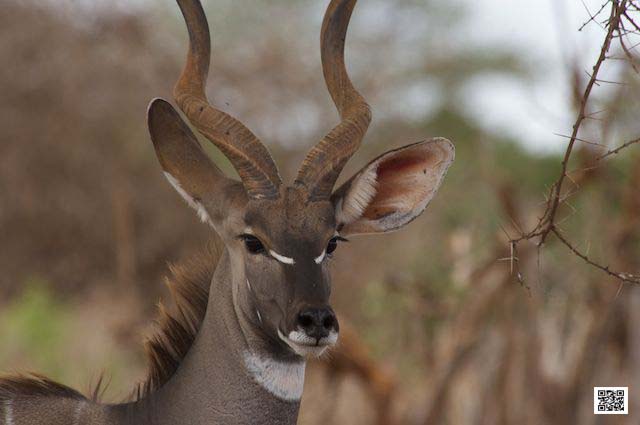
James Webb Young published in 1939 a book with the title “A Technique for Producing Ideas”. He was a cross-disciplinary thinker and his book mentions 5 essential steps how ideas are produced:
All five steps are executed by the brain and at the end an idea rolls out. This process is in its physical being non visible and non physical, because it happens in the maze of our brains. We might visualize material and ideas for ourselves to understand it better, but the images are just in the brain.
That can sometimes be a problem when working in teams to produce ideas. Words cannot explain what the processes in your brain are doing and what you see, and this is the same for every member of the team. Irritation, frustration and misunderstanding are starting to undermine the process and its getting more difficult to come up with the right ideas.
This can be changed. Photography is the all-in-one device for producing ideas. Material is captured in images and by capturing it, it is at the same time digested and already processed by the unconscious. Now all images hang on a wall or are lying on a table. After looking at them for a while the people take pictures of the pictures. One or several of them are the a-ha moment and the moment that the idea meets reality at the same time. An idea was born.
Photography cuts down the process to its essence. By doing that it saves a lot of time and energy, gives leaders quick access to solutions and teams more resources to work with. It works in all sorts of settings like marketing sessions, leadership training, innovation sessions, product development and actually anything one is looking for ideas, also little (or not so little) hassles like how should I present myself in the job interview tomorrow.
Got it? Try it. Enjoy!
Ute Sonnenberg for www.rohoyachui.com
Read more about Webb’s book here.
Mario Testino: In Your Face
27/02/13 11:59 Filed in: Photography & Art

In Your Face is not only the name of fashion photographer Mario Testino’s first ever photo exhibition in the U.S. that took pace at the Museum of Fine Arts in Boston, it is also what his photography really is.
One can recognize his photographs immediately and for my feeling also his Italian descent. The composition, the movement, the beauty, just like energy coming out of the photographs, each one a wonderful piece of fine art photography. They somehow grab you and won’t let go anymore and that’s what art is about. You keep looking at them.
In your face or rather in your heart, that’s what a photo does, all photos do and what photography courses should teach the students, that their photographs touch hearts and mesmerize minds and turn into art.
Keep going, snapping and having fun!
Ute Sonnenberg for www.rohoyachui.com
Do we need Fotobars?
26/02/13 11:58 Filed in: Photography & Art

Polaroid has just opened its first Fotobar retail store in Florida to be followed by more stores in major cities in the US. People can go there and upload their Instagram or Facebook photos to a workstation, edit them and order prints with the choice of several print materials and frames.
I thought photography-loving people are doing that anyway already from home. Upload images, edit and order prints online, if they want their art to be a nice present or for their own home. For what reason a store to go to and do it instead of easily at home?
I don’t know. There must be some deeper reason behind the store idea that is only known to the Polaroid people. The good thing is that these stores also offer space for photography courses, to display art and for private parties.
Maybe the parties will be the actual business there
Ute Sonnenberg for www.rohoyachui.com
ePhoto Book: El Sentimiento
24/02/13 11:55 Filed in: Photography & Art

Spain is a beautiful country and Andalusia is magic. It is a place of great emotions, history, nature, people, beauty and horses. Traveling for photography is such an amazing experience. It gets to the photographer and to the subject as well and it creates memorable images of special journeys.
El Sentimiento is a photo book about Andalusia, a journey to special places.
Enjoy! View the book here.
Ute Sonnenberg for www.rohoyachui.com
On Photo Safari: Sunset and Sunrise
23/02/13 11:53 Filed in: Photo Safari | Photography & Art

The moment the sun appears on the horizon and the moment the sun disappears on the horizon are magical moments of a photographic safari. Sunrise and sunset are the moments we love to capture, but sometimes they are also the moments that frustrate us the most when the image is not what we wanted it to be.
Photography courses teach us about contrasts and that we need them for great images and that applies to sunrises and sunsets as well. The best sunsets and sunrises are the ones with clouds. The sun (the light) needs something to shine on to be seen and clouds are ideal. They become the carrier of the sunlight and the light can display its amazing colors that make the event so mesmerizing.
Another great “tool” to create a beautiful sunset photo are trees. That makes photographic safaris in the Masai Mara so fascinating with their single umbrella trees dotted over the Great Plains. The sun setting behind such a tree is just amazing.
But what works in the bush works also at home. No matter if you are in a big city or in the countryside, choose a spot where the sun can shine on something, a cloud, a tree, a building, a person or on water. As long as there is a medium to carry the light, you can create great pictures.
Seeing it already in front of you? Try it and enjoy the magical moment.
Ute Sonnenberg for www.rohoyachui.com
How Management Teams can Benefit from Photography
22/02/13 12:54 Filed in: B2B

Communication can be a challenge even when all speak the same language, work in the same team and on the same project. Misunderstandings occur constantly, because words are the poorest kind of communication. Body language is telling already more than words, but how to communicate business information through body language? Pretty much impossible, but probably looking quite intriguing when watching people trying it. What else can be used? Well images, visualizations and photographs are an amazing tool to communicate without misunderstandings.
It works for families and it works for management teams. The wife is looking for a new kitchen. She goes to different stores and from the kitchens she likes she takes a photo with her smart phone. At home she shows it to her husband and together they make a choice which what kitchen to proceed. It would have been impossible for her to explain her husband with words how the kitchens look like. He would have created images in his mind not matching the actual kitchen, but with the images it was clear immediately.
The same process works for business teams even if the subject is a situation within a team. Everything can be visualized and captured in photographs. Teams start understanding each other and misunderstandings become rare. Energy and time is saved, no endless and tiring discussions with no result, time is used efficiently and clear results offer solutions not more problems.
Photography for business is a strong tool and it is the future.
The future is now.
Ute Sonnenberg for www.rohoyachui.com
How to Use Intuition in Photography
21/02/13 12:53 Filed in: Photography & Art

It is most likely an open door to say that intuition is the heart of photography, but it’s sometimes good to have a reminder.
Where the ones are who easily enjoy intuition and photographic heights there are also the others who get lost in technical details. Not that the technical side of photography does not involve intuition, but it is mostly the arty part that requires it for compositions with light.
Photography courses pay attention to composition and working with light, explaining the rule of thirds, but might not explicitly mention the important role of intuition in this process or just assume that photographers are using it anyway, which is partly true. So, how can a photographer consciously utilize intuition to create great images? Very simple, by following the light. The light does not only determine the camera settings it also creates the compositions. And if you struggle seeing compositions just look out for the light, what it’s pointing out for you and right there it is, the composition you were looking for.
One might think, but this is just looking for the light and got nothing to do with intuition, but this is not quite true. Intuitively we are looking for the light and it goes wrong with our images when we try to ignore what the intuition is telling us. Imagine you are out in the bush on photo safari. It is about 9 am and the best light is already gone. Now the light is bright and harsh. You remember what you learned and you try to photograph with the light, but your images look dull. Suddenly you have the feeling to turn around and photograph into the light and yes, there are still contrasts and your images look much better. So, most likely not consciously you followed a feeling triggered by the light and you got it working. And this is just one small example how intuition can make a day photographing in the bush a great one.
Inspired? Try it and enjoy snapping!
Ute Sonnenberg for www.rohoyachui.com
How Your Camera is Your Grounding
20/02/13 12:52 Filed in: Photography & Art

It might sound a bit spiritual when talking about grounding, but well photography is something that takes you to high spirits and in order to not get lost up there, grounding is very important.
Do you know of these moments of frustration when you tried to photograph something and your camera didn’t do what you thought it should do? In those moments unfortunately very often not the camera is the problem, but the photographer. Your camera only brings you back into reality and tells you that it needs light to see and focus, just as your eyes, but you had just forgotten, because it looked so great.
Your camera gear makes sure you stay in touch with the reality of the environment you are shooting in. It tells you through the images what’s going on and even includes advise what to do to make it work. One just got to see and listen. Well that sounds easy, but it is not. You got to know your camera to understand what it’s telling you. So a photography course with the basics can do no harm. Better to learn how to operate your camera at home than missing great shots while traveling or when being on photographic safaris. Imagine a lion kill and you don’t get it right.
Ground yourself in photography and learn about your camera. A good grounding is the solid base for soring in photographic heights.
Happy snapping!
Ute Sonnenberg for www.rohoyachui.com
Photo Safari: Hunting Banned in Botswana
19/02/13 12:50 Filed in: Photo Safari
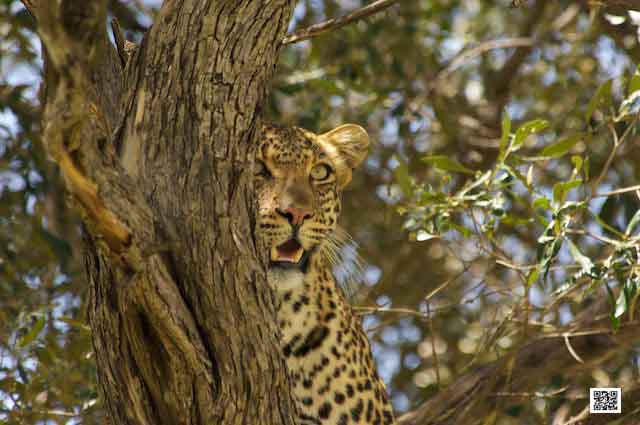
In November 2012 Botswana’s President Ian Khama, gave a speech wherein he announced that by the end of 2013 trophy hunting would no longer be allow allowed in Botswana. He said that "Next year will be the last time anyone is allowed to hunt in Botswana and we have realized that if we do not take care of our animals, we will have a huge problem in terms of tourism."
Great. Photography won from trophy hunting. Photo safari won from hunting safari and it was about time. The number of lion had dropped dramatically and other animals like leopard and elephant were also only to often licensed to be killed. But the peaceful adventure of photographic safaris and the worldwide photography enthusiasm of billions of photographers had turned the table on the hunt. Photography has become a peaceful force of conservation. Cameras replace the rifle and the animals stay alive. The photographer goes home with great image-trophies and
And other countries seem to follow Botswana’s example. Zambia has banned trophy hunt, but so far temporarily and Zimbabwe is considering doing the same until final decisions are made. The fine print of the Botswana ban on hunt is not known yet, but it is a major step in the right direction.
Thanks to eco tourism and photography lovers wildlife is preserved. Photography has become a movement.
Keep moving!
Ute Sonnenberg for www.rohoyachui.com
Cindy Sherman: Self-Portrait of a Woman
18/02/13 09:33 Filed in: Photography & Art

Who is Cindy Sherman?
Cindy Sherman is a photographer, a very successful photographer with a unique style. She steps in front of the camera and takes self-portraits, yet it’s hard to know how she looks like, because she transforms into stereotypes of women in everyday situations, yet the women are not Cindy Sherman, or are they?
There is always the photographer in the picture, if he/she stands in front of the camera for a self-portrait or behind the camera, the photographers energy is there and therefore the images carry a photographers signature … even if hey are not signed.
Cindy Sherman is a remarkable person and photographer as her images show and art collectors seem to love it. The image above called “Untitled #96” was sold in May 2011 for USD 3.8 million.
Maybe the secret of her photography’s success is the mystery of who is Cindy Sherman? that every image seems to ask.
Read more about her in Phoblographer.
Ute Sonnenberg for www.rohoyachui.com
ePhoto Book: L'Amour Provence
17/02/13 09:32 Filed in: Photography & Art

The Provence is probably the most beautiful part of France.
Enjoy a photographic journey through this intriguing region of stunning nature, traditions, people and the horses of the Camargue.
Be inspired. View the book here.
Ute Sonnenberg for www.rohoyachui.com
On Photo Safari: The Photographer
16/02/13 09:30 Filed in: Photo Safari
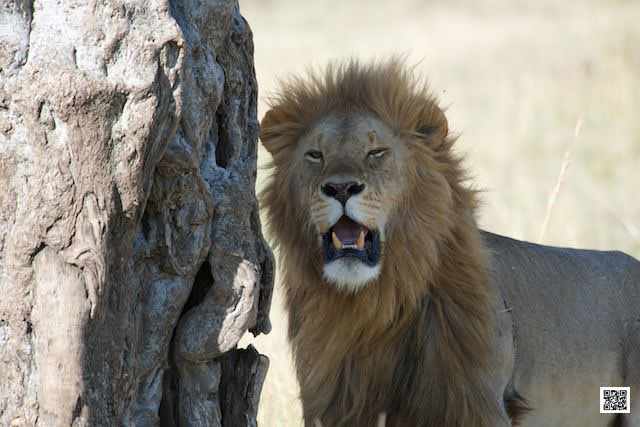
There is lots of attention for camera gear when being on a photographic safari, what lens to bring what settings to use, but there is an essential factor that is often forgotten, the photographer and I don’t mean the ability of the photographer to operate the camera, its something more subtle.
Photo safaris take the guests out on open 4x4 jeeps (strongly recommended to go to places where they are doing it like that and with only 6 people on the vehicle). That means there are two people in a row and if you are lucky you got a row for yourself. Experience from wildlife photography courses taught that it proofed to be hard to get the photographer moving in his/her row, really moving not only leaning over. Wildlife can be on either side of the vehicle or move to the other side of the vehicle and in order to get the best shots the photographer should move too, but often is glued to the spot.
How is this possible? Think of yourself how often you were standing on a spot photographing a scene and getting annoyed that people were walking somewhere on the side or other obstacles suddenly turned up. Did you think of moving yourself to a different spot to get the good shot? One reason to not move is the composition we see just there, but there is more, especially in the bush or other challenging environments. We are feeling comfortable and we like to keep it like that, moving seems then uncomfortable and we resist, stick to where we are and don’t move.
But this is just the point, one got to be willing to move/change in order to get great results and discover different perspectives. Photography is also a physical activity and means physical efforts for the photographer, although its tempting to forget about that, but its crucial.
Keep moving! Keep having fun!
Ute Sonnenberg for www.rohoyachui.com
How Intuition drives Photography
15/02/13 09:29 Filed in: Intuition | Photography & Art

What is intuition? When you know that you got to go to the park today to get the best pics of the swans or that you move just a bit more further to get the better composition of the house or that you just know that you will see a lion today on your photographic safari. You just know, your gut feeling tells you and it always proofs to be right, doesn’t it?
Where would we be in photography without our gut feeling? Would we even go on photographic journeys or to photography courses without it? What makes us creating art? Isn’t it all intuition, our gut feeling?
When do we have success in art and photography? It is the image that you very clearly remember taking in a split of a second and something made you taking it. And you love the image forever, isn’t it that way?
Trust your intuition and keep going.
Happy snapping!
Ute Sonnenberg for www.rohoyachui.com
How Photography will be the Innovation Tool of the Future
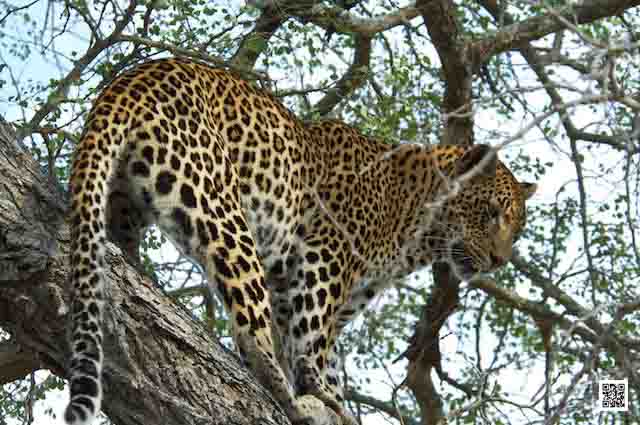
At the time that quantum physics was evolving and the scientists were wondering what the discoveries they made would mean for humanity, one of them, David Bohm, started collaborating with Martin Buber, the Austrian philosopher. Bohm wanted to find answers in philosophy how discoveries like “everything is made of the same energy” and “everything is connected to everything else” explain the universe and our role in it. He worked with Buber on his book “I and Thou”, yet he realized that he didn’t find all answers he was looking for. David Bohm concluded that it needs the arts to find comprehensive answers, that it would need the triangle quantum physics, philosophy and art to answer the questions of the universe.
The answers he was looking for might be on their way. Back in his time art was something few people did; nowadays art is something billions do. With a camera in every cell phone pretty much everyone is doing art through photography. It doesn’t need any photography course to wield this amazing tool, one only needs to press the shutter and it goes. By having a broad majority of people doing it, photography has become the connecting art, producing images and answers continuously.
Now, one only needs to learn to read the images to find the answers, connecting quantum physics, philosophy and art in an innovative synergy to conquer the challenges of leadership and life. Visualizing quantum physics and philosophy is innovation at its best, unique, powerful and ready to serve humanity. Next to numerous possible scientific and everyday life applications, photography becomes the key to continuous success in business.
Photography is what David Bohm was looking for. His intuition was right, that the arts were the link.
Ute Sonnenberg for www.rohoyachui.com
Eames: Power of 10 - An Art Project
13/02/13 09:27 Filed in: Photography & Art

In 1977 Ray and Charles Eames created the incredible video Powers of 10 and unfolded for the viewer the gigantic dimensions from the universe on the widest scale to the inside depth of a cell on the smallest scale. This iconic video sparked 40 artists to create a 21st century version, each artist creating a segment in his/her own way.
The project is close to conclusion and promising a very inspiring result. Its going to be interesting what innovative approach was chosen by each artist and what role photography is playing in the result. It must be in, no question, but how and how can the project be used in art classes and photography courses, what will it contribute to photography and what will it teach photographers.
Read more about the powers project here. Watch the iconic video from 1977 here.
Be inspired!
Ute Sonnenberg for www.rohoyachui.com
Carl Zeiss Lenses - A Treasure Passed On
12/02/13 09:24 Filed in: Photography & Art

Carl Zeiss Jena, this magical company of incredible camera lenses in the middle of Germany, surrounded by beautiful forests and touched by the arty spirit of Weimar, where Geothe, Schiller, Liszt and Bauhaus had their home. Their lenses must be magic.
And they are. One of the very famous camera lenses made by Carl Zeiss is the famous Planar 50mm f/0.7, used by Stanley Kubrick in Barry Lyndon, designed by Dr. Erhard Glatzel. Dr. Glatzel passed away and his grandson inherited his camera bag, with a content no camera bag in the world has and with a big surprise.
There where suddenly two lenses that nobody knew about, the Distagon 25mm f/1.4 and the Distagon 18mm f/2.8. They are prototypes and never went into production. Example images can be seen on the original forum post and images of more lenses are available via PetaPixel.
Well, the lenses are not very practical on photo safari, but it would be just amazing to work with them during photography courses to see their magnificent qualities in the challenging light of the bush. Maybe one day the grandson will take them there to give it a try, who knows.
Anyway, its great that there are still surprises in camera gear and special lenses evolve from somewhere.
Keep enjoying photography and maybe have a look into old boxes on the attic, a surprise could be waiting there for you.
Happy snapping!
Ute Sonnenberg for www.rohoyachui.com
How to Learn from Manuel Rivera-Ortiz
11/02/13 09:22 Filed in: Photography & Art
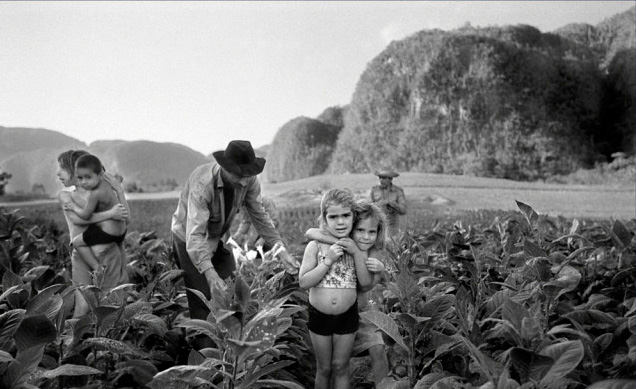
Manuel Rivera-Ortiz is a photographer known for it’s intriguing documentary style photography one connects with the Magnum Photographers.
He was born in Puerto Rico and came with his father and siblings to the United States when he was still very young. Rivera-Ortiz was a good student and worked for years as a journalist for newspapers. Not that long ago he caught the photography bug and since then he inspires with his fine art photography work to address social issues with the camera in a beautiful way.
Rivera-Ortiz only surrendered to photography in 2001 and in 2010 he started the Manuel Rivera-Ortiz Foundation for Documentary Photography and Film, what a wonderful success story.
What does that teach us? Live your dream.
Ute Sonnenberg for www.rohoyachui.com
ePhoto Book: Leopard Land
10/02/13 09:18 Filed in: Photography & Art
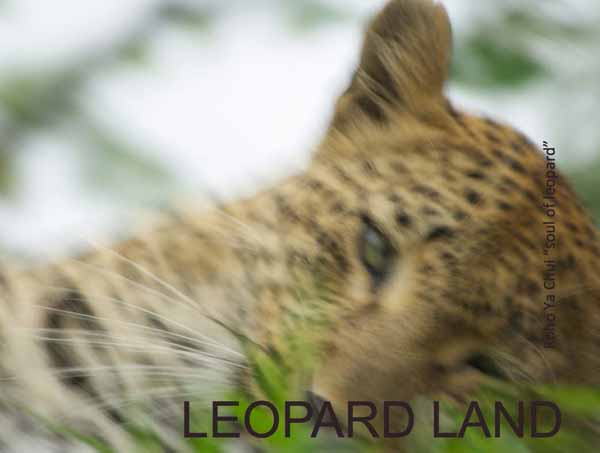
It is a place like in a fairy tail, yet it is real, leopard land. This place in the South African bush is heaven for photographers, wildlife lovers and an ideal destination for photographic safaris.
Curious? Have a look here.
Ute Sonnenberg for www.rohoyachui.com
On Photo Safari: The Beanbag
09/02/13 09:17 Filed in: Photo Tips

The beanbag is an item made of fabric, looking like a small pillowcase, and is filled with beans, at least it was.
Nowadays beanbags can be filled with rice or lighter synthetic fillings and can have several shapes. There are beanbags that stay nicely on the sill of car windows on metal bars in safari vehicles or on the knee of the photographer. They are multifunctional and extremely helpful on photo safari.
We photographers are not able to hold our camera (with or without zoom lens) steady enough to create shake-less images. We need help. For night photography it has to be the tripod, but on photographic safaris the tripod is not very practical. The beanbag is much better. You can put it everywhere, it keeps you completely flexible and mobile and the images will be sharp. Just rest the camera lens on the beanbag and shoot away. Well, we seem to like to have control about our camera and it is always an item during the photography courses that it is difficult for us to let go and trust the beanbag, but we can. The beanbag is doing the job just great. Try it. It works perfectly.
Beanbags can be bought in all sizes and shapes. They are also easy do be made at home from a small pillowcase or a piece of clothe.
Happy beanbagging!
Ute Sonnenberg for www.rohoyachui.com
How Intuition Training Helps
08/02/13 08:32 Filed in: Insights & Opinion | Intuition
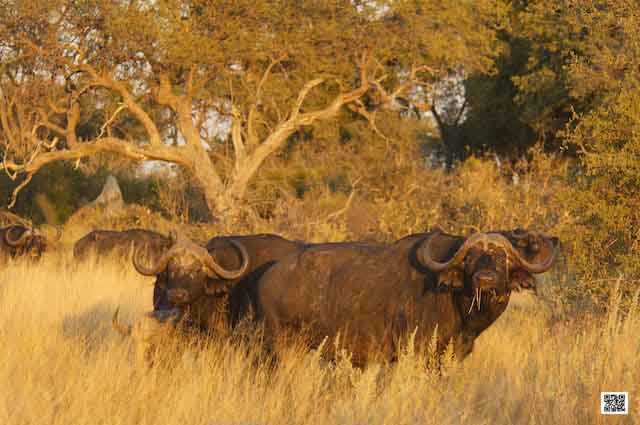
Being a leader in business is a lot about spreadsheets, meetings, challenging decisions, guiding and success, yet it is also is a lot about intuition. Intuition is even an essential part of leadership and the most charismatic leaders like Steve Jobs work(ed) consciously with what intuition tells them. But how do they know that the information is genuine and not noise steering them in the wrong direction?
Some of them learn by doing, taking every now and then the wrong turn and go back onto the path, knowing better next time. Others turn to psychics to get confirmation of what they sense themselves. But there is another way of learning to utilize intuition and being able to get trustworthy information. The reliable tool is photography.
Photography visualizes and materializes what intuition as something on the non-visual and non-physical energy (or intuition) level offers us as enormous information resources. One learns how to tap into this information resource and extract the information needed for a certain business task. Photography is the easy accessible tool to do that; one needs only learn how to use it.
Intuition training helps with that. It works like an incubator and allows within a short, yet intense session to get the basics and to apply the learned immediately in daily work and life. It might sound in the first place like a photo safari with photography course, but this is only how it appears at first. It is an amazing process of gaining access to the immense resources of the intuition level, ready waiting there for us to use them.
Sounds a bit vague? Possibly it does, but it is not, it is very real and we are using it everyday mostly unconsciously. Got a gut feeling?
Ute Sonnenberg for www.rohoyachhui.com
Don McCullin: Photographing Hard to Face Reality
07/02/13 08:29 Filed in: Photography & Art

How must it be to be Don Mccullin, photographing hard to face reality, capturing iconic images that go under the skin and stick with you for life? Don Mccullin reflected earlier on how it is to have a photography career filled with haunting images and now there is the documentary “McCullin” with insights on his life as a war photographer. Have a look at the official trailer here.
Can a photographer learn to do what he did? Can a photography course prepare the students for what they need to do this work? Maybe not. Maybe there is not even a photography course that can prepare one for what one might see on photo safari during the Great Migration in the Masai Mara, yet we manage when facing these moments of life and death. Maybe the camera helps to create a distance and at the same time to capture the moment in all its dimensions. We can give what we saw a place and that makes it bearable, although the moment is captured forever in the picture and in us.
Ute Sonnenberg for www.rohoyachui.com
Photography: Camera Gear's Worth Life
06/02/13 08:28 Filed in: Photography & Art | Photo Tips

What are you? An early adapter or rather waiting and see what happens? It is easy to be carried away on the hype over a new camera model or fantastic new gadgets of camera gear. Photography offers so many opportunities to play and one just wants to have the thing everybody is raving about. But does that make sense? Or rather doesn’t that hurt your wallet?
Have a look on what Roger Cicala has put into a graph about the worth of camera gear during its lifetime:
“For several years now, my occupation has been to basically read everything written about new equipment. In order to help everyone save time, and to save the Internet millions of electrons, I have developed a concise method to summarize all such discussions for all newly introduced imaging equipment.
I modestly call this Roger’s Law of New Product Introduction and have summarized it in the graph above. You will notice there are two possible paths a new product may follow. To date, these two paths accurately describe every introduced product. It is possible, depending upon which forums you visit, that a product follows both paths simultaneously – for example a new Canon camera will often follow path A on a Canon board, while following path B on a Nikon board. I suggest we refer to this as The Fanboy Uncertainty Principle.” (via PetaPixel)
So, maybe next time something exciting new comes out we wait a bit. It will give a better idea what the new camera can do and will be friendlier for our wallet. And if you are desperate to take it with you to the next photography course or on photographic safari, check if you can rent one and decide later.
Happy snapping!
Ute Sonnenberg for www.rohoyachui.com
Annie Leibovitz Vogue Photo Shoot: Newsjacking gone too far?
05/02/13 08:26 Filed in: Photography & Art

Annie Leibovitz’s recent fashion photo shoot for Vogue stirred anger and irritation among the Vogue readers. The photo shoot shows models posing with rescue workers of super storm Sandy. Vogue’s intention was to put a spotlight on these important people who did great work during the disaster Sandy brought onto the Eastern coast, but it might be tempting to see a clever newsjacking by Vogue to put a spotlight on the magazine. Was it?
Maybe it was, nonetheless it brought people into the picture who deserve acknowledgement for their great work and having a famous photographer like Annie Leibovitz doing the shoot, adds even art to it.
So, maybe it is a nice idea to integrate photographing people who do great work for the community into our everyday snapping or into photography courses we attend.
Lets take the positive from this fashion photo shoot and let it go viral to honor caring people.
Ute Sonnenberg for www.rohoyachui.com
Be Fast: New York Times MIght Review Your Photography
04/02/13 08:24 Filed in: Photography & Art
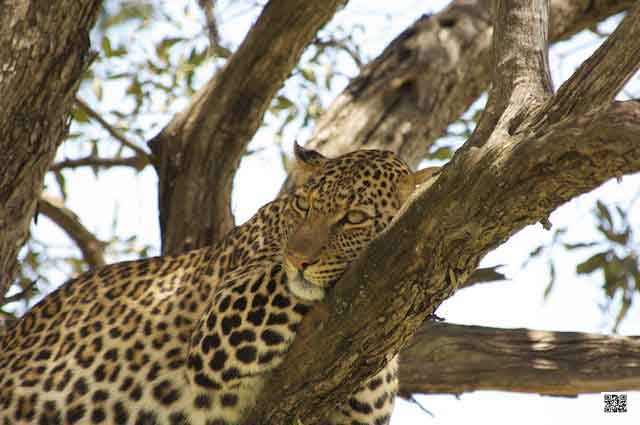
How would it be to have your photography portfolio reviewed by probably the most influential newspaper in the world? Scary?
Yes, most likely, but it would be great, wouldn’t it? Now is the chance that this can happen. If you think you don’t have yet the portfolio you could show them, get your camera and go quickly, maybe a speed photography course as well, some advise what the journalists might like to see (probably not the lion from the photographic safari … but who knows), probably some though moments of choices to be made and here you go. As long as you submit your work before the 13th of February you are in and stand a chance to get reviewed by the New York Times.
Click for the details of the professional portfolio review here and sign up on their application page.
All the best and good luck!
Ute Sonnenberg for www.rohoyachui.com
ePhoto Book: At the Edge of Light
03/02/13 08:54 Filed in: Photography & Art

Being on a photographic safari can teach one sometimes more than simply photography. A photography course might bring one to see more than only a wildlife sighting and sometimes the impressions are deep and make one think about life.
Travelling to the Masai Mara can be traveling into the essence of creativity, stimulating whole new insights.
See what a zebra can tell.
View & download ephoto book here.
Ute Sonnenberg for www.rohoyachui.com
On Photo Safari: Tripod vs. Monopod
02/02/13 08:52 Filed in: Photo Tips

Choosing the right equipment when going on photo safari can be difficult, especially when one has several cameras, lenses and accessories. First it depends on the mode of travel during the photographic safari. Travel by road gives usually no limits regarding the luggage and enough space to bring what you have. Flying is different. The small safari aircrafts have strict baggage allowances, usually 15 kg including hand luggage and photo equipment. Well, a camera body and a zoom lens are easily already 5 kg.
When it comes to accessories photographers are often doubtful, if they should bring a tripod or not. A tripod is nice when you want to do low light photography and night shots, but it needs space. On the safari vehicle is little space to set up your tripod and the tripod will constantly be in the way. And you cannot get out of the vehicle to set it up when photographing animals. It is actually not a good idea to bring one. You better bring a monopod. A monopod is lighter, easier to carry, needs less to no space and can help when wielding a big lens. It is not ideal when wanting to do night shots, because you are still holing it yourself, but if you are not keen on night shots, rather bring a monopod than a tripod.
Happy adventurous snapping!
Ute Sonnenberg for www.rohoyachui.com
How Photography can Help Teams
01/02/13 08:51 Filed in: B2B
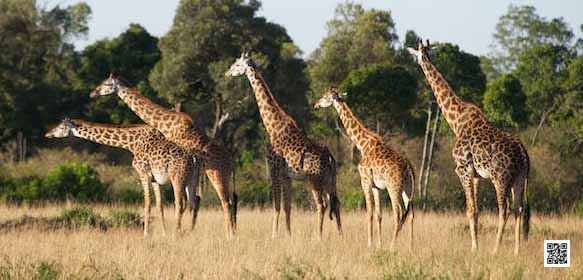
Working in teams is a great thing, yet it comes with challenges too. Different personalities, different backgrounds, different ideas, different ways to work and all working for the same goal, friction must be unavoidable.
Friction has a stimulating aspect, but mostly it means loss of energy resulting in inefficiency and unhappiness of the team members. Such a process can develop unnoticed for quite a while and when it actually comes to surface it can be a difficult task to identify the core of the problem and to solve it, because emotions might be high up already and blur the view.
In these situations photography can be a very useful and insightful tool. It can be part of team building sessions, business coaching or leadership training. Using photography brings play into the situation, fun and joy. And it visualizes the issues the team wants to address. What no one can say an image can show. The intuition (or the unconscious) speaks and what emotions blurred, the eye now can see.
If the team chooses to do sessions in a nature environment like e.g. as part of a photographic safari or embedded in a wildlife photography course, nature will be a stimulating environment to open up and enjoy the process, away from the usual environment with all the good nature has to offer. Yet, the key to seeing is the photography, no matter in what environment. Photography is the pleasant that allows easy access to instant insights.
Try it.
Ute Sonnenberg for www.rohoyachui.com
Self-Published Photo Book Library - The Indie Library
30/01/13 09:46 Filed in: Photography & Art

Larissa Leclair started The Indie Photobook Library in Washington D.C., giving a home to rare self-published photo books hoping that the collection will be preserved for future generations to see what great work photographers did, although they might not have been officially acknowledged by publishing houses.
The books in this library are physical books and its great that there is a place to keep them safe for the future, but what about the ephoto books? Wouldn’t it be great to have an ephoto book library instead of ephoto books scattered over the internet with several online publishing platforms? How would it be to have an online library of online ephoto books accessible for anyone from the photography lover to photography teachers available as “text books” during photography lessons?
Imagine photographing during travel, lets say in France or on photographic safari in Africa or on a cultural trip to Asia and uploading right away your on the go ephoto book to the online library and also to find inspiration and tips while creating your photo book from the online library. It could be some kind of itunes “store” for ephoto books, but then free access.
Inspired? Someone should do it and make the photography community happy.
Ute Sonnenberg for www.rohoyachui.com
Photography & Business: The Unconscious has the Lead
29/01/13 10:28 Filed in: Insights & Opinion | B2B

Have you ever had a conversation with your gut feeling? Did you listen? What did happen then? Where you one of those who said, I knew this would happen, but didn’t do anything beforehand with this knowledge?
If your answer is yes, you are one of those who know and don’t do anything with it beforehand, be assured you are not alone. There are whole industries built on doubting the gut feeling or better the not listening to intuition. For example market research. Endless tests with focus groups to find out what new products customers want. But how can customers know they want the new product when the product does not even exist as an idea? Steve Jobs did the only right thing. He made the iPod without any market research, just by following his intuition and no doubt, it was a success. Now, one might think, but there are not so many Steve Jobs. Yes there are, they only need to be encouraged and trained to discover and utilize their intuition, because we all got intuition.
Nobody seems to find it weird to act intuitive in photography, choosing the right photography course and the right photo safari by following their feeling, knowing intuitively what is the right course to do and the right destination to visit. Photography is constantly working with intuition, having the finger on the camera’s shutter to press it when the moment to capture occurs. And the results are photos we love.
In other words creative people like photographers run on intuition, now this ability only needs to be applied to business and science, although scientists are very conscious about the role of intuition as Freud and Einstein say themselves:
Sigmund Freud: “Everywhere I go I find a poet has been there before me. Poets are masters of us ordinary men, in knowledge of the mind, because they drink at streams which we have not yet made accessible to science.”
Albert Einstein: “The intuitive mind is a sacred gift and the rational mind is a faithful servant. We have created a society that honors the servant and has forgotten the gift.”
So, lets focus on intuition and the knowledge of the unconscious, visualize it through photography and for whatever answers you were looking for in your business, you will unearth them with a click on the shutter.
Tap into your intuition consciously and access immense resources of knowledge.
Ute Sonnenberg for www.rohoyachui.com
Oscar Niemeyer - Inspired by Nature
28/01/13 19:54 Filed in: Photography & Art
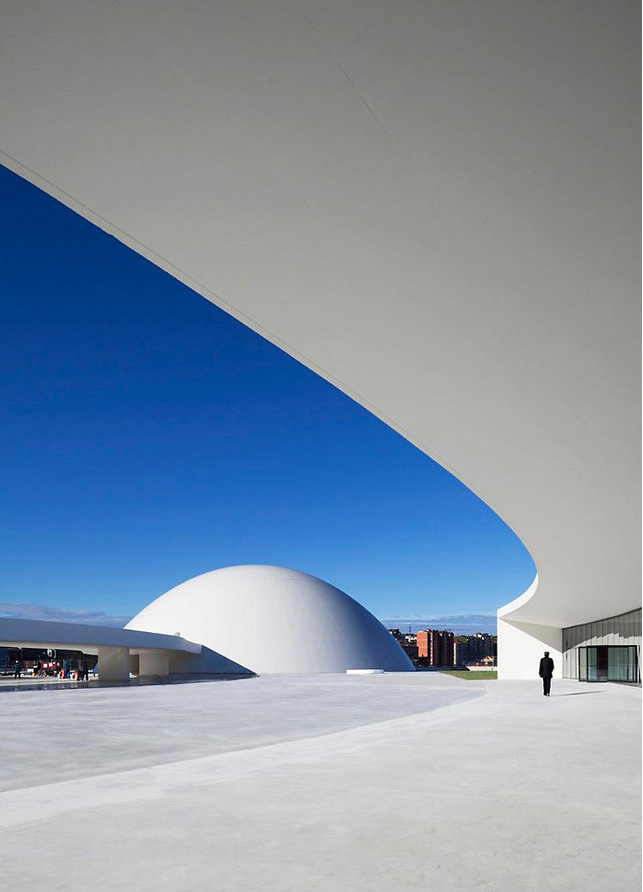
Oscar Niemeyer, Brasilia’s famous architect and co-creator of the city Brasilia, is well known for his creations made of concrete. In the case of Brasilia I find it personally a bit too much of his design in one place, a bit too much concrete, but nonetheless one can see clearly that Niemeyer was inspired by nature when creating his abstract formed buildings.
He wrote in his memoirs:
“I am not attracted to straight angles or to the straight line, hard and inflexible, created by man. I am attracted to free-flowing, sensual curves. The curves that I find in the mountains of my country, in the sinuousness of its rivers, in the waves of the ocean, and on the body of the beloved woman. Curves make up the entire Universe, the curved Universe of Einstein.”
One could say he created concrete art inspired by nature and concrete was an ideal medium to mold pieces of modern architecture.
For those of us who love photographing architecture, his work is a great subject and also a challenging one, making good examples for photography courses. How to photograph this modern architecture? What is the right angle to capture the spirit of it and not to distort the design? Probably by capturing the spirit of nature he put into it, focusing of dynamic parts of the buildings and one would actually capture the essence of his work.
Well, architecture photographers, take on the challenge and be inspired by a great man.
Ute Sonnenberg for www.rohoyachui.com
Image via Co.Design article on Oscar Niemeyer, read here.
ePhoto Book: App Art
27/01/13 19:48 Filed in: Photography & Art

Photography has become something for every day with the cell phone camera always with us, and a variety of photo apps at hand. The great filters of the photo apps give a boost to creativity and allow easy playing with artistic photography. No photography course needed, only the creative flow and there you are, creating art on the go.
App Art is a selection of app images, even from a wildlife sanctuary in Nairobi. View and download here.
Happy snapping!
Ute Sonnenberg for www.rohoyachui.com
On Photo Safari: Auto Display
26/01/13 19:47 Filed in: Photo Tips

Have there ever been moments that you were annoyed by the display of your camera, because you couldn’t see anything, especially when it’ sunny?
After photographing we like to look at the display of the camera to see what we did. Well, we know from our photography courses that the display is not the best quality to see the image, but still it should give a good impression of the result.
On one of the photographic safaris one of the guests had a Nikon D800E and he was very angry that he couldn’t see what he did, because the display looked just useless. After playing around in the menu we found that the camera was not to blame, it had an Auto Display feature, meaning that it adjusts the brightness of the screen to the light situation automatically. It turned out that this feature is very useful and works perfectly. The Auto Display feature turned an angry photographer into a very happy photographer.
Check first what your camera can do for you before you get angry at it!
Ute Sonnenberg for www.rohoyachui.com
Photography and the Money
25/01/13 07:58 Filed in: Photography & Art
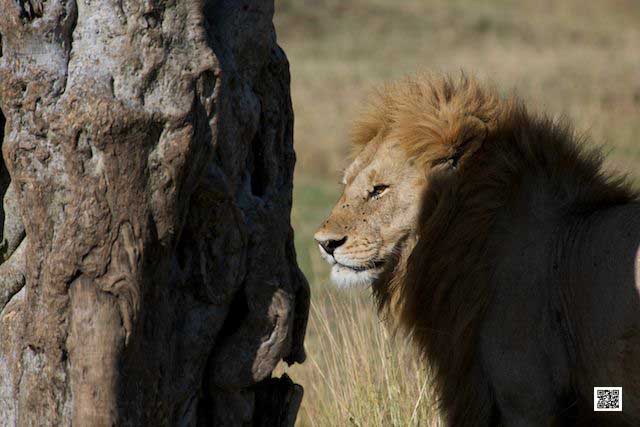
Collectors are usually careful or even skeptical with regards to fine art photography. A photograph might be reprinted in the future and the investment would be lost. But confidence is growing and experts think that the modern and contemporary photography art market will grow. Within the last year, new heights in fine art photography auctions were achieved and high prices were paid.
What does that mean? With photography now being an everyday part of life for billions of people around the globe its fine art is also more recognized and valuable for collectors. And photography itself has become big business through the cell phone market and camera equipment and it will be even bigger in the future. Photography is the future and that reflects in the art market as well with rising prices for fine art photography.
But how will photographers benefit from that? This is hard to say. Maybe a comparison from hospitality business can shed a bit light on that. Imagine you have a bar in a street where no other bar is. You think that’s great, because there is no competition, but that means also that the customers need to come especially to this street to visit your bar. How many people will do that? Some, but not many. Imagine you have a bar in a street where many other bars are. You might think that’s tough, because there is lots of competition, but it is the opposite. People know that there are many bars in the street and they have a choice, they can move around between bars the whole night if they want and that makes them come to this street. And where many customers are there is a chance that they will visit your bar too. The same works in photography. Many photographers make lots of photography and lots of photography makes lots of people interested in photography and the chances that people love your photography is higher than in times that only few people were doing photography.
Confused? Don’t think too much about it, just enjoy photography and follow your passion. The rest will come.
Ute Sonnenberg for www.rohoyachui.com
Camera Oscura - Old Masters and Photographers
24/01/13 08:47 Filed in: Photography & Art
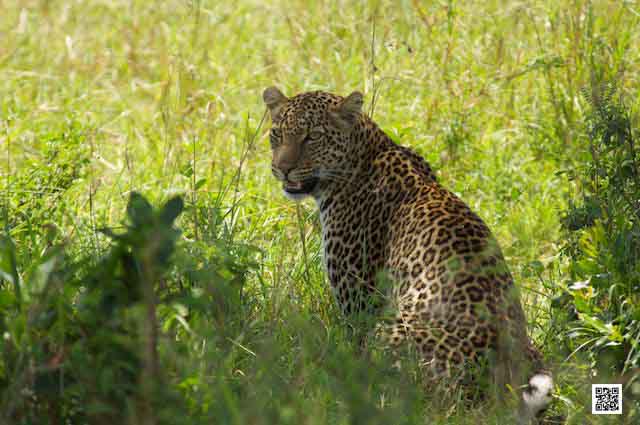
“The camera obscura is an optical device that projects an image of its surroundings on a screen.” (via Wikipedia)
It is thought that old masters like the Dutch painter Johannes Vermeer used it to create their paintings. British artist and art historian David Hockney did intensive research on the subject and concludes that the great masterpieces were created with the help of optics and lenses. (read the article on PetaPixel)
Knowing this doesn’t make their work less amazing. One can use optics and lenses and still doesn’t know anything about composition and light. One needs to be able to see first and that explains even more why a photographer can learn composition from looking at their masterpieces. They used photography tools the same way photographers are creating their compositions nowadays. So, going to a museum and looking at the old masters is a great photography lesson. Do the Louvre and you have a whole photography course, add a photographic safari and an intensive course in natural light will finish it up. And as a result your photographs are paintings with light, maybe even masterpieces of light and composition. You actually learned from old masters.
Surprising? Check it out. You can also visit the Louvre online. Here the link: Louvre.
Ute Sonnenberg for www.rohoyachui.com
What is Success in Photography?
23/01/13 08:06 Filed in: Photography & Art

“As a self-taught filmmaker who spent the last year trying to get his first real project up and running , I've come across my fair share of disappointments, near misses, and financially tight times. As with any startup or personal project, finances are scarce and it's often your passion for the project and support from family and friends that carries it through. For all entrepreneurs (especially those on the artistic side, like me), creating something of your own isn't about making money--it's about being successful in the way that you personally define it.” (from article by Kerrin Sheldon)
Kerrin Sheldon’s definition of success is doing something that you love. In his case its filmmaking and it applies just as well to many photographers. Some are self-taught photographers, others did several photography courses or studied photography, yet it’s the passion and love for photography that connects them. They succeed in doing what they love to do and that makes them happy.
And isn’t happiness what we are looking for in life? Well, maybe a new camera or two contributes to happiness too, but the love and passion are the real fun.
Happy snapping!
Ute Sonnenberg for www.rohoyachui.com
A Story of Disruptive Innovation and Photography
22/01/13 16:59 Filed in: Insights & Opinion | Photography & Art
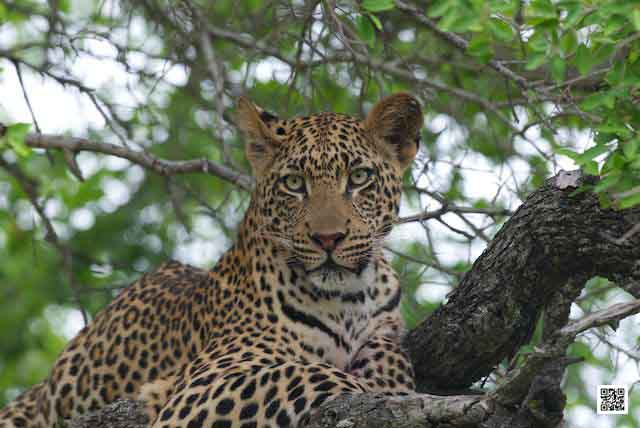
Good ideas often come while we are doing something very boring like driving on the freeway, washing the dishes, doing ironing or other monotone work. We get in some kind of a trance and our thoughts start wandering away and sometimes to places where ideas wait to be discovered. Our mind gets somehow switched off and the intuitive level takes over. In other words our usual thoughts are put to sleep.
Now we got this amazing idea, we quickly finish the dishes and go straight behind the computer to work the whole thing out for implementation into practice. Lets say the idea is a new kind of team building that uses photography to align the energies of the individual team members in order to accomplish the team goals. This might sound complicated, but it is not, its only photography and it will feel like a normal photography course, only the results will be more beneficial for the team. Lets call it an innovative application of photography for business.
How do others experience this innovation? Some will see immediately the fun of photography and will be curious to discover new exciting things. Others might be skeptical and might feel a bit uncomfortable, not knowing how the whole thing will work. For them it might feel disruptive, different from the usual team building they always had and reluctance might creep up, tempted to reject the innovative approach of the team building.
What will win, the reluctance or even rejection or the curiosity, fun and excitement? This is the moment when leadership is needed. At the end the leader guides the team to new success and sometimes something has to disrupt the routine to achieve new levels of achievements.
Another example: Who remembers the Reebok Pump? Here what happened when the innovation was introduced to the responsible people:
“When Continuum pitched an idea to Reebok for a new basketball shoe that would use inflated air to better support the ankle, thereby reducing injuries, the brand manager for basketball shoes said he wasn’t interested because he had never heard about a need for that from a focus group. When we proposed the idea to a high school basketball team, the response was even worse--the players openly laughed at the concept.
But when the team members actually used an early “experiential model” of the shoe during practice, they were won over by how cool it was to have a shoe form-fitted to their feet. Over time, they were even more enthusiastic as they realized they could play more confidently without fear of injury. Like that, the Reebok Pump was born.” (via Co.Create, read the article here)
The Reebok Pump could be called a disruptive innovation. It obviously disrupted the usual thinking and doing, yet when eventually tested all were happy.
There are plenty of examples like the Reebok Pump, also in art and photography. People disliked the painting style of Van Gogh. It was different from the style of other successful painters at this time and Van Gogh’s style might have been experienced as disruptive.
Long story short, disruptive innovation is something revolutionary and photography is a wonderful medium for innovation, within photography and beyond. Use it and be not discouraged when some people might feel disturbed. You might be a new Van Gogh or Rembrandt!
Keep snapping!
Ute Sonnenberg for www.rohoyachui.com
How to Learn from Sting
21/01/13 15:17 Filed in: Photography & Art

How do you create albums and photo books? How do you choose an image from a whole lot of photographs? How do you choose a photography course or art class out of the broad spectrum of choices? How do you choose your travel destination for your holiday?
I might sound far fetched to through together photo books, albums, photographs, holidays and photo courses, but they got one thing in common, the question how you start creating or making a choice. It is in essence the same intuitive process no matter if you are creating a photo book, a holiday, choosing a course or a photographic safari, your intuition makes the choice and takes the lead. And this creative process often includes a technique called semantic intuition, a brain storm technique.
Sting said in an interview that the song title comes first and then he writes the song and so do more famous writers as you can read below:
“The oddly named, but extraordinarily powerful technique was invented by Helmut Schlicksupp, an employee of the Battelle Corporation’s office in Germany. Semantic intuition is a word-combination technique where brainstormers name an idea first, and then try to figure out what the new idea might be, given its name. As counterintuitive or even as impossible as this group idea-generating strategy might sound, there’s actually a precedent for it in the creative arts.
It was in an interview with Larry King many years ago that Sting revealed that he will often get a title for a song first, and then he will go ahead and write the song. Neil Simon, in his second autobiography, revealed that he came up with the name for the play The Odd Couple first, and then wrote the play. And legendary screenwriter William Goldman adopted a similar name-it-first creative strategy when he asked his younger daughter what she wanted him to write a story about. She said “a Princess.” Then he asked his older daughter what she would like him to write a story about. She said, “a bride.” He put them together, and we got his novel--and then the movie--The Princess Bride.”
(read full article from Fast Company here)
Does that sound familiar to you? Don’t you have an idea for a photo book first and maybe even the title and then you start choosing the images and layout?
Think about it. Maybe you are very strong in semantic intuition. Use your strength and create amazing art.
Enjoy your intuition!
Ute Sonnenberg for www.rohoyachui.com
ePhoto Book: Contrast - The Light of Darkness
20/01/13 09:48 Filed in: Photography & Art

Photographic safaris bring you to the most beautiful wildlife destinations in Africa. Their beauty is striking and they teach the visitors not only about wildlife and nature, they also teach about light and contrast and sometimes light and contrast are mirrored in what the bush and the animals are experiencing through life and death.
Contrast makes us see and is what makes a photograph striking.
View & download the ephoto book here.
Ute Sonnenberg for www.rohoyachui.com
On Photo Safari: Auto ISO
19/01/13 08:39 Filed in: Photo Safari

From the point and shoot cameras to the professional digital cameras, all have the feature “Auto ISO” and although one might have learned during a photography course how to use the manual ISO settings, one often goes just back to use Auto ISO. It’s just convenient.
And it might work in most of the situations, but not as well when being on a photographic safari. Photographing in the bush is different and the auto settings often fail to match the light conditions there. The Auto ISO often goes too high and the images look washed out. Use in normal bush bright daylight ISO 100 and you will be fine. But keep looking at the light and adjust the ISO manually when the light gets lower. You will see the results are much better. Depending on what manual setting you prefer, rather leave the ISO at 100 and play with the aperture.
Happy playing!
Ute Sonnenberg for www.rohoyachui.com
How to Communicate through Images
18/01/13 07:30 Filed in: Insights & Opinion
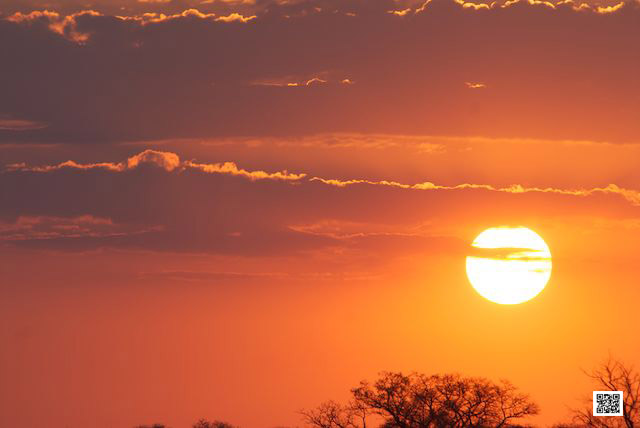
A picture says more than a thousand words. Nothing is truer. Do you know how your granddaughter looks like when her mother tells you or do you rather want a photo of her? But what more is in the picture than her curly hair and her pretty face?
When you look at photographs, you can feel immediately the moment that was captured. Have a look at holiday photos, you on the game vehicle during a photographic safari or you swimming in the ocean or you and your family in the garden at home. You are back in that moment and you can tell immediately everything what happened at that moment, because photography captures a moment in all its dimensions.
This is great to experience holidays again and other memorable moments in life, but it is also very useful for everyday communication and even business communication and success. An image carries all sorts of information and one can utilize that for “noiseless” communication. Nothing is added or removed, the moment is captured or the information one wants to provide or the idea one wants to share. The image carries it, accessible to anyone at any time.
And the image tells even more than the eye first sees. Also the emotional dimension and intuitional dimension are captured and carried by the image. For what would one need that when showing a photo of a granddaughter? Grandmother would feel immediately if the child was happy or not, although it might show a smile, she would feel. And what works with the granddaughter works for all communication through images, for a decision to buy a house or to manufacture new shoes or to acquire a company. All information for decisions is in the image, one needs only to read it.
And here comes the most interesting part. We always read all dimensions of an image, like the grandmother the mood of her granddaughter, but we do that mostly unconsciously. In order to use photography for communication, we only need to do it consciously and we have an everyday practical and easy tool of visual communication.
Ute Sonnenberg for www.rohoyachui.com
Visit also Intuition Training, using communication through images.
Take an External Perspective for Better Insight
17/01/13 08:23 Filed in: Insights & Opinion
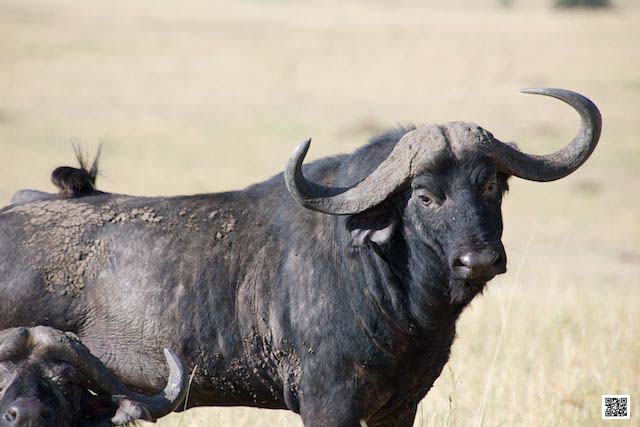
When you visit a museum, where do you stand to look at a painting? Do you stand right in front of the wall, your nose almost touching it or do you stand looking from a distance? Well, if you want to see exactly every brush stroke, you got to come close, but when you want to see the entire masterpiece, you got to watch from a distance.
Talking about an accident is easier when you were witnessing it rather than being involved yourself. You might become emotional while talking when you are one of the victims.
These are two everyday life examples, that having a distance allows a better view on things in their complexity. One can “walk” around a problem or case and see all its aspects from different angles, which result in deeper insights. Innovative leaders will practice that method and photographers do that as well, constantly.
Pretty much every camera has a zoom and if not in the camera, the photographer has most likely a zoom lens. And what are they doing? Zooming in and out constantly to capture the subject the way they experience it, some more closely, others more from a distance. A photographer has always an external perspective and that makes it possible that they can photograph scenes one can hardly look at. Like being a victim of an accident or witnessing an accident, being a witness gives the distance and the insights.
Ute Sonnenberg for www.rohoyachui.com
Photography for Thought Leaders
16/01/13 07:49 Filed in: Insights & Opinion | Photography & Art

Thought leaders are the men and women who guide whole nations and economies into the future, only think of Steve Jobs and his visionary spirit. There is a common sense that visual content, visualizations and pretty much everything will have a virtual existence in the future and that can only mean that photography will play a major role also for thought leaders. How are they communicating in a visual age? Most likely through images and even being not a thought leader one takes rather a photo of a house than trying to explain the husband which house could be a possible home and why. Thought leaders will communicate with their teams through images, team buildings will use photography to align the team members and successful leadership will be measured on how good a leader can communicate with visual content and visualize goals.
Well, none of the leaders needs to be a photographer to be able to communicate through photography, a cell phone is enough, yet there might come a big increase of hobby photographers out of it as well. And that would be great. Photography is just magic.
Ute Sonnenberg for www.rohoyachui.com
Dont' Fear Failure, fear Fear Itself
15/01/13 11:47 Filed in: Insights & Opinion

What do you think about yourself as photographer? How do you feel when others look at your photographs? Probably you feel insecure and afraid that they might not like your photos. Maybe you think during a photo assignment constantly “I hope they will like it” and in photography courses you dare not to ask a question. Sound familiar?
If your answer is yes, you will also know how the results look like when you were afraid of failure during a photo shoot. Most likely you were not happy with them. Maybe your camera was shaking and the subject was not in focus. And for wildlife enthusiasts a lot of other fears can come on top of the fear of failure during a photographic safari, like the fear of the camera getting to dirty, the fear of getting lost or of being run over by elephant. Seems that there are many things in photography one can be afraid of. But the one thing one really needs to be afraid of is the fear itself.
Being afraid makes a photographer being less engaged with the light and subject and even worse, the fear will show in the images.
Be conscious that not everybody will love your photographs, but that doesn’t mean they are a failure, they just do not appeal to them for individual reasons. And there are no stupid questions. So, just ask what you want to ask in any photography course. Learn from other photographers, but do not compare yourself with their awards and magazine cover success. You are going your own way in photography and who had thought that Van Gogh would be world famous now at the time he lived? Maybe just time is not ready for you, but you are ready to enjoy your photography and keep doing that and be not afraid, there is no failure.
Happy snapping!
Ute Sonnenberg for www.rohoyachui.com
Picasso: Painting by Heart
14/01/13 08:55 Filed in: Photography & Art
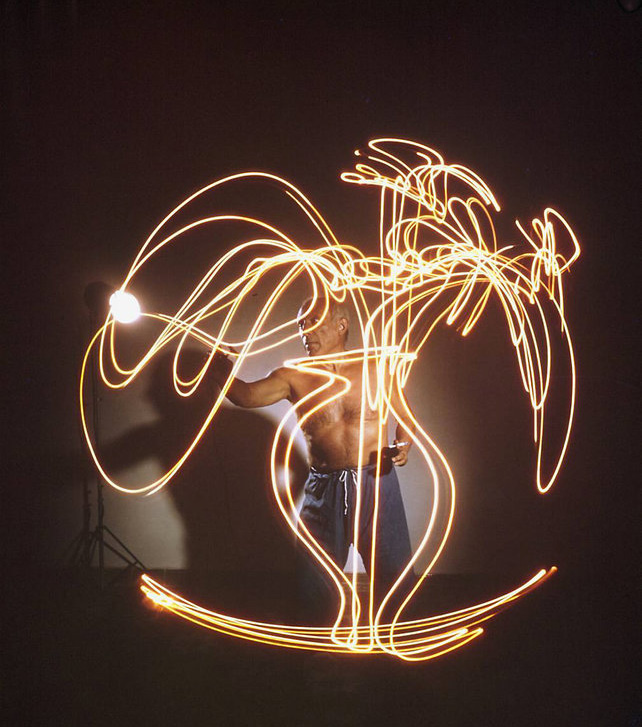
Light painting has become a very popular kind of photography nowadays and there might be even photography courses in light painting to learn the technique. Only as a side note, photography itself is painting with light, but we understand as light painting now, that somebody holds a light source and paints with it while a camera captures the process.
It turns out that light painting is not new. Picasso did it already in 1949. The Albanian photographer Gjon Mili introduced him to it and Picasso was thrilled. Read here what Mili and Picasse created for Life magazine:
“So Picasso did his thing, in various darkened rooms of his studio. He drew a centaur, the figure of a woman, an elephant, and various faces using a small pen light. “He was so fascinated by the result that he posed for five sessions,” wrote Life magazine, for whom Mili was freelancing at the time. “Mili took his photographs in a darkened room, using two cameras, one for side view, another for front view. By leaving the shutters open, he caught the light streaks swirling through space.” The resulting images were published in a 1949 issue of Life, recently resurfacing after the magazine published about the archived images.”
(read the complete article from Co.Design here)
There are other images showing Picasso creating paintings with one stroke and they are already impressing, but this is just stunning. Be aware he doesn’t see what he is painting, at least not with his eyes. If there is any proof necessary, this shows clearly that painting was in his heart.
Wanna try yourself? Paint with your heart!
Ute Sonnenberg for www.rohoyachui.com
eBook: How to's Wildlife Photography
13/01/13 23:39 Filed in: Photo Safari | Photo Tips
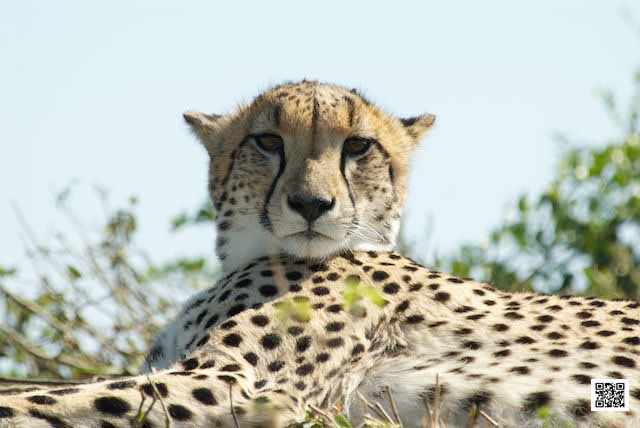
Throughout this blog, posts are scattered with wildlife photography subjects, yet not in a very handy way for the reader to pick them together to read easily.
For those who would like to have them all easy to read in one place, here is the ebook How to’s Wildlife Photography with a selection of blog posts on the subject.
View and download the ebook here.
Happy reading.
Ute Sonnenberg for www.rohoyachui.com
On Photo Safari: The 3D-Tracking Autofocus Challenge
12/01/13 12:56 Filed in: Photo Safari

Wildlife photography is different and the last wildlife photography course in the Northern Kruger Park in South Africa made that clear once again.
Wildlife photography demands a lot of efforts from the photographer. Not only the environment is demanding, also the photographic subjects and the light. Some features of a camera that were included in high end devises do not work in the bush. They are mainly made for other purposes and one needs to be conscious about that.
For example the 3D-tracking autofocus setting, tested during the mentioned photography course in Kruger Park on a Nikon D800E. The focus picks up the wrong things, does not recognize the head/face of an animal and gets confused with the light. The photographer has to chose the focus point, otherwise what he wants in focus is not in focus. So, be careful where you use what autofocus setting and be conscious that the photographer got to do efforts to get it like he/she wants it.
Practice the different settings when you have time to play and not when you want it to work. That will make you happier with the results.
Happy snapping!
Ute Sonnenberg for www.rohoyachui.com
Photography: Aspiration vs. Inspiration?
11/01/13 19:59 Filed in: Photography & Art

What are your resolutions for this year? Do more sports, eat less and healthier and spend more time with family and friends? What are your resolutions for this year regards photography? Do photography courses, travel to photograph more of the world, get a new camera, make more photo books or learn how to photograph at night?
What came first, aspiration or inspiration? Did you cherish the hope of becoming a visual artist and you happened to have a camera at home or were you inspired to capture moments and you developed the hope of winning an award?
Does it matter? As long as you enjoy photographing, you will be inspired to achieve great things in life, in arts and elsewhere. Take your camera and snap what you see, share it and enjoy the captured moments forever.
Be inspired to achieve what you wish to achieve.
Ute Sonnenberg for www.rohoyachui.com
How to Do What You Love
10/01/13 16:39 Filed in: Photography & Art

Photography is probably one of those things one dreams of doing for a living, but struggling to find a way to do it. But how does one know what one loves and wants to do and if this thing is really photography?
This is most likely the most difficult part of it, finding out what you really love and want to do in your life. Photography is often thought to be the most desirable thing to do, but is that really the case? Maybe one would be completely happy by repairing cars or teaching children or being a farmer. But how to know when being completely suffocated by the daily routine of a not loved job one does to pay the bills? Photography seems to be the escape and the desired job, far away from dull routines. It might be for some people, but some people might just love teaching, but don’t know yet. In any case photography is the escape for the dulled mind and the craving heart. Photography can be the tool to find out what you really love to do and can help you to find a way of doing it.
Your photographs tell what your heart knows and your mind fails to see. Look at them, make albums, photo books, calendars, presents and whatever you can think of making from photographs and a pattern will rise and show you what you love in life. And then, just do it. Your life will be most likely happier and if photography is not your dream job, it can still be your beloved hobby.
Happy snapping and life loving.
Ute Sonnenberg for www.rohoyachui.com
P.S. Guidance for this kind of processes is available.
How NOT to Clean Your Camera Lenses
09/01/13 19:06 Filed in: Photography & Art

Isn’t it sometimes tempting just to breathe on your camera lenses and wipe it with a tissue to get some disturbing stains off? Done that? Don’t do that anymore.
Nikon’s support website answers the question “How do I clean the camera lens?” that way:
“The best way to clean a lens is to use a piece of lint free lens cleaning tissue and a small amount of Lens Cleaning solution. Do not use anything containing abrasives or solvents, only use Lens Cleaning Solution.
First we recommend taking a small blower brush to blow off or brush away loose dust or debris.
Next, place a drop or two of cleaner on the tissue (never directly onto the lens) and then wipe the lens in a circular motion, beginning in the center and working your way outward, removing any marks or smear.
If the above supplies are not available a clean, dry, soft, lint free cloth can be used to clean the lens. Do not breathe on the lens to fog it for cleaning. There are harmful acids in breath that can damage lens coatings. Just use the blower bulb, then brush, and wipe the lens in a circular spiral from the center outward.”
I remember hearing that advice from photographers of the old days and admit that I didn’t take it very serious, but obviously they were right. Maybe they didn’t know about the acid, but in essence it was valuable advice.
Wisdom seems always to come in combination with the word “old” and it does no harm to listen. And sometimes wisdom has the name Nikon
Happy snapping!
Ute Sonnenberg for www.rohoyachui.com
2012 National Geographic Photo Contest: Cynical?
08/01/13 14:08 Filed in: Photography & Art

Photo awards have proved many times that they are questionable in their motives and results and the just announced winner of the “nature” section of the National Geographic 2012 Photo Contest is only another example how cynical awards have become.
The winning photo is a photo of a tiger, taken in a zoo. One can just imagine what kind of wildlife photography that is in the comfortable security of a zoo with an ice-cream stall conveniently at hand. Not a photographer out in the bush where it has 40 degrees Celsius, covered in dust and sweat, facing possible danger behind every corner and trying to be patient to get that one special shot. No, conveniently with a trolley for the equipment and a foldable chair and umbrella to wait if necessary comfortably for a while, probably being very annoyed by other visitors flocking around the same cage or enclosure.
Is this the new photo safari wildlife photography experience honored by the leading wildlife photography magazine of the world?
I hope not. There is nothing like the real thing and a photo shows that.
Read more on the subject from PetaPixel here.
Ute Sonnenberg for www.rohoyachui.com
Annie Leibovitz: Ups and Downs
07/01/13 17:16 Filed in: Photography & Art

In 2007 Annie Leibovitz had to put up her entire work and future work as collateral for a $24 million loan and now she put her NYC compound of three townhouses on the market for $33 million.
Lets see it as a smart move to get the rights of her work back. She is one of the most sought after commercial photographers and did only last year the great photo shoot with the American Olympic team for Vogue.
There can be ups and downs for photographers, but it might be a consolation that a photographer can even reach those heights as getting a $24 million loan for ones work.
Keep shooting!
Ute Sonnenberg for www.rohoyachui.com
Travel Memories 2008: On Safari in Africa - Day 20 and 21
06/01/13 17:20 Filed in: Travel & Inspiration

Day 20
Our last full day in the bush and we went back to the waterhole from yesterday. When we arrived the waterhole was empty and that means in times of drought that there must be cats around. And yes, when we got close we saw them. Two male lion were lying at the waterhole. We took a closer look and found out that they weren’t well. One of them was limping and he looked very dehydrated, skinny and his belly looked like a balloon. The other one didn’t look injured but very skinny too. Paul told me that they are brothers and we made the conclusion that one got injured and his brother stayed with him and shared the pain and struggle. It was very touching to watch them and very sad too. When the sun came out they tried to get some shade under a skinny tree about 100 meters away. It took them forever to get there and I was afraid they wouldn’t be alive for long anymore.
When we came back to the camp that morning we had visitors for lunch. A breeding herd of elephants was resting about 50 meters away from our tents under the trees. This was awesome. They allowed us to be so close to them and to share the site. It felt magical.
In the afternoon I wanted to go back to look for the two lions. They were still there under the tree and after a while they started moving again towards thicker bush, probably to find some food. It was very impressing how they carried on trying to survive and how the brothers stayed together. And it was also very sad to watch them and to feel their pain.
Day 21 – The Final Day of a Most Amazing Photographic Safari
We had to go back to Nairobi. On one hand we looked forward to sleep in a bed, having a shower and being at home. On the other hand we had become a good team and we would miss each other and the bush. Anyway, we had to go and Paul drove furiously fast to get quickly back. He also wanted to be with his relative in the hospital and Alex and me wanted to relax, it was after all a Sunday afternoon.
Asante sana.
Ute Sonnenberg for www.rohoyachui.com
On Photo Safari: The Challenge of a Black Bird
05/01/13 20:13 Filed in: Photo Safari

We were driving in the Masai Mara when our very bird loving wildlife photography course attendee suddenly shouted stop. There was a crested eagle just in front of us on the top of a tree. All cameras started clicking immediately, also from the not so fanatic bird lovers, because it’s a beautiful bird. But soon moaning was to hear and panic, the bird was only a black silhouette in front of a bright over casted sky. Flash, no option, exposure compensation, probably the best, but the background will be very bright, spot metering, lets try, a combination of exposure compensation, f-stop correction and spot metering? Let’s try. The results were great and the faces turned happy again and the bird continued to be very patient with us, taking his time scanning the area for prey.
This was the start of a wonderful morning and some more people started loving birds and seeing them suddenly everywhere.
Any birds in your garden or just outside your window? They are very beautiful and also challenging photographic subjects, rewarding the patient photographer.
Happy snapping!
Ute Sonnenberg for www.rohoyachui.com
Where to Find Your Life's Quest with(in) Photography
04/01/13 12:23 Filed in: Photography & Art

You might plan to watch the new larger than life epic movie The Hobbit: An Unexpected Journey or you have seen it already, just like many of us saw The Lord of the Rings and often more than once. What draws us to these kind of movies?
These movies are about a life’s quest, about someone who embarks on a journey, often not consciously, but ending up perseverant following the quest. Maybe we all would like to embark on such a journey as in the movies, but are we not doing that already? Well the wizard’s name is most likely not Gangalf, but maybe George, your neighbor, and you are most likely not called Bilbo, but isn’t Frank an even better name? You didn’t notice that you were on a journey?
Ask your camera about that. Go out (or just stay at home) and shoot away, with all your questions in mind, just shoot. And then look at the images. What do you see? Whom do you inspire with your work and care? How does your photography make people happy? Where is your photography going?
If photography is your life’s quest, photography itself will guide you and it will also reveal, if your quest is a different meaningful purpose. The images tell.
Ute Sonnenberg for www.rohoyachui.com
Featured: Canon 6D
03/01/13 21:01 Filed in: Photography & Art

It is about 10% smaller and between 10 % and 20 % lighter than its brand siblings, does that make the Canon 6D a good alternative?
The photo above shows a lineup of the Canon 5D Mark III, the Canon 6D and the Canon 5D Mark II. See the larger image on the original PetaPixel post here.
But there is more. The new Canon photo printers can print directly from the camera, the Canon 6D. Read more in PetaPixels review here.
Interested? There will be more reviews coming from the actual use of the new camera, but it seems that it is an interesting devise for several reasons. So far also from comments of Nikon D800 users, photographers seem to enjoy that the camera is light, not so much to carry around when being on holidays or struggling with luggage allowances on safari flights.
Ute Sonnenberg for www.rohoyachui.com
The Infinity of Photographs for Music
02/01/13 18:11 Filed in: Photography & Art
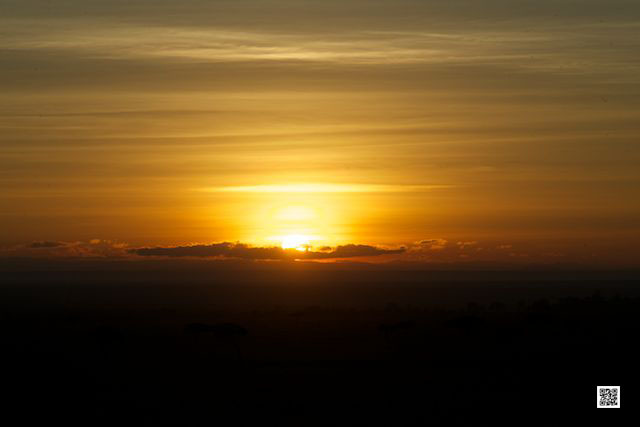
An image is endless. A photograph is a captured moment, yet a moment of infinity and so is the photo, infinite. No rewind, no replay button, its doing it all by itself.
With music one had to rewind and/or press replay to listen to the favorite song again, but not anymore. For those who cannot get enough of Gangnam Style or other persistently for replay asking hits Infinite Jukebox has arrived.
Read how it exactly works here and experience the infinity of a song, just like the infinity of a photograph.
Or are photographs a bit different infinite?
Ute Sonnenberg for www.rohoyachui.com
Popular Camera Settings 2012 & Their Meaning(lessness)
31/12/12 18:07 Filed in: Photography & Art

Reuters made a list of what they think the best photographs taken in 2012 with a whole range of information including camera settings.
Now the photography enthusiast and Reddit user hallbuzz made a list of all the camera settings of the 95 images from the Reuters list including camera brand, lens type, shutter speed and f-stop. Then another Reddit user mathiasa turned all this information into charts. See the charts on petapixel.
When looking at the charts one could be tempted to think that in order to be one day on the list of the 95 greatest photographs of the year, chosen by Reuters, one just can buy the equipment mostly used and the settings mostly applied. But is that so?
How often do you shoot a sports event like the Olympics? Are the best photographs shot with a Canon, rather than with a Nikon?
What are the charts tell? Photographers of press agencies get equipped by their employer and the employer chooses a camera brand of good quality he can get a good deal with. Same for the lenses, reflecting also in the f-stop stats. And from there it’s a bit of everything, depending on subject and location.
So, what does this example of stats of popular settings tell us? There is nothing like a popular setting one can just use, because others do. Camera settings always depend on the light and nothing else.
Happy snapping!
Ute Sonnenberg for www.rohoyachui.com
Travel Memories 2008: On Safari in Africa - Day 19
30/12/12 18:03 Filed in: Travel & Inspiration
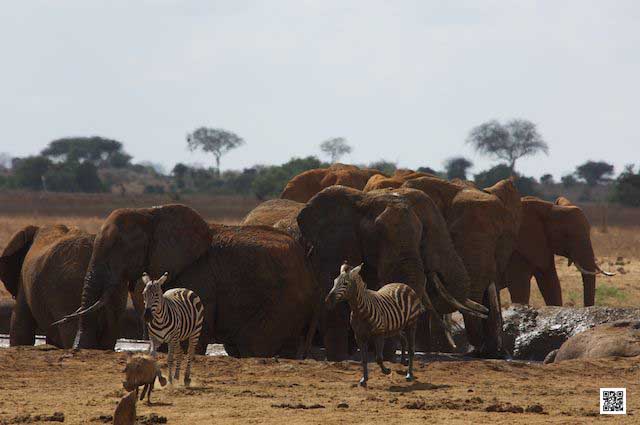
Unfortunately the bats had left behind quite a mess in the bathrooms and it was really a shame that nobody had thought about nets to keep them out. The facilities were really nice, except the other visitors. I found out later that every morning people are coming to clean the whole place and it’s fine until the bats come back. Nobody seemed to be bothered by it.
Tsavo East is well known for the elephants and we went out to find some. It was very dry and then the best thing to do is going to a waterhole. According to Paul there was a big dam where we could find plenty of animals. When we got there the dam was dry. Even Paul was surprised. He had never seen the dam dry. Not far away was another smaller waterhole and there the elephants were. It actually didn’t look much like a waterhole, more like a mud-hole, but the animals seamed happy with it. The elephants were standing in the mud, enjoying cooling down. Zebra, warthog, jackals and ostrich carefully tried to sip water from the mud. We stayed for hours.
In the afternoon we cruised through another part of the park and also there were plenty of elephants. Beautiful red colored elephants, from the red soil in the park.
Ute Sonnenberg for www.rohoyachui.com
Photo Safaris and Africa Travel Catalog
Safari Story: Leoaprd Teens and a Stressed Mom
29/12/12 18:02 Filed in: Safari Story

We had planned to stay the whole day out, with packed breakfast and the lodge would bring us lunch later. We were on a photo safari in the Sabi Sand in Kruger National Park in South Africa, the heaven for leopard photography lovers.
Staying the whole day out in the bush has the advantage that you can stay with the animal when you eventually found it and follow it the entire day. We had found a female leopard. She had two pretty “old” cubs of about 18 months old, two boys, still staying with her. Usually the cubs have to live on their own by this age, but the boys seemed to enjoy their mother’s care and were in no rush to live on their own and do all the hunting themselves. The mother is a good hunter and also this morning she had a kill hoisted in a tree. But there was no sign of the boys. After she had fed on the kill for a while she started calling for the boys. No response. She started walking away from the tree looking and calling for the boys. The calling is a gentle sound, heard by the cubs and telling them mom is calling and expecting response. But nothing. The mother kept going and calling and after about one hour doing so, she seemed to have enough. Now she was really calling, a loud, strong leopard call that made clear she will take no nonsense anymore. And suddenly one of the boys popped up, just a few bushes away from her approaching her in apologies and trying to sooth her anger. After a moment of accepting the cubs attempts to make it up again, they wandered off to the tree with the kill.
Ute Sonnenberg for www.rohoyachui.com
Photo Safari Essentials eGuide
Sony A99: One of a Journey into Still Photography
28/12/12 21:02 Filed in: Photography & Art

For some reason Sony seems to me rather the excellent video camera brand than a still photography brand, although more and more of my photo course safari guests have Sony cameras and I get to use them in order to help and explain. Somehow they don’t feel “ripe” yet and functionality, menu and displays seem influenced by video cameras. But maybe that is something one got to get used to, I don’t know.
Well, there is the new Sony A99 and when I read the review from Phoblographer I get the impression that they had a bit the same feeling about it. Please read yourself and experience the camera yourself, if you can. They are doing great work and who knows, maybe one day they will overtake the Nikons and Canons.
Lets see how it goes.
Ute Sonnenberg for www.rohoyachui.com
Photography Rankings and What They Mean
27/12/12 12:29 Filed in: Photography & Art

“Ten percent of all of the photographs made in the entire history of photography were made last year — an astounding figure. More than ever before, thanks in part to cell phone technology, the world is engaged with photography and communicating through pictures. Nonetheless, a great photograph will rise above all the others.”
This quote comes from TIME Picks the Top 10 Photos of 2012.
But what is a great photo? Somehow the first image they choose with the man from Ghaza reminds me very much of the winning photo of Word Press Photo 2012. Are they playing safe by choosing what won an award elsewhere or do they really find it one of the greatest photos of 2012?
The problem is, that all rankings and awards are subject to the subjective judgment of the jury. They have an idea what they want an image to look like and the one that gets the closest to the idea is the winner. But what a jury likes is not necessary what you like and find a great image.
A great image is an image that appeals to you, an image you love and can’t stop looking at. A great image draws you into it and makes you discover new things all the time. It lets you experience the feeling it captured and takes you on a journey.
A great image, is an image you love.
Ute Sonnenberg for www.rohoyachui.com
The Power of Surprise in Photography
26/12/12 14:48 Filed in: Photography & Art

We don’t like unpleasant surprises, we like nice surprises; yet both ways, surprises have the power to make us more creative. When you plan to photograph your friend’s birthday party you will get from one surprise into the other, because the people will just not do what you as the photographer want them to do. You got to come up with creative solutions to get some nice pictures anyway. And at the end your own photographs will be the surprisingly good.
When you walk through your town, garden, in the woods or in the park, with every step you might be surprised by new photographic opportunities. And you will try to capture them the way they surprise you. Lets not mention walking in the bush and being surprised by an elephant, well then there is no time for photo safari snaps, then its time to run.
But isn’t it always the surprise of beauty that makes us snap? The moment of awe we capture and go back to when looking at the images. Surprise can reflect in the images in many ways, from the blurred photo, because we were surprised by that photographic opportunity coming along just now and we were not ready, to the building that surprised us with its beauty.
Look at your images and see how they surprise you, again and again, every time you look at them.
Keep being surprised and capture the awe!
Ute Sonnenberg for www.rohoyachui.com
The Story of Joseph Woodland & It's Meaning for Photographers
24/12/12 10:53 Filed in: Photography & Art
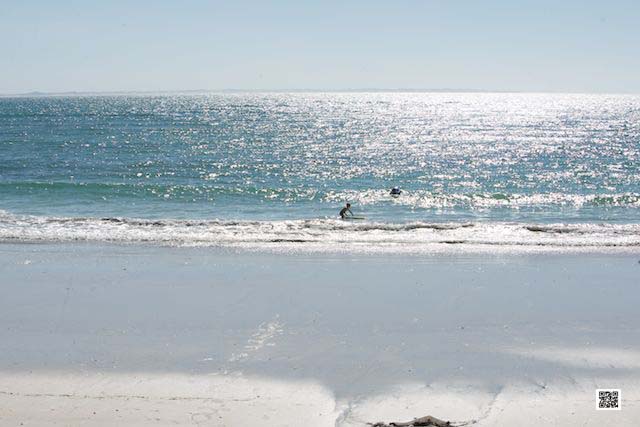
Joseph Woodland died this month at the age of 91 and he is the man who invented the bar code as we find it on anything we are buying nowadays. The invention was made in the late 1940ies and patented 60 years ago. Woodland, a graduate student, worked together with his classmate Bernard Silver on the technology, but it was Woodlands experience as a boy scout and sitting for months on the beach in Miami what brought the breakthrough.
When the work didn’t progress at university he quit and spent a winter in Miami Beach where he was sitting the whole day on the beach thinking. And then suddenly the puzzle fell into place. The knowledge of the simple Morse code, he learned as a boy scout, and running his fingers through the sand made him suddenly draw lines with four fingers, realizing that these lines could be wide and narrow depending on the information they carry and the bar code was found.
Woodland and Silver were ahead of their time and the scanning technology was not yet ready to apply the invention for mass production. They sold their patent for USD 15,000. That was all what they got for it ever, besides the honors from the academic world.
But what is the essence and what does it tell photographers? Your way of photographing might be different than what anybody else is doing and what no photography course is teaching, but it doesn’t mean that it is no good. You might just be creative and ahead of your time. As Woodland did, be yourself and follow your intuition, your path. There might be a point that all puzzle pieces will fall into place. Well, and don’t give away your art to quickly and to cheap, at least if you are in the position to wait. You are creating something with every photo you take, worth attention and respect.
Keep going!
Source: The New York Times, read the full article here
Ute Sonnenberg for www.rohoyachui.com
Travel Memories 2008: On Safari in Africa - Day 17 and 18
23/12/12 19:39 Filed in: Travel & Inspiration

Day 17
We decided to have a quite day with our game drives and also a long rest around lunch. It was just so hot. It felt like being roasted on lave stone and at the same time it was so beautiful, so irresistible beautiful that one takes it all just to be there.
Day 18
We left the campsite at 8.15 a.m. and headed to the main gate of Tsavo West Mtito Andei to hit the road to Mombasa.
It was a short drive to Voi where we did some groceries and I got myself some chocolate and a stroll through the market place. The main gate of Tsavo East was just outside Voi and the campsite Ndololo just 20 minutes from the gate. We arrived there before lunch and pitched camp.
When we were about to have lunch a troop of baboons was lining up to get our food. I encouraged Alex to make a statement with the catapult to make clear who is the boss. He would be the one staying in camp when we are out and they would make life for him very hard if he wouldn’t do something right now. He went after them and they got the message.
Tsavo East is huge and doesn’t have many roads. It felt to me like a paradise for the animals, because they can live their lives unbothered by vehicles if they want, yet we had great sightings too. The first afternoon we spotted already lionesses, actually quite close to the camp, on their way to hunt. It was a good start.
When we got back to the camp I wanted to take advantage of the good facilities of the campsite and went off to have a shower. It was almost dark and when I entered the shower I saw them, bats everywhere. I didn’t feel comfortable and hurried up to get away form them quickly.
Ute Sonnenberg for www.rohoyachui.com
How to Photograph on Christmas
21/12/12 17:52 Filed in: Photography & Art

Billions of photos will be taken on Christmas around the world, billions of videos will be shot and Youtubed on Christmas and billions of people will look at them and watch the videos. It will be mostly the same objects like Christmas trees, families at their Christmas feasts, families unpacking presents, Christmas decorations, children playing and people partying.
There are only few images taken at such an event that are interesting for a broader group of people (also those who don’t know the people in it) and these images are the ones that enable the viewer to become part of the family he/she is actually not part of in real life, but learns about them in an intimate way through the photographs.
How can those images be taken? First of all just shoot away without thinking too much. Then add to your focus of seeing (not on your camera) “motion” and from there go to photographing “emotion”. Your photographs will gain depth, what makes one keep looking at them and constantly finding new things in them.
This can be applied to any photography, yet Christmas is a good point to start.
Enjoy it and be surprised by the results.
Ute Sonnenberg for www.rohoyachui.com
Surprising Photography: It's Real
20/12/12 19:10 Filed in: Photography & Art
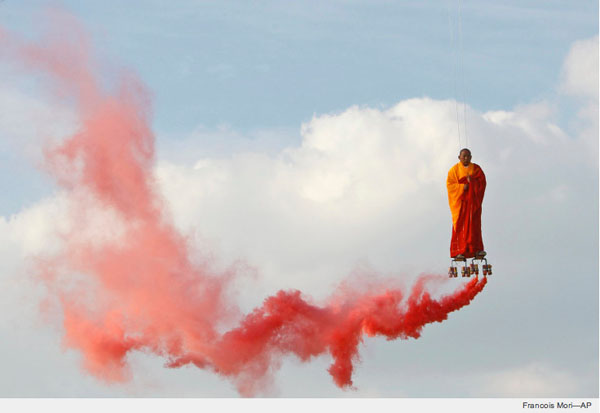
This monk traveling the sky on magic powered, red smoke exhausting, like roller blades looking devices might be very tempting to be thought being photoshopped, but its not. It’s real. This is what the Chinese artist Li Wei performed at La Villette in Paris in March 2012.
And this one, president Obama holding a crystal ball in his hands looking for the future of the world, which could be a typical example for photoshopping, and its not. Also this one is real.
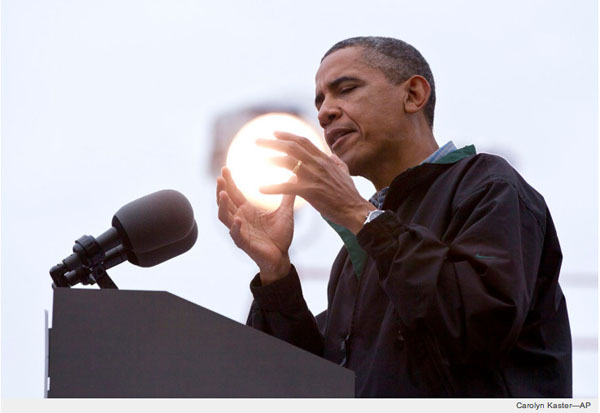
These two images are from the TIME Magazine’s TIME Picks of the most surprising photos of 2012. They are a wonderful example how real moments hold the most beautiful surprises and one only needs to see them, well and press the shutter at the right time. But they are there and it’s again a pure question of seeing.
Keep your eyes open and look for the surprise and captured it.
Happy snapping!
Ute Sonnenberg for www.rohoyachui.com
The Downside of Photo Apps: Instagram
19/12/12 15:51 Filed in: Photography & Art

It was so much fun, snapping away with Instagram, having fun choosing a fancy filter and sharing it right away with your social network. That was almost a year ago and many has change since then.
It started with the photo app getting slower with every update. Somehow they managed to make the app more complicated with the same features. Just so many steps have to be completed and decisions to be made before being able to shoot the next photo.
Then Facebook bought Instagram for an astronomic amount of money and the updates felt more and more like Facebook strategy of tightening up the service for total control and merger with the social network. Now the next step was taken with the new user terms and conditions with as a result a huge outcry of the Instagram users from photo journalists to National Geographic and everyday snappers. Instagram can sell your images without telling you for advertising, and you won’t see any payment, you won’t even know.
It is a very confusing and disturbing matter. National Geographic as paused their Instagram account and might erase it, if the terms are indeed of that meaning. People went onto the streets to protest against it and a whole wave of blog posts is trying to explain what’s going on.
Most worrying is also the mention that the Instagram terms are pretty much the same now as the Facebook terms, which would mean that Facebook can sell you photos without telling you and mostly using them as they wish.
Where is this going? It is like anything people like, enjoy and love is kidnapped, held hostage and abused by greedy powers or going more the psychological path, narcissistic powers?
Read more about it in the listed blog posts below:
Instagram changes terms of service, but will pro photographers flee anyway?
Insta-gone?
No, Instagram can't sell your photos: what the new terms of service really mean
Why I Quit Instagram
Instagram Clearly Hates You, So Quit
New Terms of Use for Instagram: Selling Your Photos Against Your Will
Why Instagram is Great for Photographers, and Why You Shouldn’t Use It
Facebook Poisons Instagram For Its Most Valuable Users: Real Photographers
Ute Sonnenberg for www.rohoyachui.com
Paperwork Help to Sell Your Images
18/12/12 17:03 Filed in: Photo Tips
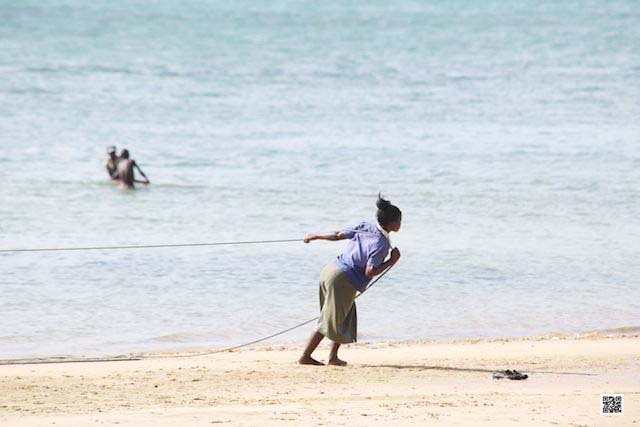
Have you ever been in a situation that you wanted to sell an image, but were unsure if you could, because there were people in it and houses? If you had liked to sell it to Getty Images, they would have told you immediately that you would need release forms to do so. A release form for each person, also miners and for each house would be needed.
Do you have release forms right at your disposal whenever you walk the streets? Probably not and even finding out where to get them can be a mission. At least it could be a mission, but there is help. Getty Images itself provides release forms to be used by photographer who want to submit images to them. And there is also Docracy, a website that provides all relevant forms for photographers, put together by professional photographers in the United States. Even contracts when you want to work with galleries and other really important forms are available on their website to make your life easier and safe with regards to your rights and a proper payment.
You might want to consult an attorney anyway, but the forms make you already wiser for the conversation with the legal professionals.
And now the probably most difficult part of having the forms with you whenever you are out to snap away. You will really not find that person ever again you just snapped at the park, just let the person sign the form and you are safe when selling the image.
Think practical and make it easy for yourself.
Happy snapping and selling!
Ute Sonnenberg for www.rohoyachui.com
Travel Memories 2008: On Safari in Africa - Day 16
17/12/12 12:14 Filed in: Travel & Inspiration

We heard baboons alarming the whole night. We thought the lions must still be there then and we went straight to the spot where we saw the lioness. Nothing. Paul checked other roads he thought they might have crossed, but nothing. They were gone or deep in the bush.
So we drove over to Mzima Springs, a beautiful lake and drinking water source. They built some kind of a tower in the lake where one can see the fish swimming and look just above the waterline like a hippo. A lovely place and Paul took the chance while staying there to clean our vehicle from tsetse flies. He was not very patient and focused this morning and I heard later that a family member wasn’t well and he was worried. Next to that we had to go to the main gate to recharge our smart card to be able to pay the park fees. Still a consequence from the mixed up itinerary.
We tried to leave worries and annoyance behind when we headed out for the afternoon game drive and we got rewarded. Three klipspringers were playing around on the rocks just next to the road. That was a rare and awesome sighting.
That night I woke up and was afraid. Chewing noise very close to my tent and very loud. I thought this must be something big and my new tent was very small, 1,50 m x 1 m and 70 cm high. I was lying there thinking, if this something big steps on my tent I’m gone, but I told myself too that there was a little roof above the tent and that would prevent an animal from stepping on the tent. I fell asleep again and heard the next morning that it was a giraffe.
Ute Sonnenberg for www.rohoyachui.com
Bringing Back the Magic and Finding the Awesome
14/12/12 15:33 Filed in: Photography & Art

One might be tempted to say that photography has become hyped up as a technical spectacle of megapixels and Photoshop features, with little magic left. Technology enthusiasts might disagree and say that the technology is magical and fascinating, yet that is a car too. What is the magic of photography?
Imagine you are walking the path you walk everyday, the route to your work, to the bus, to the subway or to the mailbox and you thought you have seen all what is to see on that path. But one day you take your camera and you photograph while walking that so familiar path and suddenly you start seeing again. There might be little flowers in your neighbor’s garden, a broken wooden chair in a driveway creating interesting patterns on the tarmac or a cat spying on you every morning from behind the curtains.
Photography makes us seeing and appreciating the beauty in little things we usually pass unnoticed. Photographs are moments of awe that brighten up our days. Maybe the magic of photography is simply the “seeing” with little technology needed, although technology can add lots of fun.
Keep looking for the awesome and find magic.
Happy snapping!
Ute Sonnenberg for www.rohoyachui.com
Think Twice about the Megapixel You Want
13/12/12 19:03 Filed in: Photo Tips
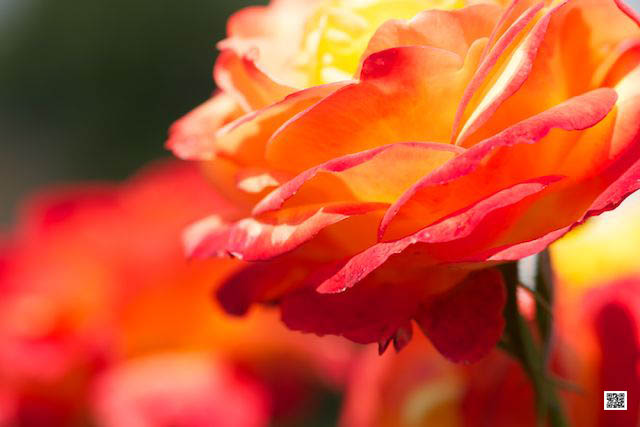
It was announced that Canon would come with a close to 50 Megapixel camera in October, but nothing happened. Yet the rumors are persistent that this “monster” will come and Sony will follow with their own high megapixel camera.
As questioned earlier, do we need or want that? The files are extremely big and the camera is getting slow and so does the upload to your computer.
Adobe guru Scott Kelby found out for himself when he wanted to upload 1,000 raw image files to an external hard drive. He had not considered the file size and the disk space was not enough to upload the 47 GB the 1,000 images were, shot with the Nikon D800. Just for the idea of comparing, 1,000 raw file images shot with the Nikon D3s are 15.5 GB and 1,000 jpeg images shot with the Nikon D700 are 6.5 GB.
Do we really want that?
Ute Sonnenberg for www.rohoyachui.com
information source: PetaPixel
Beck Hanson: Inspiration for Fun Photography Experiment
12/12/12 17:44 Filed in: Photography & Art

Singer-songwriter Beck Hansen has just launched his 11th album “Song Reader” and it’s an album you can only listen to when you play it yourself or others do it for you. This album comprises of 20 full-color booklets of sheet music!
What an idea! Can there be anything more inspirational and stimulating engagement and creativity like that?
Imagine “sheet photography”. How would that be? You take a photograph and instead of showing your photograph, you tell how it looks and feels. You describe what is on the photograph, the subject, the colors, the surroundings and then the people who want to see it photograph it. That allows the viewer/photographer to add his/her personal dimension to your picture, just like when playing Beck’s songs.
Want to give it a try? The photo is a vase on a coffee table in a private home lounge with a bouquet of wild flowers with the smell of late summer. If you would like to try it, just add a link to the image you took as a comment to this post and all images will be posted lets say before the end of this year.
Let’s go and keep snapping!
Ute Sonnenberg for www.rohoyachui.com
Louise Dahl-Wolfe: Natural Light
10/12/12 17:59 Filed in: Photography & Art

It might not be a model’s favorite thing to do, getting up at sunrise for the photo shoot at Miami South Beach, just because the photographer wants the best light. But isn’t natural light anyway the best light?
Louise Dahl-Wolfe was the pioneer in outdoor fashion photography, doing fashion photo shoots with natural light and inducing a whole movement, called Environmental Fashion Photography.
Some might prefer studio light, because it can be controlled completely, but natural light gives photography the authenticity we seem to be longing for in all we do and love. It is the ideal partner for great design and helps when the design is not so great by adding the splendid beauty of nature.
Louise Dahl-Wolfe understood the natural light very well and created the most beautiful fashion photography. Her work was and is inspiration to team up with the ambient light and encouragement for photographers to go outdoors!
Plunge into the natural light and see where it takes you.
Happy snapping!
Ute Sonnenberg for www.rohoyachui.com
Photography for Business - How to get Started
08/12/12 16:27 Filed in: B2B
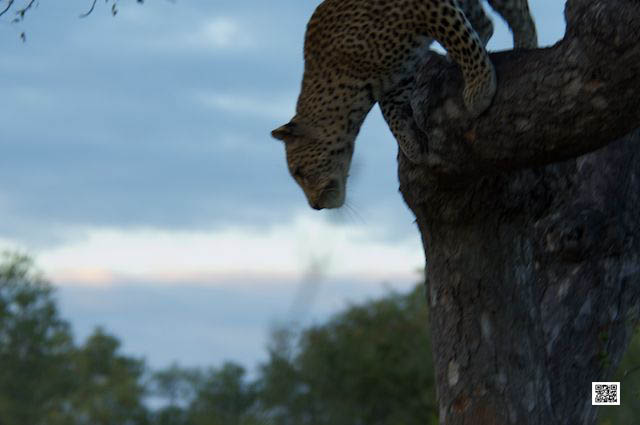
Photography is probably the most interesting tool for businesses to accelerate innovation and growth. But how to start and what does it need to use it?
Not much.
a camera, a cell phone camera is just fine
something to upload the images to like an iPad or a laptop
a training to learn how to read the images
Not needed are:
technical photographic knowledge
experience in photography
expensive equipment
What are the benefits?
Easy and instant access to insights and knowledge
Accelerates innovation and learning process
Allows access to until then untapped sources of information
And not to forget, it is playful and fun using it.
Let innovation begin now.
Ute Sonnenberg for www.rohoyachui.com
Travel Memories 2008: On Safari in Africa - Day 14
02/12/12 07:02 Filed in: Travel & Inspiration

It was a clear morning. The wind had died and the Mount Kilimanjaro was beautifully visible. We went out to the little mountain/hill, serving as a viewpoint to photograph the Kilimanjaro. It was awesome and I enjoyed the serenity of that moment. A clear, calm morning in this majestic landscape, it was splendid. After a while we carried on with our game vehicle and followed for the rest of the morning the animals from swamp to swamp.
At lunch time the wind was back. 1.45 p.m. a rainstorm, 2 p.m. again a sandstorm, 2.15 p.m. sun and hot. This carried on for the whole afternoon rest time and there was no place without dust. At 4 p.m. I stopped practicing accepting and started thinking again. We need to change that. I got out of my tent and talked to Paul an Alex. We need to move the tents behind the bushes. They looked at me in unbelief but did move the tents, mine first still skeptical. But soon they were happy we did it. It worked!
4.30 p.m. we wanted to leave for the game drive but the battery was flat. With the help of a couple of Masai we got the car going and left the camp. Just around the corner on a smaller swamp was an elephant baby lying on the ground and two adults were standing next to it, watching and not moving. I thought the baby was dead and felt sad for them, but then arrived an elephant bull and the two adult females woke up the baby. It had been very deep asleep and needed some time to get up. I felt relieved.
The sand storms carried on that night, but we had a good sleep behind the bushes … until the mongoose came, shouting at each other and turning the whole place upside down.
Never a boring moment in the bush.
Ute Sonnenberg for www.rohoyachui.com
Safari Story: Skimmer Male being Naughty
01/12/12 07:00 Filed in: Safari Story
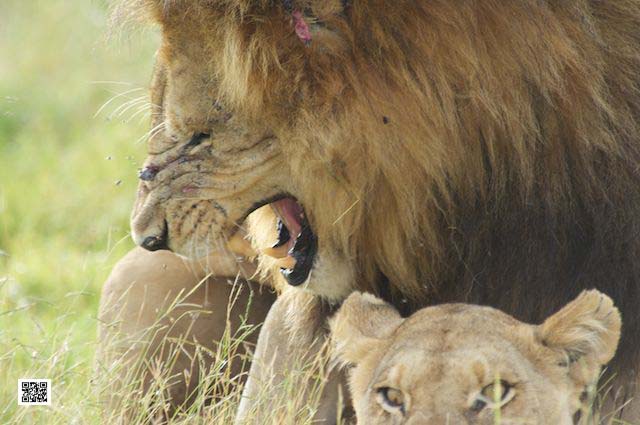
Duba Plains is an island in the Okavango Delta in Botswana, famous for its lion and buffalo encounters. Over years the “Duba Boys”, two lion brothers, were the dominant males of the local pride, but times got difficult when a buffalo killed one of the brothers. That meant for the remaining brother that he had to control the entire territory by himself and this was a difficult task. Male lion walk the borders of their territory to make sure there are no intruders to maintain their authority. But when the territory is a bit big for one male lion the intruders can slip through. And that is what “Skimmer Boy” from the neighboring island did.
We found him one day mating with one of Duba Boy’s females. He didn’t get to that point easily, like his face showed. There was obviously a heavy fight between the two male lion, which the intruder won. He was at last happily mating with the female for days. That was definitely a sign that change was coming upon the pride, the remaining Duba Boy was not strong enough to control the territory without his brother and Skimmer Boy had made his move.
Let’s hope that the situation was cleared before the new cubs were born. Otherwise the naughty move of Skimmer Boy might be not so smart for the newborn cubs. Male lion do not accept cubs of another male and kill them.
Being a lion is not an easy life, although we might think that when seeing them snoozing for the whole day.
Ute Sonnenberg for www.rohoyachui.com
Andy Warhol: The Visual Arts and Photo Apps
30/11/12 06:58 Filed in: Photography & Art

When Andy Warhol created these images nobody even thought that there would be a thing like Instagram one day. He brought the visual arts to new heights by playing with “filters” and color distortion and created the most appealing pop art paintings millions still love today.

Nowadays we all can be Warhols by using apps like Instagram and Hipstamatic to give our images the on the snap arty touch. Would he have liked it? Most likely he would have wielded the apps like nobody else, creating visual art at its best. So what can we learn from him? Probably the use of yellow, a color that screams at you and yet you keep looking. It’s that unrestricted use of color that strikes and that might also be the secret behind the success of photo apps like Instagram and Hipstamatic. You can go wild!
Keep enjoying it and add some Warhol to your photography!
Ute Sonnenberg for www.rohoyachui.com
How Photography can Accelerate Innovation
29/11/12 16:30 Filed in: B2B

Many things were said about Steve Jobs and probably the most significant was that “he saw things”. He had the ability to see what can be done and what people would love to have and use. He saw innovation.
Not many people are as gifted as Steve Jobs, yet there are many people working on innovation and developing fascinating new things without probably having the ability to “see” like Steve Jobs did. It might be a disadvantage not to see the innovation, because we understand much easier where we are going and for what we are going when we see the goal, visualize the goal.
That’s the moment when photography comes in. Now you might think how can one photograph something that doesn’t exist yet, an innovation, an idea. Well it is possible to visualize ideas through photography and even the way to achieve the goal can be photographed. One simply got to learn how to read the images.
It’s probably the way Steve Jobs saw “it”. He saw devises, software, nature, people, actually all around us and he had the ability to see beyond it and visualize the innovation. We see also all what is surrounding us, yet we might need a little help from photography to see beyond it and to learn how to use the information we gather that way.
No worries, it is easier done than to talk about it. Like with anything else, pictures are saying more than words and training is available to learn how to utilize photography for innovation. Ask for them, if you are interested.
Keep your vision inspiring your everyday doing and innovation will come.
Ute Sonnenberg for www.rohoyachui.com
Creative and Experimental Ways of Exhibiting Your Photographs
28/11/12 17:49 Filed in: Photography & Art

With billions of photographers out there one needs to be inventive in finding a way to stand out in presenting one’s photographs to the public. The classic album and photo book are always good, if it is the touchable paper version or the viral digital version, they are all beautiful. Besides that it is an exciting thing when a photographers can do an exhibition. Not only the stress in choosing the images for the show, also the presentation of the images itself and the theme of the exhibition can cause some headache. How can you make people come to see your art?
This is the moment when an inventive spirit is needed and there is no harm in looking what others do and get some inspiration.
Why not do a “Garage Sale” like exhibition and of course sell your photographs? The MoMA is doing it and so you can. At the moment the Martha Rosler’s “Meta-Monumental Garage Sale” is on at the MoMA until November 30 and it seems like a very clever idea. It feels more informal to the people and who does not like to sniff around a bit in the casual atmosphere of a flea market to unearth treasures.
Another genius idea is the “Steal My Photography” exhibition of Denmark-based photographer Lukas Renlund. He hung up 40 framed photographs outdoors and invited passersby to “steal”-take any single photograph they wanted. There was only one condition. They had to hang the photo up, wherever they wanted, take a photo of it and email the photo to Renlund. This is such a fantastic interactive and viral idea with benefits for all, photographer and photography lovers.
These are just a few ideas of experimenting with art exhibitions and maybe they are an inspiration to create your own creative and experimental art show.
Think different and let your art spark!
Ute Sonnenberg for www.rohoyachui.com
What to Think Of When Photographing from a Plane or Helicopter
27/11/12 17:15 Filed in: Photo Tips

Besides photographing from a hot air balloon, photographing from a plane or helicopter is probably the most exciting way of capturing the beauty of Africa. To make your photographic bird view adventure a success, think of the following simple tips when going air born.
Make sure that you are not shooting through a window! There are helicopters without doors and for the rest with lots of glass for the perfect view. They are the perfect match for your bird view photography. If you are choosing for example a Cesna, make sure you can get the door on your side removed for the flight. Usually sky diving planes have the door already removed and otherwise ask the pilot, if he/she can arrange that the door gets removed for the flight.
If you can, choose a helicopter. Helicopters are steadier in the air for photography. A plane can be bumpier depending on the weather. Helicopters are also more flexible and can stand still for you, if needed.
Take off or secure everything you could loose easily during the flight like earrings, shawls and other loose or possibly getting loose things. Try not to wear glasses/sunglasses while photographing. It is disturbing your photography and you might loose them. Secure your camera, but do NOT hang the strap around your neck. The gravity will pull your neck down, you will get tired very quickly and it might slide over your head and then the camera is gone. Have the strap diagonal over your shoulder like you would do with a shoulder bag (the way it doesn’t slide from the shoulder).
Don’t be afraid. Although there is no door, you won’t fall out, unless you want it. But don’t do it when you are afraid of height, you will not be able to control the fear in that situation and you might fall. It is all more a question of psychology, imagination and having seen to many Hollywood movies. Secure yourself on your seat and relax.
Now shoot away!
Ute Sonnenberg for www.rohoyachui.com
Send Love for Christmas
26/11/12 20:41 Filed in: Photography & Art
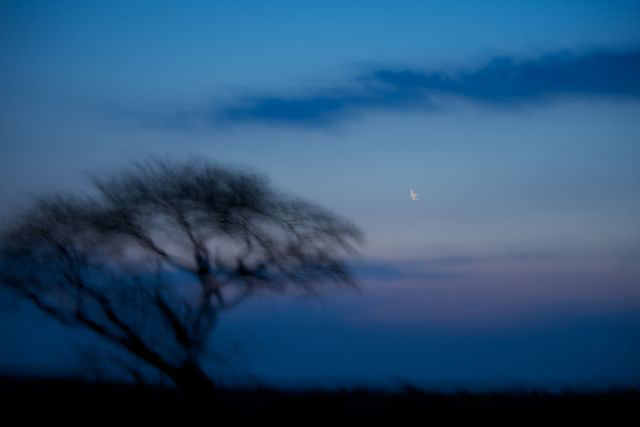
With Black Friday just behind us and Cyber Monday still in full swing it might be a good idea to think of the essence of giving. Isn’t it all about love?
Well, if we can make somebody very happy with a new set of coasters or the newest electronic gadgets, just do it. Yet there is a way to send love in a more intimate and lasting way. Send your images as a loving Christmas card.
Use for example the marketing tool Mailchimp for your very private Christmas cards to family and friends. Mailchimp is usually used by companies for their email marketing, but of course it can be used for anything else. It is for free, offers plenty of customizable templates and you can import your email address list and send it out at once to all. You can create your own Christmas card with your own photographs, sending the message you want your friends and family to receive in a stunning design. It is a great tool to express your creativity and love at this magical time of the year.
If you wish to employ somebody else’s design abilities, a very good place to go are the Jacquie Lawson e-cards. It is not possible to integrate your own images, but the design and animations of the cards are truly lovely and touching. It costs only a bit to join this website, but its worth it. They offer for all sorts of occasions really loveable cards.
And of course there are still the probably most desirable real hand made cards with hand cut pictures, ribbons and hand written words. Nothing can beat that. They are treasures, kept forever in lovely boxes to be unearthed years later to remember the moment of received love.
Send your love too!
Ute Sonnenberg for www.rohoyachui.com
Living Pictures with Light Field Camera Lytro
22/11/12 11:12 Filed in: Photography & Art

Photos we take with our “normal” cameras are 2D images and nothing is wrong with it, yet there is more what one can do with a camera and this is when Lytro comes in.
The Lytro camera is a light-field camera. That means the camera captures the 4D light field information of a scene and by doing that, the images can be refocused and even the perspectives can be shifted afterwards. Ever had that moment that you wished you had taken the photo with a different angle, different point of view? You can change your point of view now with the new Lytro feature from December 4th just at your computer after the image was taken, well when the image was taken with a Lytro camera.
Comes pretty close to our human eye, doesn’t it?
Happy snapping and playing!
Ute Sonnenberg for www.rohoyachui.com
Image above by Greg Tokarski
A Photograph is what Your Subconscious Sees
19/11/12 17:53 Filed in: Photography & Art

While reading an article by Roger Cicala on The Camera versus the Human Eye I realized that we humans seem to tend to see the products we once created as superior above nature’s creation. At least I got the idea when reading the article, like the eye gets compared with the camera and has to make up to the expectations in matching the camera specs.
Its rather interesting that we approach it like that and not the opposite way, that the camera is an attempt to copy the human eye. Nonetheless the article points out that the human eye has an incredible number of megapixel, 130 million, from which 6 million can see color, yet the article goes further into every comparable detail with a camera, weighing the pros and cons of “technical” specs.
I think comparing the two like that is like comparing apples with peers. The human eye evolved over millions of years with a functionality to serve survival. A camera was created with a different purpose. It is supposed to capture what we see and not so much in order to survive, but to show and share what we see with our subconscious.
And here it comes.
“Unlike the intermittent shutter clicks of a camera, the eye is sending the brain a constant feed video which is being processed into what we see. A subconscious part of the brain (the lateral geniculate nucleus if you must know) compares the signals from both eyes, assembles the most important parts into 3-D images, and sends them on to the conscious part of the brain for image recognition and further processing.” Roger Cicala
The subconscious makes the choice what we see consciously and because the human eye is made to help us survive it will provide our conscious with images like face recognition and alike. But our subconscious receives all we see, also what is not essential to survival and the information sits there with the subconscious and it does not even create the 3-D images for us, it just keeps the information and although it’s subconscious, we know that there is more.
Roger Cicala was wondering why he often likes more what he captures with the camera, although it’s not what he saw with his eye.
“But I guess my only real conclusion is this: a photograph is NOT exactly what my eye and brain saw at the scene. When I get a good shot, it’s something different and something better,…” Roger Cicala
No, a photograph is what your eye saw. The photograph captures the information that was sitting unprocessed to the brain with the subconscious. It creates the images of this unprocessed seeing or in other words, a photograph is what your subconscious sees and when taking it a step further, your subconscious was seeing for you all along. And that makes you connect with your photographs so deeply and liking them dearly.
Keep seeing, keep snapping!
Ute Sonnenberg for www.rohoyachui.com
Safari Story: Serengeti Flooded
17/11/12 16:01 Filed in: Travel & Inspiration | Safari Story

It was November 2006 and the time of the short rains in Tanzania, normally not the time photographers want to visit the Serengeti, but I thought it would be great to see the savannah during rains and to shoot with the soft light.
At arrival in Arusha it was announced that our safari flight to Klein’s Camp in the Northern Serengeti would have a delay and would not be able to land at Klein’s. There had been too much rain and the airstrip’s soil was to soft for a plane to land. After a while a solution was found. We would fly to Seronera in the middle of the Serengeti and from there carry on by 4x4.
During our flight over the Serengeti we got a pretty good impression what was going on. The Grumeti River was full and the plains were flooded. The often-dry Great Plains were wetlands. From Seronera airstrip we carried on in our 4x4 Landcruiser, heading north towards the Kenyan border where Klein’s Camp is situated. The road we were driving on was still all right, although we had to be careful with the patches of black cotton soil, a tricky soil that looks dry and the moment you drive on it, its like driving on wet soap. After driving for a while we got a call via the radio that another vehicle from Klein’s got stuck and if we could help pulling them out. Their position was quite close and we headed to them to help. The vehicle had dug itself deeply into the black cotton soil and we had to be very carefully to not get stuck as well. The guests were standing next to the vehicle with a desperate look in their eyes, but it was soon clear that we couldn’t pull them out. We would get stuck too. So all the guests got in our vehicle and we carried on. The guys would find a solution for the vehicle later, at least the guests were off the road and on-route back to the camp.
In order to get to Klein’s Camp one has to cross the river. When we arrived at the river it was clear that we wouldn’t be able to drive through it, definitely not with all the people on it. We had to drive to a little pedestrian bridge, get out and walk with our luggage over the tiny bridge to reach the vehicle that was waiting for us on the other side. Masai people were awaiting us on the other side, dressed traditionally and with spear and with a big UMBRELLA! It was such a funny sight to see the brave Masai warriors with an umbrella to shelter from the rain.
Well, we finally arrived at the camp and our driver proved to be brave and a good driver as well. He drove through river with the empty vehicle and everything was fine.
We were the last guests arriving at Klein’s Camp for several months. They closed the camp after we had left. The short rains turned out to be very long rains and the camp was only reopened in August of the following year. Nature has always the last word, not matter what humans want.
Ute Sonnenberg for www.rohoyachui.com
How to Photograph like Francis Bacon Painted
16/11/12 09:41 Filed in: Photography & Art

Bullfight by Francis Bacon
What do you see when looking at a Francis Bacon painting? Essence.
Yes, there is still recognizable shape, yet no disturbing details. The subject’s essence is captured in the painting and without seeing the bullfighter’s face we know it’s the bullfighter. The painting is condensed essence and when looking at it we can feel the energy between the man and the animal, the power of the moment the tension, the fear.
How can a photographer paint like Bacon? By daring to shoot away and simply following the energy of the moment.
Imagine a horse race. The horses are coming with such a speed that there is no time to think at all. You got to shoot away, just follow with your camera the energy of the racing horses and you will get the most amazing photographs. You will feel the energy and there is no choice, it lasts only for seconds, so just let go and shoot. The horses are faster than you and the camera, so probably most of the image will be blur, but the essence will be in focus and the blur rest of the image shows the dynamic of the moment. The viewer will feel it, just like in a painting from Bacon.
Dare!
Ute Sonnenberg for www.rohoyachui.com
Romance: Karen Blixen & Peter Beard
15/11/12 11:02 Filed in: Photography & Art

Do not jump to conclusions, romance is not an intimate relationship, romance is a strong connection sometimes people have, like mothers with children, siblings, soul mates or like we sometimes call them “like minded people” or rather “like hearted people”.
Peter Beard visited Karen Blixen at her home in Denmark. This was in the early 60ies and Beard was at that time a young man who had just started exploring East Africa and had been very much drawn into Blixen’s book “Out of Africa”. Well, a lady from Blixen’s household said that he seems to remember Karen Blixen of her big love Denys Finch Hatton, yet the connection the two was most likely the love and fascination for Africa.
Beard took some great photographs of Karen Blixen and probably even the last one ever taken of her, she died in 1962. Quotes from Out of Africa are on many of Beard’s photographs and it seems that they saw Africa the same way, had the same connection with the continent and its people and wildlife, shared the same fascination and loved it deeply. What Blixen was saying with words, Beard was saying with photographs and Blixen’s words on Beard’s photographs are an overwhelming combination.
Find a selection of Peter Beard’s work on his website or in the book Peter Beard Trade Edition or get in the car and drive to Arles in the Camargue in Southern France. Hotel Nord Pinus in Arles has an impressing small collection of original Peter Beard photographs, including a Karen Blixen portrait.
What fascinations are you sharing? Even thought to capture them in photographs?
Ute Sonnenberg for www.rohoyachui.com
photo above: Peter Beard photo of Karen Blixen, shown at Hotel Nord Pinus in Arles
Refreshed Nikon DSLR Range
14/11/12 11:16 Filed in: Photography & Art

This year Nikon did quite a revolutionary refresh of its DSLR line with the release of the flagship camera D4 and the high-megapixel cameras D800 and D800E, leaving some professionals with the dilemma to choose between the two of them.
But it seems that they are not done yet. Nikon Rumors reports that within a few weeks the new D5200 will be announced. This camera will replace the D5100 as a mid-range DSLR for consumers and enthusiasts.
In case its getting a bit confusing with all the different cameras, here a chart with the Nikon DSLRs for a better orientation. (via PetaPixel).

Will this be the last announcement of a new camera for a while? Sometimes big companies breath in for a few years and then breath out also for a few years, meaning it takes a while to develop new products and then release them in a big wave.
Lets see what comes next, maybe a few new lenses?
Ute Sonnenberg for www.rohoyachui.com
Striking Photo Stacking Technique
13/11/12 13:27 Filed in: Photography & Art

There are many ways of painting with your camera and there are probably even more ways of painting with Photoshop, but this one is really a nice one.
Matt Molloy’s photo stacking technique cloud images look just amazing, like big rough brush strokes have set the clouds on the pictures.
Here is how Molloy does it:
“To make these ‘photo stacks’, I first shoot a timelapse, taking a photo every 5 seconds or so. (Settings differ depending on the subject and lighting conditions). I then merge several photos into one image using Photoshop. I start with the first image from the timelapse as a normal photo and then blend the rest of them with the ‘lighten’ blending mode. This only adds things that are brighter than what was in the first photo, and so you can see things like the paths of stars as they move across the sky. (The movement of the stars is actually from the earth’s rotation).”
It sounds like a lot of work, but it looks like being worth trying.
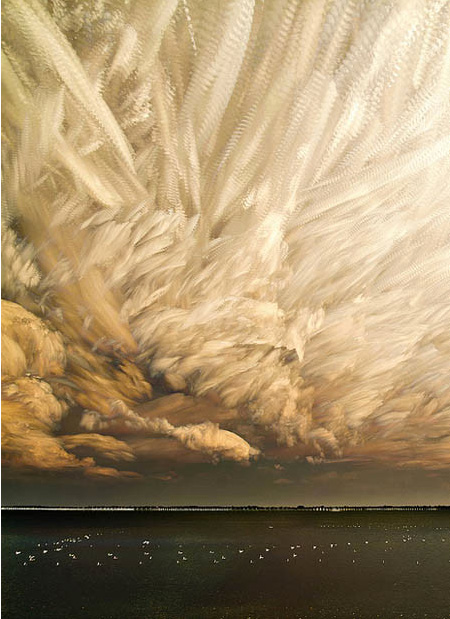
Find more of his work can be found on Flickr and 500px and good luck with playing with light.
Happy brush stroke setting!
Ute Sonnenberg for www.rohoyachui.com
Travel Memories 2008: On Safari in Africa - Day 11
11/11/12 15:42 Filed in: Travel & Inspiration

I obviously needed it so much, a relaxed day at Lewa Downs with a nice and dry room, a shower and everything just working. So, happily I went out on the game drive with my guide form Lewa and it was really fun. He made a Swahili lesson from the game drive and it was lovely.
Twende …Let’s go. My guide Joel was serious about teaching me Swahili. We started cruising on Lewa in the morning twilight when the rolling hills of Lewa are bluish and mysterious, an awesome light for magical shots. All together it was a very nice day and we saw twiga…giraffe, punda…zebra and pumba mingi … many warthogs and eventually simba … lion with ntoto ya simba … lion cubs.
Learned some Swahili now?
Lala Salama… Sleep well.
Ute Sonnenberg for www.rohoyachui.com
The New Yorker's Wild Dogs
12/11/12 15:39 Filed in: Photography & Art

There seems to be no place in the world without dogs. Even in the bush everything is dropped when wild dogs are spotted and the game vehicles race to the sighting. They are so rarely seen and they are endangered in many areas, that seeing them is a very exciting experience.
Spotting dogs in big cities is not quite a rare sighting and dogs in general are an essential part of our lives. They seem to help us with all sorts of things, even with writing. The New Yorker just released the The Big New Yorker Book of Dogs by Maria Popova with dog themed pieces of literature. Interested? Be careful, its about dogs and only about dogs, as Malcolm Gladwell says in the foreword:
“A few words about you. You bought this book: several hundred pages on dogs. You are, in other words, as unhealthily involved in the emotional life of dogs as the rest of us. Have you wondered why you bought it? One possible answer is that you see the subject of man’s affection for dogs as a way of examining all sorts of broader issues. Is it the case of a simple thing revealing a great many complex truths? We do a lot of this at The New Yorker. To be honest: I do a lot of this at The New Yorker — always going on and on about how A is just a metaphor for B, and blah, blah, blah. But let’s be clear. You didn’t really buy this boo because of some grand metaphor. Dogs are not about something else. Dogs are about dogs.”
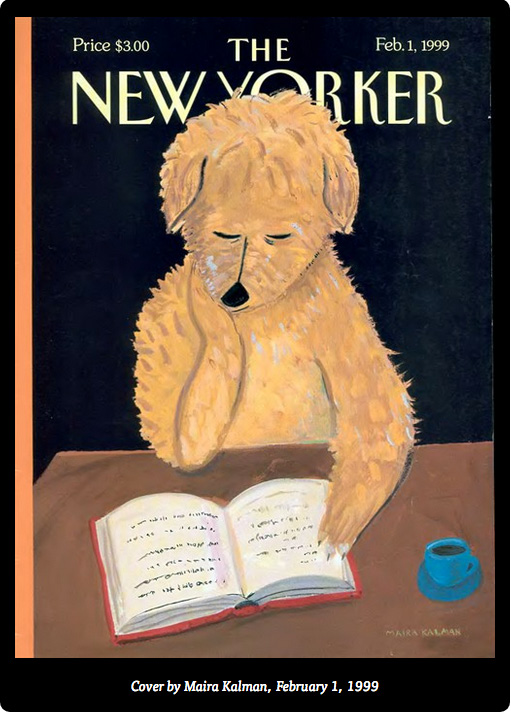
Well, I think dogs are more than dogs, even in the bush and the excitement of so many savvy bush people and guests can’t be wrong, they are something special. When you see a pack of wild dogs on the go, how they interact and how they hunt, it’s really something special.
Keep being inspired by dogs and photograph every now and then your own dog. They are great subjects for awesome photography.
Ute Sonnenberg for www.rohoyachui.com
Safari Story: The Loving Brother
10/11/12 14:57 Filed in: Safari Story
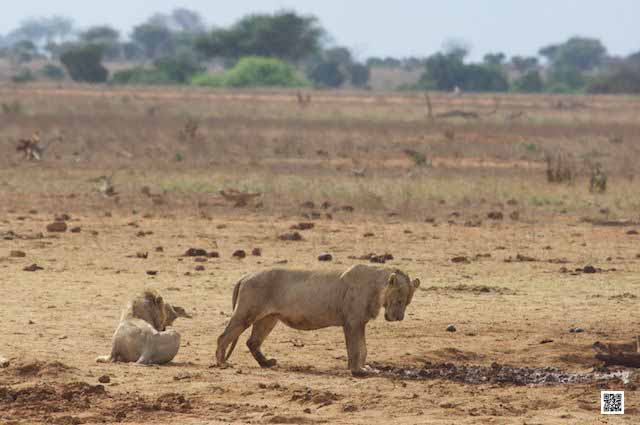
Tsavo East is a huge National Park in Kenya with vast bush sections and a big elephant population. We were driving one morning to a waterhole, usually a place with a guarantee so see animals. When were already close to the waterhole we saw no animals at or around it and we looked at each other and had all the same thought, there must be a cat. When a cat is at a waterhole the other animals stay away and yes, there were two male lion drinking. What we didn’t see at first was that one lion looked very ill. He was incredibly skinny and could hardly walk. His brother was also skinny, but not injured and didn’t look ill.
We settled to watch them. It was a heartbreaking morning. The ill brother was obviously suffering a lot, he had difficulties with drinking and seemed very dehydrated. His brother stayed always with him, never left his side. When the sun got stronger they moved a bit away from the waterhole into the shade of a tiny tree. It took the ill lion for ages to walk the 50 meters to the tree. There they rested for a long time before they continued moving into thicker bush to hide from the sun and maybe to find some food. It was so sad to see the ill lion walking very slowly and weak with his brother on his side. It was very moving to see the healthy brother rather dying as well than leaving his brother behind. His ill brother slowed him down and with the weak brother as a “burden” he was obviously not successful with hunting, but he bared with him and stayed.
We watched them as long as we could see them moving into the bushes towards a little river that was running there and we hoped so much that they would bump into small and easy prey to fill their stomachs and to get some strength back.
I don’t know what happened to them, they could have died both or the ill lion could have died or with a miracle they could have survived both. Lets hope for the latter.
Ute Sonnenberg for www.rohoyachui.com
People behind Photographers like Steven Meisel
08/11/12 15:32 Filed in: Photography & Art
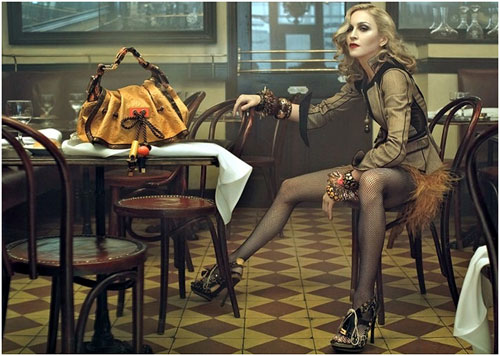
Steven Meisel a press shy and amazing photographer from New York is famous for his fabulous fashion photography. He draws fantastic expressive compositions with his camera and his images have been many times on the covers of major fashion magazines.
Yet, behind a great photographer are also great people, like for example Pascal Dangin, the founder and chief of Box Studios in New York. Some people say he is the most sought after retoucher in the industry, others call him the Godfather of Photoshop. The world of a retouch studio is somehow mysterious, because we usually only see and know the photographer. Get an insight view of Box Studios with the video Mike Saunders shot and if you would like to learn more about Pascal Dangin read here:
How is your postproduction doing? Yes, most of us are doing it all ourselves and maybe we can learn something from the specialists.
Happy learning!
Ute Sonnenberg for www.rohoyachui.com
Hone your instincts: Joel Meyerowitz, Photographer
06/11/12 20:09 Filed in: Photography & Art

A remarkable story to encourage all photographers and almost photographers: the life journey of the New York City–based photographer Joel Meyerowitz.
In 1962 Meyerowitz was working as an art director at an advertising agency when he watched photographer Robert Frank working on an advertising photo shoot. It proofed to be a cathartic moment for Meyerowitz. Back in the office he told his boss that he wanted to be a photographer.
“On the way back to the office, Meyerowitz walked the streets of New York for more than an hour. “I felt like I was reading the text of the street in a way that I never had before,” he says.
When he returned to the office, Meyerowitz told his boss, Harry Gordon, that he was quitting. He wanted to be a photographer. Gordon then asked him a crucial question: did he have a camera? The answer was no, so Gordon lent him a 35mm camera and Meyerowitz embarked on the great journey of his life.
That first day with Robert Frank served as more than just a catalytic inspiration; it laid the foundation for how Meyerowitz would record street life. He bobs and weaves through the throngs of people, searching for that serendipitous moment that becomes a great photograph.
When he is shooting on the street, there isn’t much time to contemplate each moment. “Photography takes place in a fraction of a second,” Meyerowitz says. “There isn’t a lot of time to think about things. You have to hone your instinct. You learn to hone that skill and timing so you’re in the right place at the right time.” Although he has made images that have moved audiences for decades, that has never been his true motivation. “I’m not out there to make another ‘great picture,’” he says. “I’m really out there to feel what it feels like to be alive and conscious in that moment. In a sense, the record of my photographs is a record of moments of consciousness and awareness that have come to me in my life.”” (via Time, by Nate Rawlings)
This life changing moment happened 50 years ago. For this anniversary Meyerowitz compiled hundreds of images into a two-volume book, Joel Meyerowitz: Taking My Time (Phaideon Press).
From November 2, his work is been displayed at the Howard Greenberg Gallery in New York.
Be inspired!
Ute Sonnenberg for www.rohoyachui.com
Fascinating Leopard: Who is she?
05/11/12 16:26 Filed in: Safari Story

I met her first in January 2007. At that time she was a sub adult leopard of about 16 months old, called Vomba young female. The people in the game reserve give the offspring first the name of their mother until they establish their own territory. Then they get a name related to their territory.
This young lady had a brother, Vomba young male. The two were very different. The young female was a very confident girl, not afraid of anything, chasing hyenas away at this young age. The hyenas were most likely only surprised that this young leopard went after them; at least they looked like that. She was just the same cool lady as her mother, very beautiful and determined. Her father was the territorial male, a very strong short built beautiful male leopard. At this time he was in his best years and controlling a big area. Her brother was completely different from the rest of the family. He was shy, almost a bit neurotic, he would do queer things, but somehow also a bit sad. Maybe all the strong characters surrounding him were too much for his fragile personality. He was also always very uncomfortable in the presence of game vehicles, while his mother and sister were not bothered at all. The young lady’s mother’s territory includes the lodge and she does not care if there is a bush dinner in the parking lot of the lodge, she just walks passed it and guests can watch her from their tables. Well, this young leopard lady has definitely inherited her personality.
Since they were old enough to live by themselves, her brother was very rarely seen. The young lady instead is now a grown up beautiful leopard and mother, still in the area, neighboring her mother’s territory. She is still the strong personality and as comfortable as always with vehicles. That doesn’t mean you can easily go and see her, she just does what she wants and if she wants to hide, she hides.
See some of her moments in life in pictures below.
Ute Sonnenberg for www.rohoyachui.com



All above pictures from February 2007.

January 2009


Two images above from December 2011.
Safari Story: The Comfort of the Herd
03/11/12 20:11 Filed in: Safari Story
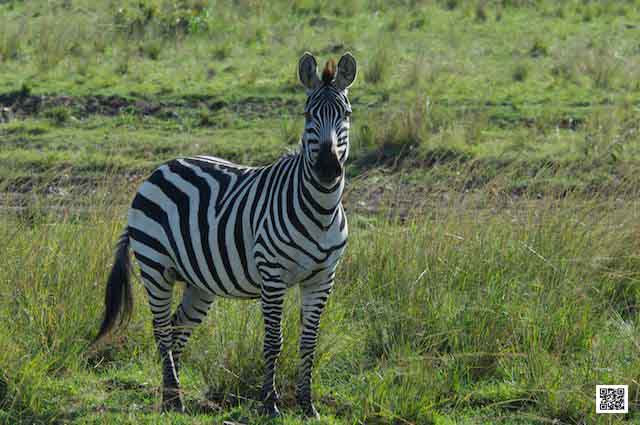
We had just started our afternoon game drive in the Masai Mara when we spotted a herd of zebras. They were grazing on an open plain close to the river. Everything seemed completely normal until we got closer and had a better look. We noticed a young zebra lying on the ground and its mother anxiously watching it. It was soon clear that the young zebra was dead. Its neck had a bite mark, we thought maybe from a leopard, but it was strange that it was still lying there. Maybe the leopard got disturbed. The mother was looking at us as if she was asking for help. It was heartbreaking. She tried to make her youngster to get up and follow her and when the little zebra did not move she came back and tried again. It was terrible to watch her pain and not being able to do anything to comfort her.
After a while the herd started moving of the plain towards the river. It looked like they wanted to cross before it got dark. The zebra mother was still standing next to her youngster, still confused and anxious. Then something very beautiful happened. The herd had to pass her and the little one when moving towards the river and every group of the herd that passed stopped for a while and stood with her watching the little zebra. They shared a moment with her, probably also wondering why she was standing there and not coming. Nonetheless the herd comforted the zebra mother and with the final group she was eventually able to move on as well. And we did too, silent and impressed by the care of nature.
Ute Sonnenberg for www.rohoyachui.com
How Photography Accelerates Business
02/11/12 13:00 Filed in: B2B

Imagine a normal day at the office. Hundreds of emails, meetings, phone calls and deadlines. Studies showed that in the age before emails one could work undisturbed for about 23 minutes, and now? All happens fast, yet time consuming and decision delaying. It’s a miracle that any business is done despite all constant disturbances. Then take even a big organization. There are examples that Microsoft needed longer to put together the team for a certain project than to build the building where the project team was supposed to be located. This is just killing for productivity and growth.
Businesses need to be agile and innovative. That requires short chains of decision and instant access to information. The digital world allows instant access to information, yet an even faster and more efficient tool is still not used, photography. All information at hand any time and anywhere and not Internet needed. This is what photography can offer businesses. It is THE innovative tool of the future and companies who learn to use it will be ahead of anybody else. No matter what field of business and what internal department, photography is the instant insight information based decision tool for managers and industry leaders. With a click on the shutter it reveals all needed information and shows at the same time the solution. It can’t be easier than that. Use it!
Ute Sonnenberg for www.rohoyachui.com
Photography before Photoshop: How Image Manipulation was Always There
01/11/12 08:33 Filed in: Photography & Art

Photoshop is the tool that makes the sky bluer, the model slimmer, the skin flawless and that puts things in the picture that weren’t there before. But image manipulation is not new. It existed before Photoshop was invented.
The Metropolitan Museum of Art in New York is hosting an exhibition devoted to manipulated photography before the digital age. The exhibition is called Faking It: Manipulated Photography Before Photoshop and runs from 11th October 2012 – 27th January 2013. It shows fantastic examples of image manipulation from before digital tools and can make one laugh when seeing the beginnings of this nowadays-advanced tool.
The companion book is available on amazon and probably a nice Christmas gift for the photography lover.
Happy creative faking!
Ute Sonnenberg for www.rohoyachui.com
Retro and Stunning: The Lomography Belair
31/10/12 11:23 Filed in: Technology & Gadgets
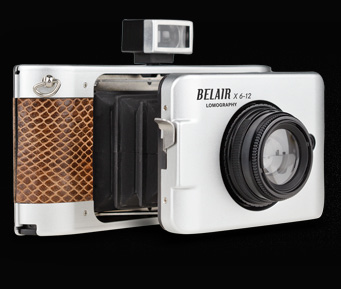
We seem to be in love with retro!
Well, another beautiful new retro camera has entered our lives, producing stunning retro looking images, the Lomography Belair in three great looks.
The Lomography Belair X 6-12 is the world’s first portable medium camera that shoots auto-exposed photographs.
“The Belair can expose in three different aspect ratios: standard 6×9, square 6×6, and panoramic 6×12. It comes with an interchangeable lens system that has two lenses in the lineup: a 90mm normal lens and a 58mm wide-angle.
Features include zone focusing, support for films with ISO from 50 to 1600, a standard hot-shoe mount, a max shutter speed of 1/125s, Bulb mode, and double exposure shooting.” (via PetaPixel)
The design shown on the picture above is already sold out, but find more information on their website and rather pre-order your favorite Belair before they are all sold out.
Happy retro snapping!
Ute Sonnenberg for www.rohoyachui.com
How to Use Photo Apps in an Intuitive Way
30/10/12 11:38 Filed in: Photography & Art
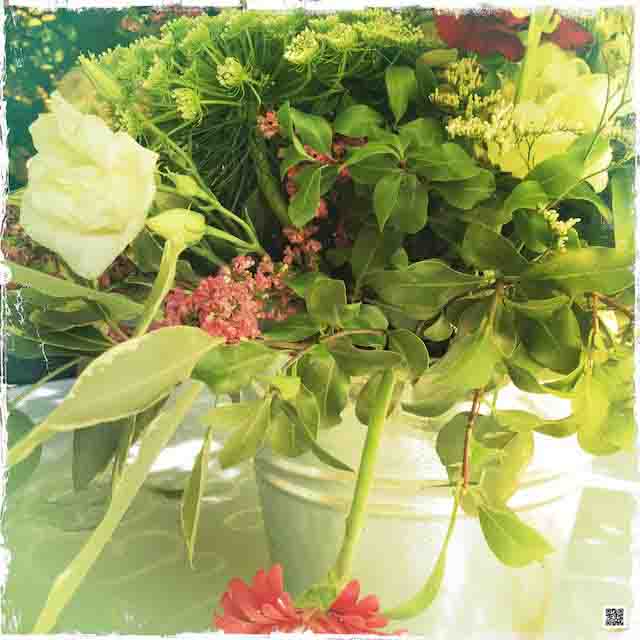
How many photo apps do you have on your iPhone and how do you use them?
Lets look at Instagram, Hipstamatic, 645 Pro and Polamatic. From the technical-practical point of view I must say that the process of finalizing an image in Instagram takes to long for my taste and in Hipstamatic the preparation process of choosing a film, lens and flash is rather complicated. Both technical aspects are somehow disturbing for the intuitional and creative workflow. Yet the filters are a highly intuitive tool, expressing how the photographer experiences the moment.

645 Pro


Hipstamatic
By observing myself in using the different photo apps I realized that the choice of the app depends on the subject and how I see and experience it. Already the choice of the app is intuitive, connected to the feel and look of the photographic subject. Imagine you are walking through a big garden with different sections. One part is forest like with huge trees, another one is with ponds and water features and again another one is a rose garden. For the forest like and open sections I tend to use 645 Pro with the different ratio options. Only occasionally when some objects in the garden asked for attention I changed to Instagram. The rose garden became an entirely Hipsatmatic experience, giving it the old English rose garden feeling. I did not use the Polamatic app, although it is a great tool to create images with descriptions in the old Polaroid style. Probably it’s the right tool when one needs additional words to say something.
Anyway, when using Instagram and Hipstamatic I preferred to choose one setting for all shots, because otherwise I couldn’t just shoot away and let the seeing of subjects flow. At least Hipstamatic lets you shoot away once you choose your settings. Instagram asks processing decision once you took the image and I find this disturbing, which makes it not an easy to shoot away tool.
So, how to use the apps the intuitive way and how to make the right choices? First of all know your apps and what they can do for you. Be familiar with their workflows and know what which setting means for your photographs. Then tune it to the place where you are and understand how you feel about it. Then choose the app that can translate your feeling the best way. And now shoot away.
Happy intuitive app snapping!
Ute Sonnenberg for www.rohoyachui.com
Travel Memories 2008: On Safari in Africa - Day 9
28/10/12 09:35 Filed in: Travel & Inspiration

This was the morning I wanted to focus only on nature and photography. No signal-search, no phone calls, not even talking about the unsolved issues, just going to the airstrip at the end of the morning game drive to fetch the tents.
It was a lovely morning. We crossed the river and cruised through Buffalo Springs National Reserve, which is connected to Samburu. This area is a bit elevated comparing to Samburu and opens wonderful views on it. The landscape is magical and breathtaking. We saw also plenty of oryx with small ones, Grevi’s zebra and lovely bird sightings. Before we crossed back to the other side of the river we checked at the airstrip for the tents, but they hadn’t arrived yet. We would try again in the afternoon.
Back on the other side we finally found elephant. They were indeed walking along the river, back after the rain from the mountains. We tried to follow and got stuck. Fortunately other vehicles were around and tried to help, but they were mini vans and not strong enough to pull out a Landcruiser. It was digging. Suddenly a vehicles came back shouting at us that there was a lion coming. Ok, back into the vehicle and wait, although we couldn’t see any lion and with all the vehicles around we didn’t really feel in danger. The lion sighting we didn’t see brought also another Landcruiser to the scene and we were out of the dip in fife minutes. About forty meters further around a bush a lioness was lying in the shade. Maybe she was disturbed on her path and waiting that the vehicle was pulled out and gone, so she could continue or she was just enjoying the shade.
We carried on to follow the elephants and were just in time to watch them crossing the river. It was an awesome sighting and a great closure of a good morning.
Back in camp I used the time before we would have lunch to upload and process my photos. I did this in the vehicle, because it was the most comfortable place to do it, but this morning I forgot to close the car-door. Imagine a Landcruiser with two seats in the front and after a bar two seats in the back. I was sitting on a seat in the back with my laptop on the seat next to me. While I was sitting there looking at the screen I felt a presence, turned to the left and saw a baboon sitting next to me on the bar, checking out the front of the car. His back was probably about 30 cm away from me. My hand wanted to waive him away like an insect, but my mind told me it’s a baboon. The next thought was to jump out of the car, but that would have meant to come between the baboon and the door and what if he panics. So this wasn’t an option either. Next thought was to give him space, space to escape and that was what I did. He didn’t even look at me, just relaxed turned around and jumped out. All that happened within about 2 seconds and I’m still amazed how much a person can think and decide in such a short period of time and how long two seconds can be. I was a bit shaken, because he gave me a fright and also happy that I finally did the right thing by giving him space. Alex had watched the whole thing and went after the baboon to give him a fright back, which of course didn’t work. The baboons there knew us and just waited for a chance to check out what’s on the dashboard.
We took off for the afternoon game drive early to go to the airstrip first. The tents weren’t there and there wouldn’t be another flight that day. We decided to phone the office. They told us that they didn’t know where to send the tents and couldn’t reach us all day, so it was our fault that the tents hadn’t arrived. We were speechless. They had sent flysheets earlier to the very same airstrip and now they didn’t know where we were. Senseless to say that this was the limit, but yet I wanted to focus on the game drive and to photograph. I would make a decision later and we continued with the drive.
At dinner I told Paul and Alex that I will pay and stay at Lewa for two nights and want them to go back to Nairobi to fix the vehicle, the tents and all the other things on the list. After that, they could pick me up at Lewa and we would continue our trip. Everything needed to be reset. Now even the cigarette lighter wasn’t working anymore and that meant no power at all.
Meanwhile also the nearby Samburu Lodge didn’t have power anymore. Their generator had exploded the night before and the rangers had to help extinguishing the fire.
Also this evening Alex’s mind was filled with stories. He told us that ones in the Mara at the very same campsite we stayed he was invited by a Masai to watch a football match on tv in the Masai shopping centre Talek. The guy came to walk him over and while they were walking in the dark at one point the Masai told Alex to walk more on the left. He did and after a while the Masai said, there was a lion. Alex started shaking and the first thing he did was buying a torch for the way back. He said, he couldn’t focus on the match. He was only thinking about the way back to the camp and that he had to pass the lion again. On the way back he was shining with his torch wildly and holding on to the Masai guy, afraid that he would run of if there was any danger and Masai can run fast and he would be left behind. He got back to the camp safely and the Masai said, just look in their eyes, they can’t have that. Mmm, I don’t wanna try and on my way to the toilet that night I was shining very carefully on the bushes along the path.
Ute Sonnenberg for www.rohoyachui.com
The Year of Storytelling … for Photos too?
26/10/12 18:51 Filed in: Photography & Art

Direct Marketing News forecasted this year would be “the year of the story” and big brands like Nike, Google and Kimberly-Clark use storytelling as a means of communication and leadership. (via Fast Company).
How do we fit in? Which role play stories in our lives? We write blogs, we photograph and we make photo books. We all got stories to tell and digital media allows us to share them with the world and anyone who wants to read them. Imagine only a few years ago. Who was writing a blog? Who was making photo books? Digital photography and social media created easy tools and platforms for expression and suddenly stories were told in words and pictures. Storytelling became accessible to anyone. No publisher would decide if a story was good and allowed to be told. The people are now deciding which story they like. It is amazing how many great storytellers are out there, only browse on this platform and you find the most talented people.
What I would wish for an easier storytelling with pictures is an online tool with templates for photo ebooks, you know just like the Apple photo book templates, but then online and postable to all social media platforms and blogs. The photo ebooks would appear then as small flipbooks, just like blog posts and you click on them to leave trough. Or am I just living under a rock and this tool is already there? If yes, please let me know! It would be so much fun to make easily and quickly online photo ebooks, but just as beautiful as the gorgeous Apple photo books.
Or is this just the idea photo storytelling needs?
Keep telling your stories! Happy creating!
Ute Sonnenberg for www.rohoyachui.com
Magic to Share: Photographs Out of Time & Space
24/10/12 20:30 Filed in: Photography & Art

Joe Berkowitz unearthed for Co.Create amazing photographs that play with time and space.
Have a look and enjoy his article and the incredible photographs by Jay Mark Johnson. (photo above)
Read the article here and get your head spinning.
Ute Sonnenberg for www.rohoyachui.com
Another Found: Ansel Adams Prints Found Sitting in a Box
23/10/12 17:17 Filed in: Photography & Art

Only last week we learned about the never seen before Rolling Stones Images found on a flea market and now there are Ansel Adams prints found sitting in a box at UC Berkeley Library.
The San Francisco Chronicle writes that dance professor Catherine Cole made the discovery after following a trail of documents:
“I kept seeing the name Ansel Adams and thought ‘what the heck is he doing all over the UC archives,’ ” says Cole, who followed this lead to the Bancroft Library, where 605 signed fine prints by Adams sat in a box, among the university’s rare collections.
[...] “This is an extraordinary resource that has been buried like a time capsule,” says Cole, 49, who discovered the prints while doing independent research on the California Master Plan for Higher Education. (via PetaPixel)
Did you start diving into your boxes on the attic already? Again, who knows what’s sitting waiting there to be unearthed … and what about all the virtual boxes?
Happy diving!
Ute Sonnenberg for www.rohoyachui.com
Travel Memories 2008 - On Safari in Africa - Day 8
21/10/12 17:22 Filed in: Travel & Inspiration | Safari Story

It was Monday and day 8 in a leaking tent. I was determined to fix it today.
We went out for the morning game drive. It was lovely sunny weather and Samburu was lying there in its breathtaking beauty. We were looking for elephants. Paul explained that the elephants retreat into the mountains when it rains, but should come down again with this wonderful weather. We cruised around to cover all possible paths they could take down from the mountains to the river. Another guide told us they saw them and we hurried to get to the area they were seen, but nothing. No elephant at all. After three hours search we decided to have breakfast, on a spot with a cell phone signal. The office would be open by now.
The breakfast was delicious as always and Paul phoned the office in Nairobi. He had to tell his story over and over again to different people. Nobody seemed able or willing to understand what was going on with the tents. They would call us back with the solution. We waited half an hour and then carried on with the game drive and our elephant search. That was actually what I was here for.
In the afternoon was excitement all around. Lions had been spotted and we headed to the area, but first we had to find a signal to phone the office again. Actually quite close to the lion sighting we had a signal and I just wanted to get things solved quickly to get to the lions. But that didn’t happen. Next to the tent issue was a change in the itinerary I didn’t agree with. I had booked a stay at Lewa Downs and because Lewa has no campsite we should camp just outside the conservancy. That just outside turned out to be 50 km away from Lewa, which made no sense at all and as an alternative they offered me a stay at a farm with game. It couldn’t get into their heads that that wouldn’t be bush and no alternative to Lewa Downs, a rhino conservancy between Isiolo and Mount Kenya in the Laikipia area. At the end it all came down to money. I could stay at Lewa, but had to pay the full rate, next to the amount I had already paid for those two nights. I was furious. Here I was, 8 days in a leaking tent, a vehicle with a couple of main issues, a mixed up itinerary, an unacceptable alternative for Lewa and no way that the company was taking responsibility. We ended the conversation with the result that the new tents would be flown in tomorrow morning and I would think about Lewa. And when we got to the lions, they were gone into the bushes. What a waste of time in beautiful Samburu.
Back in camp Alex had prepared again a lovely dinner. He is an excellent cook. No matter what the circumstances, he managed to create wonderful food, although Samburu got a bit on his nerves. He was very eager to have a fire all night, which wasn’t the case in the Mara and Nakuru. And this evening he came up with a couple of stories he had heard about cooks working in Samburu. One guy had kept papaya in his tent and got visited by an elephant. They love this fruit and can smell it from a big distance. The elephant smelled the papaya, but didn’t know how to get to it. So he grabbed the tent with his trunk and threw it up while the cook was sleeping in it. The tent landed in a tree and the cook was screaming. The other people just opened the zip a bit to see what’s going on, but didn’t dare to get out. Fortunately the cook was able to throw out the papaya, the elephant ate a couple of pieces and went off. Another guy had taken meat out of the fridge to defrost it during the night in his tent. The smell attracted a hyena and she managed to scratch open the tent to get in. At that moment the cook woke up and screamed, the hyena panicked, both were moving wildly, the tent collapsed and both tried to get out. Somehow the hyena managed to get out and ran off. Both cooks resigned and never went back to the bush again. Also this night we had our fire burning all night.
Ute Sonnenberg for www.rohoyachui.com
The Bleeding Edge of Abstraction - Mondrian
22/10/12 17:19 Filed in: Photography & Art

Piet Mondrian started as a landscape artist and arrived at abstraction. Maybe he actually made a journey into the essence of landscape or the essence of things we see as chairs and trees. When seeing fabrics, blood, skin and cells under the microscope they appear to be patterns of shapes and pretty close to Mondrian’s artwork.
How does this journey go in photography? Maybe a good example is the work of Andreas Gursky, yet also in his work the grass along the Rhein is still recognizable as grass and houses as houses. A camera can produce abstract images, yet we tend to photograph things in their normal being and not as essential abstract patterns of light and matter. Why is this? I don’t know. Maybe Photoshop will be more likely the tool to create “Mondrians” with our photographs, extracting “abstracts” from them, transforming it into artwork. Photoshop is just great for that, our electronic brush.
For those who like Mondrian, there is a nice book “Coppernickel goes Mondrian”. Check it out.
Ute Sonnenberg for www.rohoyachui.com
Photography for Business: One-Day Acceleration Sessions
19/10/12 19:29 Filed in: B2B | Photography & Art
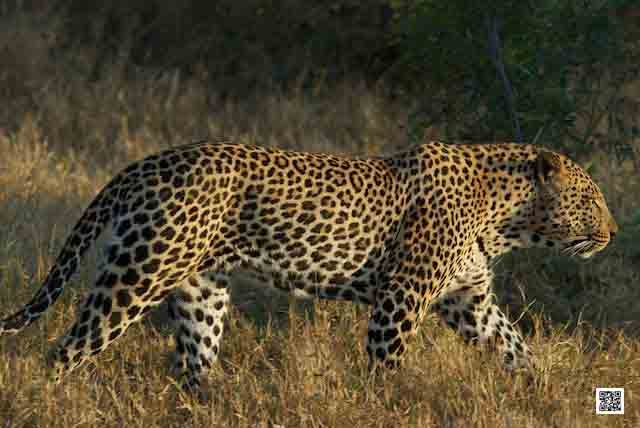
Kimberly-Clark is doing collaborative innovation sessions for specific problems and opportunities. They recruit outside “mentors” that come in for a day to help solving specific problems and to explore opportunities the company is looking at. The outside-in view of the mentors allows a deep dive into the issues with strategic and practical insights as the result, that otherwise would have taken weeks to gather.
Now imagine you add photography as an accelerator to this process and you get One-Day Acceleration Sessions for various business purposes. From innovative leadership sessions to brand innovation, product development and all in between, acceleration sessions with photography are the insular-mind-blowing incubator that saves time, money and resources.
And how is this possible? It is common knowledge that our conscious is only the tip of the iceberg sticking out of the water and our subconscious is the huge rest of the iceberg under water. Our subconscious knows much more than our conscious, we just struggle to get access to its enormous source of information, at least we did. Photography is the key to open this immense resource to us and allows us to benefit from it. By adding photography to for example leadership sessions it allows us access to these resources of knowledge, speeds up the process and lets us gain insights and ideas we otherwise would need months or even years.
All Innovation and knowledge is in us. Photography makes it visible, physical and ready to use. A click on the shutter is the key to innovation, leadership and success. It’s as simple as that.
Photography, the business tool of the future and the future has started now.
Ute Sonnenberg for www.rohoyachui.com
What would You Do in Photography, if money would matter?
18/10/12 17:12 Filed in: Photography & Art

Vincent Van Gogh must have had a real passion for his vision, continuing with his art, although he never sold one painting. And now his work is the most desired and most expensive in the world. People in his time might have felt disturbed by his new way of seeing and painting. They rather wanted it like it was and the new way only would stir something in them they didn’t want to feel, change. Innovation always causes first rejection and repression, because it means change, even in art and the one thing people resist the most is change. Other genius artists like Picasso saw Van Gogh’s strength, learned from him and honored him, yet the big public needed more time and the masses only join when something is already announced great by other famous people. Van Gogh didn’t have the breath to sit that out. Do we?
Maybe not many of us can be a Van Gogh of photography, but there are certainly many great photographers out there who do not dare to make the move, because of the fear of ending up like him. Would you do it, if you wouldn’t have to worry about money? Would you choose photography as your full-time passion? Can one choose a passion or chooses the passion you?
Many great people are doing talks on that matter and always say that you have to follow your heart and you will be excellent in what you are doing and then the money comes as well. And the people saying that are the Steve Jobs. They embarked on that path and excelled, went through the painful times and arrived at great success, admired for who they are and what they do. The great ones did it despite that money mattered, just like Van Gogh and they are the ones that are innovative, the ones that bring change.
It’s a tough and scary call to make. Only your heart knows the answer.
Ute Sonnenberg for www.rohoyachui.com
Travel Memories 2008: On Safari in Africa - Day 7
14/10/12 12:19 Filed in: Travel & Inspiration
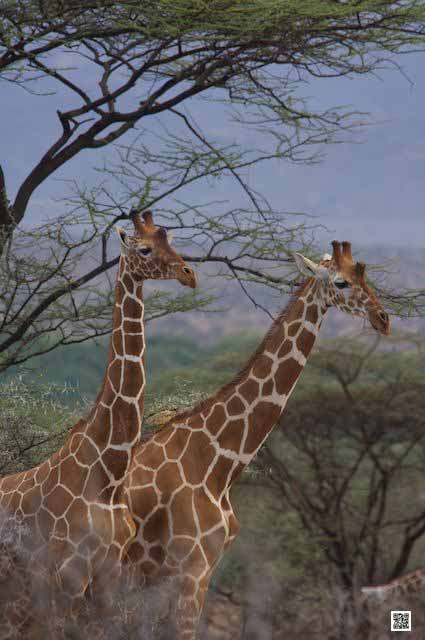
I woke up, still tired and exhausted, my mattress surrounded by rainwater. I had enough of that. This had to be solved.
We wouldn’t have a game drive this morning. The vehicle had to be fixed and the leaking tents had to be replaced. Paul and I went off to find a signal. He wanted to call the office in Nairobi and finding a signal for the cell phone was quite a mission. I was running out of patience and told him, enough now we are going to use the sat phone. The sat phone can be tricky as well, but we managed to get a signal and I got the operational manager on the phone. I made clear that the situation is unacceptable and that they have to send over new tents. He promised he would do that and the tents would arrive with the first plane. Next thing was the vehicle. The tank needed to be welded and Samburu Lodge workshop could do it. We drove there and I decided to have breakfast at the lodge. It didn’t take long and Paul came to tell me that the generator was switched off, so no welding and we had to come back after lunch. We went back to the camp and I collapsed on my “bed”, still surrounded by water. It was just so annoying that the equipment didn’t meet the basic needs and I was very angry and knowing that that wouldn’t help either.
Paul went to the airstrip to fetch the new tents. He came back with flysheets. I thought I must explode when I saw that. These flysheets were lighter, but to small to cover the tents and new tents were promised. I fetched my sat phone and called the operational manager and the owner. Nobody answered the phone. After all it was Sunday.
We tried to make something out of it and some kind of a weird flysheet construction covered Paul’s and my tent. It had to do till Monday. Phoning the office would be first thing in the morning.
After lunch we went back to the lodge to fix the fuel tank and we could go off for the game drive at least in the afternoon. Samburu is so beautiful and that made the disturbance by poor equipment even more annoying. Samburu’s landscape is breathtaking and the light was awesome because of the rain. Everything looks soft and bluish, which gives completely different shots. Eventually the animals made our day by rewarding us with beautiful sightings like fighting giraffes in front of a blue/gray sky and the green of the acacias. After all a peaceful closure of the day.
Ute Sonnenberg for www.rohoyachui.com
Send Yourself a Photo to the Future
12/10/12 11:30 Filed in: Photography & Art | Intuition
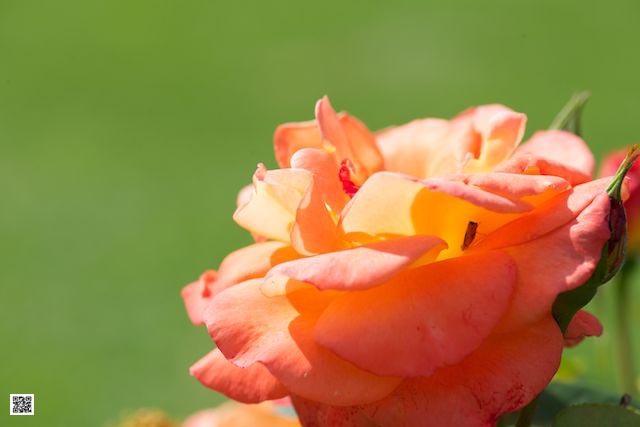
There is the iPhone photo app One Momento, an art project that allows you to take only one picture. This picture is uploaded to a gallery with all one-image-photo-app-images, aiming on 250,000 images, in a way a collage of images from 250,000 photographers.
That one image idea is quite interesting and can inspire more art applications. How about taking one image today, saving it in a separate folder on your computer or cloud and making a note in your calendar to open this image on a certain day in the future? What will the image tell you? It is like writing a letter to yourself, posting it and receiving the letter on a certain date in the future and it most likely will give you exactly what you need at that very moment, some encouragement, consolation, joy, congratulations or support.
Wanna try? Take a photo or choose one from your image gallery, seal it in a folder on your computer, pick a date in your calendar and make an appointment/note with notification. Then let go and forget about it. It will make itself know when its time to open it again.
Ute Sonnenberg for www.rohoyachui.com
Infinite Light - Inspired by John Lautner's Architecture
11/10/12 13:20 Filed in: Photography & Art

American architect John Lautner was portrayed by the amazing documentary Infinite Space, which could easily has been named Infinite Light, because his architecture allows infinite light in all his houses by connecting them to the natural environment they are located in on the most beautiful places in the world.
What does his infinite space approach mean for photographers? In the first place think infinite, allow your imagination infinite space and in the second place use the infinite light available to all of us. Play with it and explore how light creates infinite spaces within spaces. Interior photographers will be conscious about that, yet it is an excellent tool for all photographers to learn about light. How light makes spaces infinite although they have real walls and how light can create smaller spaces within infinite spaces like nature.
Get a glimpse of infinity from the Infinite Space trailer and for the complete experiences get hold of the documentary dvd.
Explore your spaces.
Ute Sonnenberg for www.rohoyachui.com
MoMA's New Photography 2012 - Emerging Photographers
10/10/12 11:54 Filed in: Photography & Art

The annual photography exhibition New Photography at the New York City Museum of Modern Art MoMA has started on the 3rd of October and runs through to the 4th of February 2013.
The exhibition wants to showcase emerging photographers and sees itself each year confronted with a bigger challenge with all the images taken by millions of photographers on all the social networks. According to the New York Times more than 380 billion photographs were taken in 2011 alone.
So, it must have been a hard job to decide on 5 photographers to be featured on the New Photography 2012 exhibition. The artists are Michele Abeles, Birdhead (Ji Weiyu and Song Tao), Anne Collier, Zoe Crosher and Shirana Shahbazi. Detailed information is available on the exhibition site and in the Time Magazine article by Erica Fahr Campbell.
Isn’t it an incredible inspiration that any of the photographers showcasing their work on social media could be one day the emerging photographer of New Photography?
Keep shooting!
Ute Sonnenberg for www.rohoyachui.com
Stanley Kubrick - Candlelight Filming an Inspiration for Photographers
09/10/12 15:24 Filed in: Photography & Art

In 1975 Stanley Kubrick directed the three-hour movie Barry Lyndon with its famous candlelight scenes, filmed only with ambient light and in this case, candlelight. For this amazing movie he used the NASA Zeiss f/0.70 lenses with some of the fastest apertures ever made.
In the Stanley Kubrick documentary A Life in Pictures a section is dedicated to the making of Barry Lyndon and these amazing lenses, originally coming from photography and not cinematography. Kubrick with his still photography background just put them on a film camera and made this incredible movie. See here a fragment of the documentary on the Barry Lyndon movie.
Ok, we usually do not have access to these high-end lenses, but when did you for the last time experiment with lenses and ambient light? One big takeaway from Kubrick’s movie is also that less is more and genuineness is unbeatable. No studio light setting would have given the movie that genuine feeling of a candlelight evening than a real candlelight evening.
Is there any better light than ambient light?
Ute Sonnenberg for www.rohoyachui.com
Travel Memories 2008: On Safari in Africa - Day 6
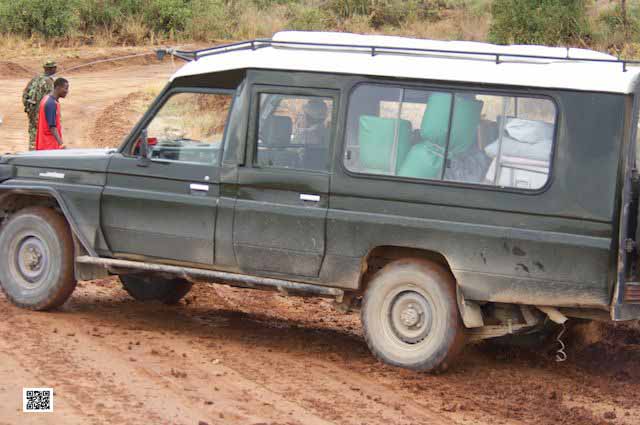
Again the night ended at about 4.30 a.m. with hooting matatus and the mullah calling for prayer. We got up to find out there was no water. Fortunately we still got some in our jerry cans. We left the campsite at 7.30 heading north to Samburu National Reserve. The first stop was after an hour and a half at Thomson Falls. A nice place with a small hotel, good facilities and the waterfall. We had breakfast and a walk to the falls. We were awake now for what promised to be a long day.
From Thomson Falls the road goes along Aberdare National Park and then north around Mount Kenya. It’s a clime up to about 3.000 m through a fertile agricultural area. Although the altitude is high the rain and the soil make everything growing in abundance. After two hours and a half we reached Nanyuki. I liked the name and the place. A colorful buzzing African place. Nanyuki is Masai and means “place of red water”. I didn’t see water, but maybe when the Masai first arrived, they found the water colored by the red soil of the area. We stopped and did some shopping to have enough food for our stay in Samburu.
From Nanyuki we drove to Kenron Grill, a restaurant just about one km away from the road to have lunch. When we got there we were the only guests except the local police officers, having their lunch as well. Because our itinerary was mixed up from the first stay in the Mara, the restaurant had expected us yesterday and not today, what meant that there was nothing prepared, what meant the meat was still in the freezer. So we got grilled frozen chicken, but we were hungry, we ate it all.
We left Kenron Grill at a quarter to two and started descending to Isiolo from about 3.000 m to about 1.600 m altitude. It was a beautiful drive, down the slopes of Mount Kenya with a view over the Laikipia area. The vegetation changed. It was dry land, desert like. Isiolo felt different. The market was along the road, it was buzzing, people herding their camels and yet it felt more poor than other places. Maybe because it’s not a fertile agricultural area and people have to fight every day to get food on their plate. We had to register our vehicle before we could continue to Samburu. There had been incidents in the past with bandits on this road and registration is for security. If you get lost they know where you were last and when you departed for Samburu. It was a weird feeling. I had read about this in the Rough Guide and now I was there. Alex told me that there was nothing out there when we left Isiolo, only desert with poachers from Somalia. But he said quickly, that was in the past. It’s much better now. Anyway I was sitting in the vehicle thinking what am I going to do when we get ambushed. Nothing actually. Give them what they want and hope that they are happy with it.
We carried on to Archers Post. There would be the gate to Samburu National Reserve. It was the most horrible road I experienced throughout whole Kenya and the only way to make it bearable was to drive very fast. There were roadwork’s going on to provide a wonderful and comfortable new road, but it was far from being finished. The good thing was, that the roadwork’s had brought many people there working. Small settlements were along the road and it turned out that the drive didn’t feel as unsafe as I had expected. There was something out of Isiolo.
We reached the Archer’s Post Gate at 4 p.m. and lost our fuel tank. Paul had filled up both fuel tanks (the Landcruiser has two) and the rear one had just fallen off. Rangers, Paul and Alex were underneath the vehicle fixing it with ropes that we could continue. It was actually just another thing that didn’t work properly, the fridge (repaired in Nakuru), the leaking tents (still not fixed!!!), my car door (when I closed the window the door fell open) and now the fuel tank. Half an hour later the fuel tank was roped up and we carried on to the campsite. It was 4.30 p.m.. A truck was driving in front of us, it had rained, the truck got stuck and we got in his trail and got stuck too. Everybody out, spates out and digging. We pitched camp at 5.30 p.m. The public campsite in Samburu is next to the river and also next to the rangers headquarter. Alex choose a spot next to the river and close to the facilities. They were challenging.
It started raining again and even with the flysheets (still the heavy ones) my tent was leaking badly. I kept everything packed and in the middle of the tent in case I have to get my stuff out quickly. We all had an early night after an exhausting day. At about 11.30 p.m. I woke up from voices next to my tent and then I heard THE noise. The river. When we arrived the river was low and small, now it was a dangerous stream. This is also called a flash flood. It had rained in the mountains and all the water came suddenly like a wave. My tent was the closest to the river and now just about two meters away from the water. I rushed out, gave Alex and Paul a shout to wake them up, got my stuff in the vehicle, broke down my tent together with Alex and Paul and set it up again on higher ground. That all happened in 10 minutes. It probably sounds quick, but it isn’t. If the flood had got to me, there wouldn’t have been any time to get out. It was about midnight when I was in “bed” again and it was still raining and my tent still leaking. I woke up a couple of times from heavy rain and the noise of the waves coming down the river. This day taught me once again what it means to be in the bush. No matter how tired or exhausted you are you got to take on the challenges.
Ute Sonnenberg for www.rohoyachui.com
121 Autofocus Points from Sony vs. High-MP from Canon
08/10/12 15:30 Filed in: Photography & Art | Technology & Gadgets

The numbers get higher and we tend to thing that the higher the numbers the more we get for our money. And yes, we get more megapixels and more autofocus points, but does that also mean we really need it?
The Canon High-MP rumors persist and new information has just been posted on Canon Rumors that says it would be the Canon EOS-1S with a price of about USD 9,000. A specific number of megapixel was not mentioned.
As said in earlier blog posts on this subject, a decision on purchasing the high megapixel Canon needs some contemplation. What are you doing in photography and how do you use your images? Do you want to crop a fly out of an image of a building or will your images be printed in billboard size? Do you need speed when photographing; are you photographing moving objects? Think about it and definitely when the expected price is right, a wrong decision can be painful.
Sony’s A99 SLT offers 19+102 autofocus points, in total 121 and at first sight that appeals more to me than the probably 46MP. Especially when capturing moving objects the high number of autofocus points is very helpful and every wildlife and sports photographer would love to have them, but unfortunately until now there is a downside to it. According to The Phoblographer you can use the feature so far only with 6 lenses, which hopefully will change soon. Yet it is a great feature and probably with more broad use than an extremely high number of megapixel.
Well, it’s always a personal decision depending on the photographic purpose one is pursuing and sometimes its just too tempting.
Ute Sonnenberg for www.rohoyachui.com
Take a Dose Steve Jobs and You are Ready to Change the World
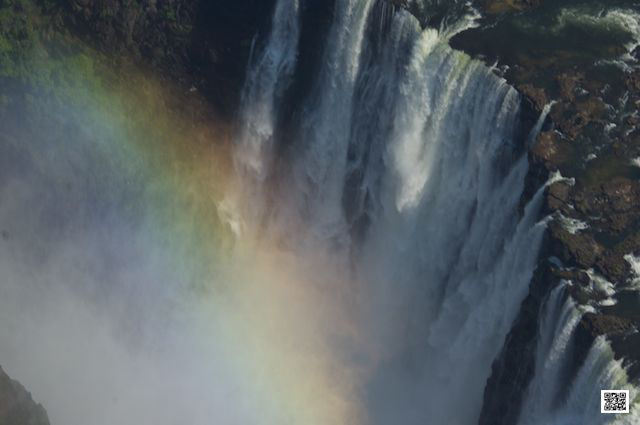
Yes, he is not with us anymore, at least not in person, but his spirit is here and ready to give us the push we might need to continue with our photographic journey, changing the world or whatever other creative passion is leading us.
Need a dose “Steve Jobs” today? Here some treatment proposals
Quotes:
Have the courage to follow your heart and intuition. They somehow already know what you truly want to become. Everything else is secondary. (Steve Jobs)
Your time is limited, so don’t waste it living someone else’s life. (Steve Jobs)
The only way to do great work is to love what you do. (Steve Jobs)
Videos:
Steve Jobs Stanford Commencement Speech 2005
Steve Jobs and Bill Gates at D5 Conference
Steve Jobs talks about the Crazy Ones- who think different
Better? Enjoy moving forward.
Ute Sonnenberg for www.rohoyachui.com
While Talking about Photo Books - The Ai Weiwei Photo Book "Becoming"
05/10/12 13:39 Filed in: Photography & Art

The blog post on Monday was about sought after limited edition photo books and today Mutual Art announced the Ai Weiei artwork “Becoming”, a limited edition photo book with images taken by this amazing Chinese artist. The price is in line with the other books, USD 10,500 per copy.
Read more about this doubtless amazing artwork here.
But there also nice new things to do with photography that cost nothing or close to nothing. The iPhone app Mixel allows you to make great collages of your images and to send them as real postcards to your friends and family. The app is for free, only the stamp will make some costs.
Photography really does offer fun for all budgets and that makes it such a great art form to enjoy.
Happy snapping, mixing and sending!
Ute Sonnenberg for www.rohoyachui.com
Neil Gaiman's 8 Rules of Writing Translated to Photography
04/10/12 15:21 Filed in: Photography & Art

Neil Garmain’s 8 Rules of Writing were published in The Guardian in the winter of 2010 and they have a lot of analogy potential for photography.
Here some proposals for photography translations:
1 – Write (Gaiman)
Photograph
2 - Put one word after another. Find the right word, put it down. (Gaiman)
Keep shooting away. Connect with the moment, follow the light and shoot away.
3 - Finish what you're writing. Whatever you have to do to finish it, finish it. (Gaiman)
The moment you think this would be a great shot, it will be a great shot, take the shot and don’t think I can shoot it later, it won’t come back.
4 - Put it aside. Read it pretending you've never read it before. Show it to friends whose opinion you respect and who like the kind of thing that this is. (Gaiman)
When you feel tension while photographing or in post-production and you start moving restlessly on the spot, put your camera down or leave the computer for a while. Have a coffee and look at something different. Then come back and carry on. Your view will be fresh again.
5 - Remember: when people tell you something's wrong or doesn't work for them, they are almost always right. When they tell you exactly what they think is wrong and how to fix it, they are almost always wrong. (Gaiman)
When you show your images to people expect that each of them will see something different and they are right, because each person has its own personality and point of view. Nonetheless their feedback always gives you insights and learning opportunities.
6 - Fix it. Remember that, sooner or later, before it ever reaches perfection, you will have to let it go and move on and start to write the next thing. Perfection is like chasing the horizon. Keep moving. (Gaiman)
There is nothing like a perfect photo. And there is nothing like a photo everybody likes. Keep learning and growing in photography and your images will show an amazing process of working with light and composition.
7 - Laugh at your own jokes. (Gaiman)
Relax and don’t be to hard on yourself.
8 - The main rule of writing is that if you do it with enough assurance and confidence, you're allowed to do whatever you like. (That may be a rule for life as well as for writing. But it's definitely true for writing.) So write your story as it needs to be written. Write it honestly, and tell it as best you can. I'm not sure that there are any other rules. Not ones that matter. (Gaiman)
Be genuine in your photography and photograph the way YOU photograph, however this is. Let your signature in photography evolve and embark on your own process of growth in this fantastic art.
Enjoy photography!
(P.S. feel free to come with your own translation!)
Ute Sonnenberg for www.rohoyachui.com
Review Time: Photokina's New Cameras
02/10/12 16:54 Filed in: Photo Tips | Photography & Art

All big camera brands announced their new models at the Photokina and now the first reviews are available.
The most interesting reviews might be the ones on the full-frame entry level Nikon D600 and Canon D6, just good to have them to compare the two “similar” new camera models of the two big brands. Check out PetaPixel’s Hands on with the Nikon D600 and Hands on with the Canon 6D.
Of a different league is the Leica M. Also here a Hands on with the Leica M by PetaPixel to get to know her better before making a decision to buy one.
Also available so far the PetaPixel hands on review of the Fujifilm X-E1, the Fujifilm XF1 and the Samsung Galaxy Camera.
Surely there will be more reviews coming during the following weeks and if you think about getting one of the new camera models, try to test them at your camera store before buying one. The camera needs to suit you and no review can tell how the camera will feel for you. Only you know, if a camera works for you and what you want to do in photography.
The new camera models are definitely an inspiration and make one wondering how cameras will be in the future. Until future arrives lets enjoy what the present offers.
Happy testing!
Ute Sonnenberg for www.rohoyachui.com
On Photo Safari: Watching a Lion Cub Learn
29/09/12 18:24 Filed in: Safari Story
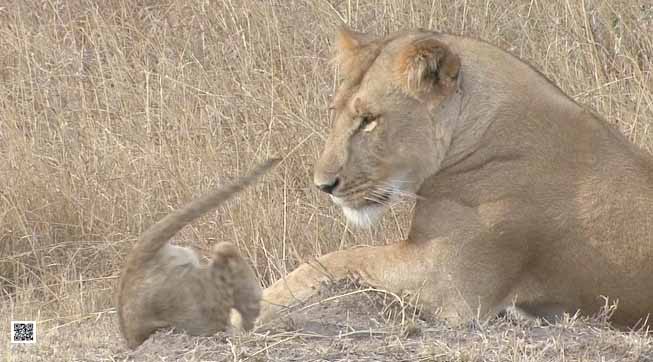
How do lion cubs learn? Just as children by playing, falling and standing up and teasing the adults.
We were on photo safari in the Masai Mara when we spotted a lion pride with a little cub, as it turned out later the little star of the family. There were more sub adult young lion, but only one little cub, the baby of the family. Just as young children, little lion cubs love to play and by doing that they learn important skills for their life in the bush. In this case the little lion cub felt very confident with his mother and aunts around to explore the mount they were lying on. Unfortunately the mount had a whole on one side, what made a good rim to sit on, but for a “feeling confident” little cub it became a trap, not a dangerous one, but he made a good role head first into it. His mother watched him calmly and maybe even amused when he lost his balance and fell over into the whole. But no worries, he was just learning about his balance. He climbed out and found a new target, his older brothers. The first brother’s tail became the subject of learning how to bite in moving objects. His brother made in a gentle way clear that this was not what his tale was there for and the little cub moved on to the second brother. He did that by stalking him carefully, just like he would do during a hunt and then jumped on him, biting in his neck. His brother didn’t even move, the little one was to little to heart him and only practicing hunting. However, the little cub seemed very pleased with his results and took a nice nap using his brother’s belly as a pillow, before he embarked on new adventures of his young life.
Ute Sonnenberg for www.rohoyachui.com
Are all Photographers Don Quixotes?
28/09/12 07:33 Filed in: Photography & Art

Don Quixote: Dost not see? A monstrous giant of infamous repute whom I intend to encounter.
Sancho Panza: It's a windmill.
Don Quixote: A giant. Canst thou not see the four great arms whirling at his back?
Sancho Panza: A giant?
Don Quixote: Exactly.
(From Don Quixote by Miguel de Cervantes )
Have you ever experienced being with friends on a trip, watching a sunset and all of you are photographing the beautiful cloud formations. Each of you will have different photos and you might find yourself explaining your friends that you see a face in the clouds or a lamb or an old man. It might need some efforts to show them where you see it and then in return they start telling you what they see. At the end all of you see the faces and shapes in the pictures of the clouds all of you captured.
Imagine you are by yourself photographing the clouds in sunset and you post it to your social media pages. How many people will see the face and the lamb in the cloud? And how would you be surprised what else they see in your photo? They might not see the lamb and the face, yet all would see the photographer, the moment, the creativity and maybe a giant.
Ute Sonnenberg for www.rohoyachui.com
Seeing Your Workplace through Photography
27/09/12 09:35 Filed in: B2B

We all might have experienced days that we hated going to work, hated the office, the colleagues and anything else that comes with it. Mostly ideas of quitting and going away to better places are coming up; a feeling of wanting to run away becomes very strong. But often this fades away and we stay where we are with a bit of a bitter aftertaste and an uncomfortable feeling about ourselves. This is not necessary. There might have been something that had bothered us and we couldn’t figure out what it was. It might have not even been work related after all; just nagging us and we thought it was work. So going away wouldn’t have made any sense.
Nonetheless these “moments” can be experienced as very unpleasant and disturbing, especially when you can’t find out what it is. In this case think of photography and use it to help you. You will most likely have a camera in your cell phone and the phone will be with you at work. Take photos during your workday and do it without thinking too much, just shoot away. Don’t look at them while you are still at work. Go home, upload the images onto your computer and have a look at them. Maybe even wait until after dinner and then start seeing your workplace with the distance, yet connection a photographer has. You might see things you have never noticed that they are there or you will see your coworkers with different eyes or you will wonder why your desk is such a mess. With this distant view you will go back to work the next morning and it will be different. You might change how you do things, you might talk to your colleagues or you might realize how much you like your work. Whatever it is, the images will have helped you seeing and the unpleasant feeling might have disappeared.
Try it.
Ute Sonnenberg for www.rohoyachui.com
In the Ray of Light: Nick Ut & Kim Phuc
25/09/12 16:28 Filed in: Photography & Art
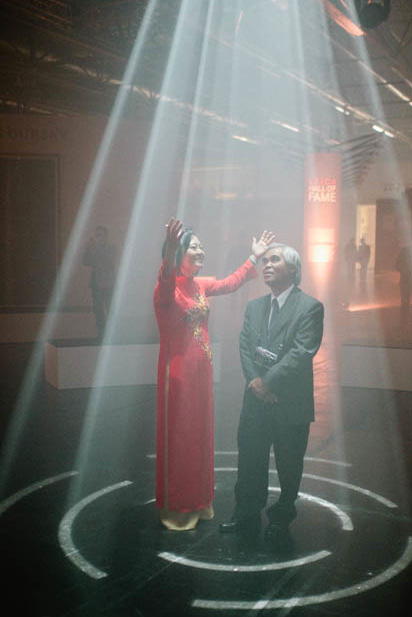
Their lives are connected; maybe even before Nick Ut took the iconic photo of the Napalm Girl, definitely since he took the image that helped to end the Vietnam War.

And now they are here, together in this ray of light at the Exclusive Leica Launch Party on the Photkina last week, the photographer and his “subject”, Kim Phuc, the “Napalm Girl”. How must that feel standing there together after all these years? Does one relive the moment of the initial contact? How must it be for the photographer, looking at the woman he photographed as a child in a very traumatic situation. How must it be for Kim Phuc, looking into the eyes of the man who captured her in a very vulnerable situation with dignity and respect?
Only they know the answers. But maybe all of us have moments we remember, taking a photo that touched us deeply and how we felt or would feel to meet the “subject” again.
Imagine your ray of light.
Ute Sonnenberg for www.rohoyachui.com
Photo from photokina: Michael Zhang
Photo Napalm Girl: Nick Ut
Photokina: Camera Giants & Their News
24/09/12 11:06 Filed in: Photo Tips | Photography & Art

It is over for this year. The Photokina has closed her doors and photography lovers are still breathless from al the camera news that came over them, maybe secretly thinking already of buying one of the new models.
Probably the most bespoke new cameras are the Nikon D600 and the Canon 6D. Both are entry level DSLRs with a full-frame sensor and it makes complete sense to give them almost the same name. If you doubt which one to prefer, have a look at the sensor test from DxOMark and you will see that the result is not surprising.
While the Nikon D600 and the Canon 6D still have a reasonable price, other brands like Leica and Hasselblad introduced more pricy new camera models. They are the Leica M and the Hasselblad Lunar. Well they are great cameras, with an even great price.
For a nice overview and to compare the new camera models from the Photokina, have a look at the WEX page. More detailed tests will only be executed now, so more information on the new cameras will be available soon.
Fortunately Christmas is coming soon and Father Christmas might make one or the other camera dream come true.
Happy snapping!
Ute Sonnenberg for www.rohoyachui.com
Travel Memories 2008: On Safari in Africa - Day 4
23/09/12 10:44 Filed in: Travel & Inspiration | Photo Safari
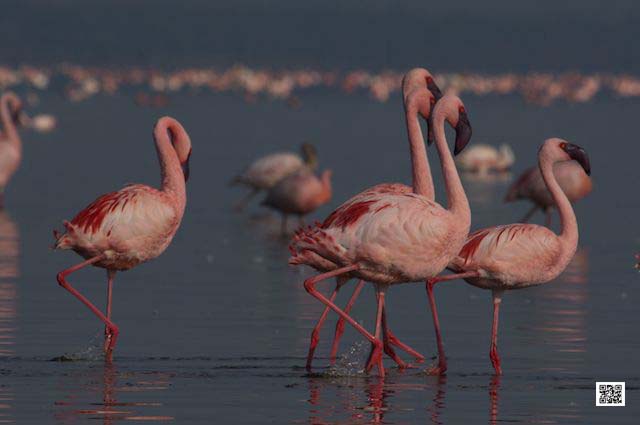
The night was quiet. I heard again the breathing next to my head, which was a hippo according to Alex, grazing at night around the tents.
We left the campsite at about 8.30 a.m. and headed towards Nakuru, our next stop. Paul said we are taking a short cut to Narok, but this wasn’t really the case. We headed away from Narok and made some kind of a circle back onto the tar road. My guess was that we had to avoid driving through the reserve, like we did on the first day, The itinerary was mixed up and we hadn’t paid the park fee for the last day. Anyway our drive brought us along lots of animals and led us through a flood plane, which was the less nice part. All black cotton soil and wet, which is like driving on wet soap and one makes a good chance to get stuck. But we made it without bigger difficulties and hit the tar road to Narok. From Narok we followed the road back to Mai Maihiu and instead of turning right to Nairobi we headed north towards Naivasha and Nakuru. The drive was without any incidents, at least for us. There was a turned over Matatu on the side of the road. Fortunately nobody seemed to be hurt, although the faces looked in shock.
We arrived in Nakuru and to my surprise the Lake Nakuru National Park is only 10 min away from the city centre. The campsite was just behind the gate next to the ranger post under the cover of fever trees and in sight of the lake with its pink ribbon of flamingos along the shore. It was so tempting to just go there and have a look at the flamingos, but Paul reminded me that just recently a ranger got killed by a lion just in front of the ranger post.
We pitched camp and it was raining again. There was supposed to be somebody from the office in Nairobi with flysheets and a new fridge. He arrived just before dinner and the flysheets turned out to be impossible to use. They were big and heavy, made from some kind of synthetic leather, you use in car interiors. The first difficulty was that we needed trees to hang on the sheets, because there were no poles. When we fixed that, the sheets started soaking water and became even heavier what made them hanging down on the tent which collapsed, because of the weight. Anyway, it was late, we were tired and I just wanted to sleep in a not leaking tent. We postponed the sheet issue to the next morning.
We had dinner and suddenly a truck arrived on the campsite. Such a big lorry transformed into an overland bus. I learned that these trucks are doing tours from Nairobi to Cape Town and stop at the campsites in the National Parks. It was like watching a show. Maybe about thirty people pitched camp and had dinner. This happened like a military operation. Always two people fetched and pitched a tent until the camp was set, without any space between the tents and in a correct circle around the cooking area. It took them 15 minutes to do that. Then a designated group started cooking other groups looked after the table settings and other jobs that had to be done. There was no waste of time and manpower. After dinner within 15 minutes everybody was in the tents and ready to sleep. I was wondering if those people were on holidays.
We had an early night too. It was a long day.
Tweet.
Ute Sonnenberg for www.rohoyachui.com
On Photo Safari in the Serengeti: Lions on Warthogs
22/09/12 20:09 Filed in: Photo Safari | Photography & Art
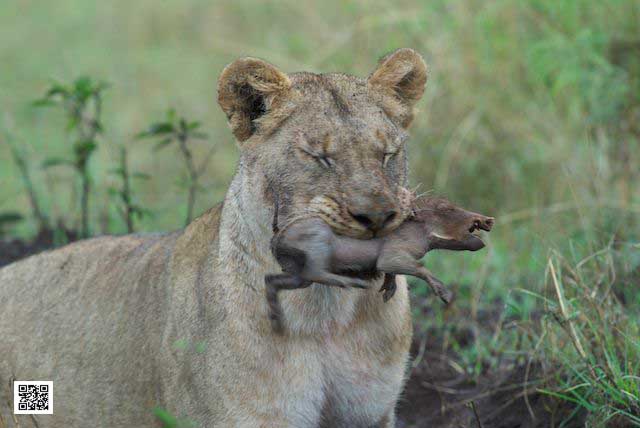
We were on a morning game drive on the Klein’s Concession in the Serengeti. It had rained and the moisture was still hanging in the air when we drove through the forest just behind our camp. Our Masai tracker Steve spotted lion, feeding on a kill. As we came closer we saw that it were all young lion, sub adults, probably on an expedition not far from the main group of the pride. They were feeding on a warthog and we could see that they had dug out the warthog from his burrow, lots of earth had been moved and there was a big whole.
After a while watching them, one lioness went into the warthog’s burrow and came out with a young warthog, still alive and screaming. She was looking like she didn’t really know what she was doing, following more an instinct then being hungry or wanting to hunt. The young warthog would die without its mother, either starving to death or being killed anytime later by other predators or scavengers. It was better to make it short and that might have been the silent assignment of nature for this lioness. She killed the young warthog and ate it and she went back to the burrow and came back with another one and another one. There had been three young warthog without mother and the young lioness did what she had to do, although she didn’t do it fast. Our Masai tracker Steve couldn’t watch it, because the youngsters were still alive for a few moments. He wanted her to do it fast and easy for the little ones, but maybe the lioness was just too inexperienced to understand that.
It was an impressive sighting, showing the innocence in the face of a young lioness while holding a struggling young warthog in her mouth, causing it pain and stress, before eventually doing what she is supposed to do. Nature is pulling the strings.
Tweet.
Ute Sonnenberg for www.rohoyachui.com
Photography: An Eternal Romance with Light
21/09/12 16:18 Filed in: Photography & Art

What is romance? “Romance is more an inner state of being emotionally open without expectations and conditions towards people, animals, plants, things”, anything, it’s a state of unconditional love. (José Stevens, Tao to Earth)
Photography is working with light and all in photography is determent by light, the settings on the camera, the composition, the colors, contrast, depth, just everything. Sometimes the light “isn’t so great”, yet photography is capturing the moment beautifully, with some efforts, but it does. On other occasions the light is “perfect” and photography happens effortless. Whatever it is, photography manages to work with light, under any condition, taking the light as it is or creating the light as it is. Photography loves light unconditionally, well maybe sometimes a little curse slips the tongue, but this is only part of the process.
Photography and light are a romance and as long as photography will be done the romance will be there, maybe for eternity.
Tweet.
Ute Sonnenberg for www.rohoyachui.com
Steve McCurry: The connected Eye
20/09/12 17:58 Filed in: Photography & Art
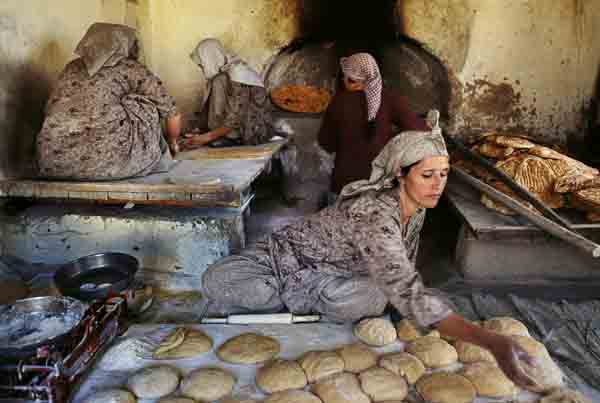
When looking at Steve McCurry’s photographs it feels like tapping into the soul of the moment or person he captured, like in the image above from his series “Food for Thought”.
Repeatedly occurring words in his quotes are “soul”, “grounded” and “hope” and yes, they are in every image, almost penetrating the viewer while looking at them.
Obviously Steve McCurry has the deeper connection with his subjects, capturing souls and hopes, yet his solid grounding makes these deep insights possible. Soaring on soul level requires grounding, just as artistic heights in photography require a solid technical grounding.
He got both and well balanced. His photography is food for thoughts.
Tweet.
Ute Sonnenberg for www.rohoyachui.com
Photokina & Photo Safaris: A Love Affair?
19/09/12 09:25 Filed in: Photo Safari | Photo Tips
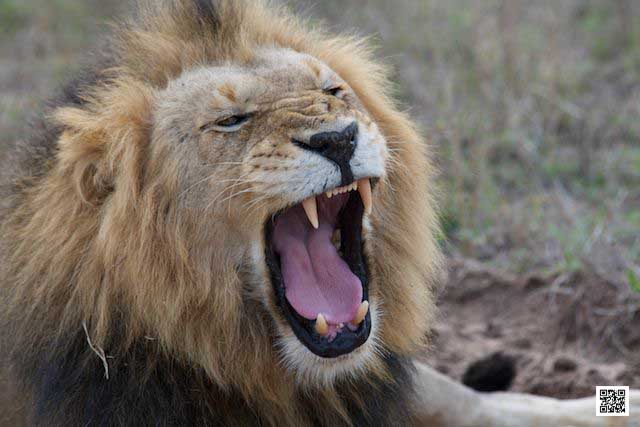
The Photokina has started and millions of people all over the world are waiting for the technical photography news to flood into their inboxes. Will Canon come with this 46 Megapixel camera? How will be that Nikon D600 entry-level full-frame camera? There will be new “Porsche” and “Mercedes” and “city cars” for the photographer to play with. But will they be of any meaning for the success of a photo safari?
Technical photography gear is important for photo safaris. You will need a camera with a reasonable speed in order to photograph the fast moving objects and you will need a good zoom lens to get them in the picture, recognizable as a lion and not only as an undefined dot. But do you need 36 megapixels? Most likely not. As fantastic as the Nikon D800 is, it is not the most suitable camera for a photo safari. Shooting these big files costs speed and memory card space and if you have a proper zoom lens, you don’t need to crop afterwards.
Do you need all the accessories, tripods, gadgets, bags and straps? Keep it simple. Don’t get lost in technology. On a photo safari you are in the most beautiful and demanding environment for photography and not in a studio. You got to connect with this environment, understand it and translate it into photographs. Too much technical gear will only be a burden. Keep that in mind when packing and for the rest enjoy the inspiring news from the Photokina.
Tweet.
Ute Sonnenberg for www.rohoyachui.com
Susan Sontag & Goethe: Photography & The Sorcerer's Apprenctice
18/09/12 12:11 Filed in: Photography & Art | Philosophy

“Recently, photography has become almost as widely practiced an amusement as sex and dancing – which means that, like every mass art form, photography is not practiced by most people as an art. It is mainly a social rite, a defense against anxiety, and a tool of power.” (Susan Sontag, On Photography, in 1971)
Photography is part of our daily life. It gives us joy, lets us express our creativity and makes us grow as artists and persons. It captures moments for us and lets us relive them when we would like to experience them again. It captures the love for our families and visualizes our dreams. Photography is magic, accessible to everyone.
Magic needs to be wielded with care and responsibility. Like in Goethe’s “The Sorcerer’s Apprentice” it can go wrong and the magic tool gets out of control. One of the recent examples is the death of the American ambassador in Libya. When his body, most likely already dead, was held up and about to be carried away, bystanders took photographs of him in this vulnerable moment and the New York Times seemed only be too happy to publish them.
In the Netherlands paramedics have problems doing their work, because bystanders interfere with them in order to take pictures with their cell phones from, for example car accident victims. And they even get violent when police or paramedics try to keep them away.
On the other side of the scale the topless photos of the Duchess of Cambridge are silly (who hasn’t seen a pretty young woman topless on a beach) and intrusive to the private life of a person.
And now with all these “sorcerer’s apprentices” around how do we stop this?
Most likely there will be no easy way to stop this. It will take time to create a general consciousness of respect and dignity, a consciousness that something powerful as photography needs the “master” and not the “apprentice” to unfold its entire beauty and strength to serve mankind as a tool of growth. And yet, photography itself is the tool to enable people to develop exactly this consciousness. One got to drive a car in order to learn driving and one got to practice photography in order to become a “master”.
Happy growing.
Tweet.
Ute Sonnenberg for www.rohoyachui.com
Travel Memories 2008: On Safari in Africa - Day 3
16/09/12 15:23 Filed in: Travel & Inspiration | Photo Safari

Early wake up call at 5.30 a.m.. I wanted to shoot a sunrise. We were up quickly and off into the park. Paul had a tree in mind which would make a perfect picture with the sunrise in the back. We were racing. The sun came up quickly. And there was the tree. One of those beautiful umbrella trees set out as dots on the big planes of the Mara. While racing there I had mounted the camera on the tripod and was ready to shoot when we got there. It was awesome. This gracious tree in the golden light. I was happy. It was a good start of the day.
While getting back into the vehicle we heard a lion roaring. We thought immediately of the pride of lions we had left the previous night and headed towards the area. Unfortunately when we got there we only had to follow a trail of vehicles. The lions had settled around a mount. The females and males were lying around in the shade of bushes. The cubs were climbing the mount with their full tummies. They must have had a kill.
It should have been ideal for photography. Blue sky, sun, a pride of lion with playing cubs, but it was hectic. Many vehicles were there and made a half circle around the pride. But when more vehicles arrived the circle became close to a full circle and this is not the background for the lions you want. Some vehicles arrived and drove through the whole scene, the drivers were sometimes very close to drive over a lion’s tail, but it didn’t look like the lion were irritated by that. Maybe we were a sighting for them and they were amazed what a competition was going on in front of their eyes.
In sight a few hundred meters away, another group of vehicles was watching something. The group was growing, so we assumed it must be a cat and they were all looking at a tree, so it must be a leopard. We left the crowded lion sighting and drove over to the tree. Yes, there was a leopard in the tree, but the sighting gave only space for two vehicles and the visual was 2 out of 5. Nonetheless there were six vehicles fighting for a good view on the leopard. It was ridiculous and we decided to come back later and drove back to the lion. We were not the only one to drive back and forward between the lion and the leopard. It was an absurd scene of vehicles racing between the two sightings trying to get in a good position. The whole scene felt like it was all about the humans and their competition and not about experiencing the beauty of wildlife. After a last attempt to get to see the leopard we left. A vehicle had parked in front of the animal, blocking the space for another one, people sitting on the roof and moving constantly, so that parking in second row made no sense too. I had enough.
We heard that three cheetah males had been seen and we went there. It was in a different area and a bit of a drive. Another vehicle followed us. It was a guy on his own cruising around in his Land Rover. He asked Paul to stop and talked to him in Swahili. After that we carried on and he tailed us. I asked Paul what this is about and he told me that the guy doesn’t know the way to the cheetahs and asked him to guide him there. I stopped the car, stepped out, walked towards the Land Rover and stopped him. What did he think speaking sneaky in Swahili to Paul and using a guide I had paid for to get to the sighting. I wouldn’t mind, but ask me too. Obviously the piled up anger from the vehicle sighting race of the morning came onto that guy. I apologized, but since then he kept his distance.
The cheetah were in rough territory. Rocks were lying everywhere and access was difficult. Also there the same story. The sighting gave space for two vehicles and one was blocking it. Sometimes I’m not sure if the drivers just don’t know how to handle a sighting. This one felt like that. The cheetah were beautiful, but my photographs were not. I guess the emotions of the morning distracted me and I wasn’t focused, but the animals were awesome.
We drove back to the camp to have lunch and a rest. That would be the chance to reset for the afternoon game drive. And it did. The lunch was nice and I had a shower and a nap. I was ready to go out again.
The strategy for the afternoon was to go back to the lion and to see what more is coming on the way. Rain came and the light went bluish and soft. The lion were still wide spread around the mount. We decided not to go anywhere else. Just to stand our ground and see what’s going to happen (there was enough space for about twenty more vehicles). It was lovely. The cubs were playing with their mums, some of the females were taking position on the mount to scan the area for prey and the male lion were lying in the bushes. And then the rain started again. I loved to watch one female who was on the top of the mount, trying to hide her head between her paws against the rain. She closed her eyes, waiting the rain to stop. She was beautiful.
We too closed our “eye”, the hatch and went back to the camp, were leaking tents needed attention and Alex was waiting with dinner.
Ute Sonnenberg for www.rohoyachui.com
Photo Safari in the Serengeti: A Day with Lions
15/09/12 11:19 Filed in: Photo Safari | Travel & Inspiration

It was in the Serengeti when a pride of lion was lying in the grass, cubs playing and the females keeping an eye on the plains. This is just that incredible thing in the Serengeti that you can overlook the entire area and not only the lion can, also the photographer when looking out for photographic opportunities on a photo safari.
We spotted the lion on a morning game drive and while watching and photographing them a herd of zebra approached. That was promising. Maybe we could witness a hunt! We retreated a bit from the scene to not disturb the animals and waited. The zebra herd was lead by a stallion. He walked in front of them scanning the area, head up and alert. The lion pride had disappeared from earth as soon as they saw the zebras approaching. They were all down in the grass, no movement nothing at all to see of them. Nonetheless the leading zebra stopped about 60 meters away from the pride. The rest of the zebra herd just carried on grazing, but stayed behind the stallion, some of them even playing. The stallion and the herd stood there for at least 10 minutes and just at the moment that the stallion was about to carry on the big male lion of the pride popped up his head. He had been sleeping away from the females and cubs in the grass and had just woken up, wondering where his females are. When the stallion saw he male lion he stopped again, looked at him and them turned around and walked away where he came from. The herd followed him. There was no fast movement of any zebra, no panic, nothing and there was not attack of the lion. The females popped up their heads when the zebras had turned and walked away. Only one sub adult female an after the zebra, but only for a short distance. Nobody joint her. The lionesses are too wise to waste any energy. They knew they wouldn’t have a chance to catch a zebra, so they just carried on with what they were doing before the zebras arrived.
This was an incredible sighting and we decided to stay with them, but move away for now to have some breakfast at a nearby rock. While having breakfast we saw that a buffalo heard was approaching the lion pride and the buffalos had a completely different strategy than the zebras. They had seen the lion and they immediately started attacking them, because they wanted access to a nearby water whole (probably the zebras also wanted to get to the water whole, but they do not have the strength of buffalos). The buffalo’s lion chase made that the pride was scattered over the whole area, which makes the weak. After a few moments also the lion seemed to realize that and organized themselves again. The buffalos were at the water whole drinking. The lion let their cubs under a distant group of trees and each lioness and young male lion took position on a termite mount. They set up an ambush for the buffalos for when they would leave the water whole. Ambush in this case meant that the lion had positioned themselves to take advantage of a hunting chance, but they were completely visible on the termite mounts. They were waiting. After quite a while the buffalos started moving off, but unfortunately for the lion in the wrong direction away from their positions. The lion left their termite mounts and met with the cubs under the trees. All were lying down in the grass again, again not wasting any energy.
Later on in the afternoon, still at the same spot and still lying in the shade and the cubs playing, a heard of elephants approached. And also the elephants made clear that they don’t want the lion around and chased them away. The lion moved off and lied down in the grass away from the elephants. They knew there was no hunting opportunity and again they saved their energy for better opportunities probably occurring during the night.
Being able to follow the lions throughout the day, well actually being with them the whole day in the same spot, was a great photographic opportunity and also a great learning experience from the photographic point of view and animal behavior point of view. They are so much wiser than we are … well probably except that male lion.
Ute Sonnenberg for www.rohoyachui.com
Photography is Visual Poetry
14/09/12 10:34 Filed in: Photography & Art
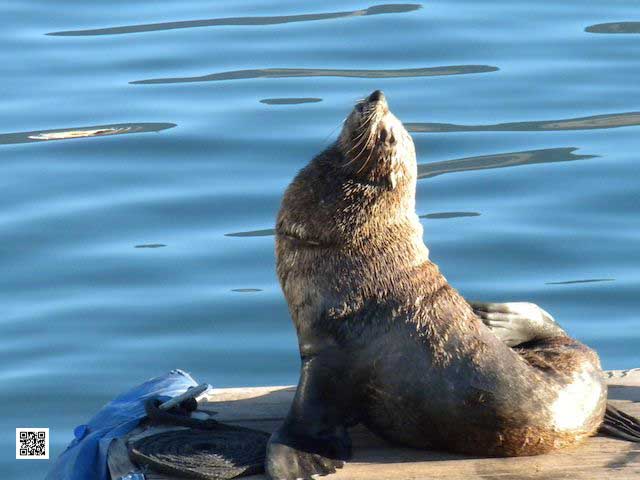
Poetry is something beautiful, but unfortunately not all of us are able to wield words in a way that they fall into poems. Yet we all got poetry in us and we all can press a shutter to create visual poems. Words unfold by looking at an image and a poem takes shape and we all understand without any actual word.
What would be the seal’s poem?
Ute Sonnenberg for www.rohoyachui.com
Photography Genre Philosophy
13/09/12 15:15 Filed in: Photography & Art
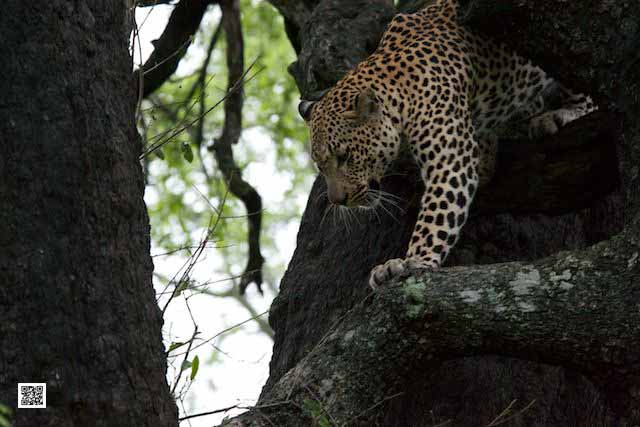
We know several genres of photography like editorial, nature, landscape, wildlife, fashion, interior, photo journalism and more, yet there is one that comes back in all of them and is one of its own, the photography genre philosophy.
The photography genre philosophy is determent by the depth of thought, the depth of consciousness and the depth of connection. It includes also images that might under different criteria be considered as not perfect, yet one gets drawn into them. There is no wrong or right, all is relative, all authentic. The images visualize the underlying dimensions of the moment, allowing viewers to tap into non-physical levels as thoughts and emotions.
Reading images that way makes them a powerful tool for all kinds of purposes and the photography genre philosophy “The Glass Bead Game” (Herman Hesse) of photography.
Ute Sonnenberg for www.rohoyachui.com
Visualization: Businesses utilizing Photography for Communication
12/09/12 08:55 Filed in: B2B | Photography & Art

How often does it happen that we talk to somebody and can’t get our message through to be understood? How often are we saying something and the person who listens hears something completely different? You might know the old game of whispering something in somebody’s ear and this person whispers it into the next person’s ear and at the end of the chain of people the message isn’t at all what it was in the beginning. Talking is such a poor communication tool
Poor communication can lead to difficult situations in personal life and in business. Especially in business with work teams of completely different personalities and backgrounds, communication can be a real challenge. It starts already with getting to know each other. How would it be, if we just could let images speak for us and tell our colleagues who we are and what we need to be happy at our work place? Photography visualizes what we try to tell and everyone can understand it. Even uneasy situations of “how to tell my colleague that I need some silent moments to focus on my work” can be visualized and will not be experienced offensive by others.
Photography is the easy access key to visualization of about everything for easy and clear communication in business and at home.
Try it
Ute Sonnenberg for www.rohoyachui.com
Peter Beard & Francis Bacon - Photographer and Painter
10/09/12 19:26 Filed in: Photography & Art
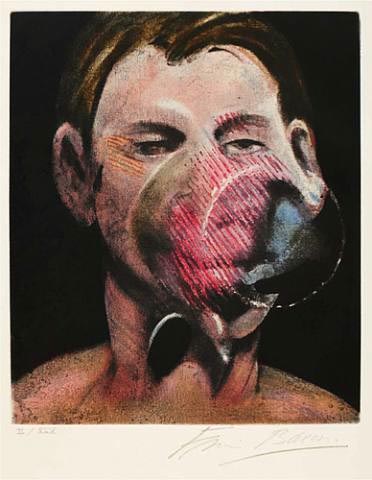
“Sometimes there is nothing better than a bad exposure.” said Peter Beard about photography during an interview with Steven M.L. Aronson and he meant to explain that lots of his photographs happened just by accident, and he was hoping for really good accidents and it turns out his photography is really great.
Beard studied art history at Yale and took color courses with Josef Albers, Neil Williver and Al Katz, but as he says, Richard Lindner and Francis Bacon were his real art teachers later in life.
Peter Beard met Francis Bacon at a presentation of his book “The End of the Game” in London. Bacon had just purchased the book and invited Beard immediately into his studio. Beard took polaroid photos of Bacon’s work. The polaroids became a source of inspiration for Bacon regarding colors and shapes in his paintings and in return Beard learned from Bacon essential things like looking at old masters to learn about light and composition.
A friendship had developed and Bacon painted Beard several times. I dare to say that Bacon’s way of seeing art, reflects in Beards work and is one of the reasons of the mesmerizing impact Beard’s artwork has.
Read more in Peter Beard Trade Edition, available at Taschen and get insights in this creative friendship of two amazing artists.
Image above via HH Fine Art.
Ute Sonnenberg for www.rohoaychui.com
How to Re-Imagine Photographic Opportunities
06/09/12 11:45 Filed in: Photo Tips | Photography & Art

Have you ever had moments that you felt the urge to photograph, but had the feeling that there is nothing around? Like days without sun, again the same garden, not the right equipment to capture that or thoughts like ‘this is anyway not going to be good”. In these moments we might do a lot of imagination, but not the kind of imagination that stimulates us to see and shoot. We might imagine only the downside of everything.
How can we change that? Well, simple enough through photography. We just need to get through this wall of negative imagination and it doesn’t need to be an effort. Just take your cell phone, most likely you don’t even have to move for that, because it’s always with you and start shooting away. Maybe choose one of your photo apps and click and see what comes out of it when photographing your TV. Without even noticing you will be drawn into your photography and the silliest subject will become highly interesting and arty. You just started seeing again and your imagination will be stimulated to artistic heights.
Try it, also when being in the office
Ute Sonnenberg for www.rohoyachui.com
How to Photograph Love
05/09/12 11:06 Filed in: Photography & Art

We might first think of symbols like roses, a sunset, a puppy, a baby or simply beloved family members. Yet we don’t need symbols to photograph love. Love is in all our photographs; love is the connection we have with our photographic subject.
But we might think, I don’t love this tree, yet you photograph it, yet it does something to you, maybe the light, the reflections, the movement of the leaves; it induces something that makes you photographing it, ending up telling everybody how you love this picture. The picture shows your love for life, light and whatever love wanted to express itself the moment you saw the tree. And now it’s captured in the image, inducing love every time you look at it again.
Ute Sonnenberg for www.rohoyachui.com
Annie Leibovitz: A Dance with Light
04/09/12 15:42 Filed in: Photography & Art
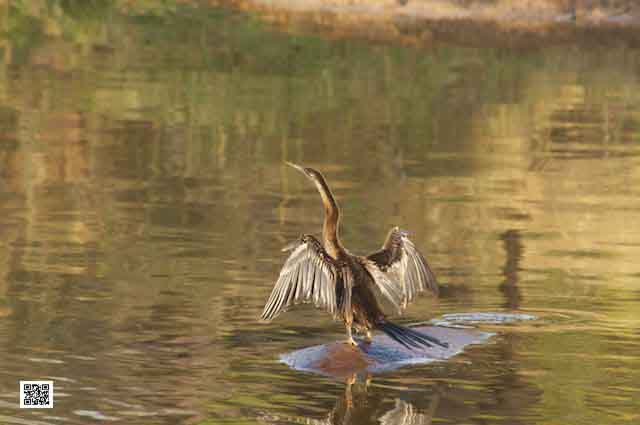
Nature is so powerful, so strong. Capturing its essence is not easy - your work becomes a dance with light and the weather. It takes you to a place within yourself. Annie Leibovitz
Maybe the strongest and most powerful nature is the African bush. Photographing its essence is an intense experience, unleashing energy, imagination, inspiration and creativity. Being on a Photographic Safari is an incredible photographic discovery. It brings us back to our origins and induces strengths we didn’t know we have. And from these places within ourselves it brings us back into daily life radiant and strong. And when a bad day at the office drained this energy, we just look at the images and restore.
And we dance again with light.
Ute Sonnenberg for www.rohoyachui.com
Copyright & Pricing in Photography
03/09/12 10:40 Filed in: Photo Tips | Photography & Art
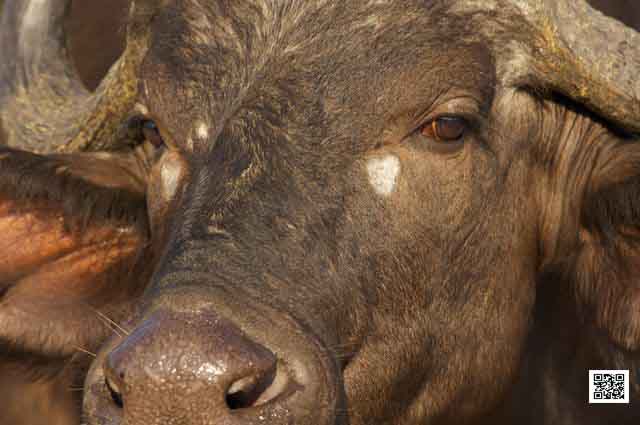
The question of copyright and prices in photography can be a very confusing matter. What are the laws, what rights do I have in the digital era, how can I deal with infringements, who can help and what can I charge for my photography? There are many answers from different sources and there are a few professional sites that really help.
Have a look at the website from EPUK, the platform of the Editorial Photographers United Kingdom & Ireland. Below is a link to their write up on copyright, from the beginnings until today.
EPUK Editorial Photographers United Kingdom & Ireland:
Copyright in the 21st Century:
Let’s start with a brief history. Copyright began about 300 years ago with the Statute of Anne. This law for the first time turned something made of thought into an object that could be owned and traded and which could be regulated by the government and courts. Read more
On the pricing FotoQuote is the tool professional photographers consult for their pricing. It allows easy Rights Managed calculations for all regions in the world and is also used in the Photoshelter galleries.
Here the link to Foto Quote:
fotoQuote Pro is a photo price guide that provides pricing and negotiation information for stock and assignment photography.
Read through it and find what suits you and your photography purposes best. These tools can be very helpful when suddenly asked for an assignment
Ute Sonnenberg for www.rohoyachui.com
How to Utilize Photogrpahy in Team Building

Many companies organize team buildings to create opportunities for their teams of employees to bond in an informal environment away from their usual workspace. To enhance the informal character mostly some kind of activity is chosen that allows interaction like carting, rafting, other sport activities or special experiences like a balloon ride. People usually love it. It gives the opportunity to interact in a different way with your colleagues and to get to understand each other better.
How would it be to add photography to team buildings and what would be the benefits? Nowadays with the smart phones and tablets, photos are taken all the time and also during team buildings, but mostly like on a holiday as memories. But photography can offer more and add extra benefits to the team building.
Photography can become the bonding tool of the team building and the anchor of the achieved result at the end. By making photography part of the activity through assignments involving the sport, the experience or even wildlife it adds extra stimulation, motivation, fun and understanding of each other. And at the end it can be utilized to anchor the groups experience through images that reflect the purpose of the team building.
Photography can be a vital source of fun, insight, stimulation and motivation for something important as a team building. With the side effect that its results last forever. … and its easy too!
Tell your boss!
Ute Sonnenberg for www.rohoyachui.com
Photokina rumors: The Canon 46MP monster

It seems like the megapixel monster was unleashed and Nikon and Canon are chasing Hasselblad. For a long time Hasselblad was the one with the monstrous amount of megapixel cameras, but recently Nikon caught up with them with their D800 and will Canon eventually race past both?
There are rumors that Canon will launch a DSLR with 46 megapixel at the Photokina in Cologne in September. But will it or will it rather stick to 22 megapixel? One needs the right lenses in order to get the best out of such a megapixel monster. Users of Nikon’s D800 are already carful with yielding this amazing camera.
We will know soon. Do we need such a thing?
Ute Sonnenberg for www.rohoyachui.com
The Only Limitation for Your Photography is You
29/08/12 17:19 Filed in: Photo Tips | Photography & Art

What do you think about your own photography? When you show your images to others, do you immediately start commenting them why you did this and this and excusing something you think could have done better?
Our photography shows always something of us and it is for ourselves like looking into a mirror when looking at our images. And if we do not like certain sides of ourselves, we might start limiting ourselves in our freedom of photographing what ever comes up or we wish to retouch our photographs in order to cover the flaws we think we have. But like with thinking our nose is skew and everybody will notice, we might be the only one seeing a flaw in the photograph. And what is actually a flaw? Nobody notices a skew nose in a fascinating personality and a blur photo can be the most fascinating image, magnetizing a room.
When you love a photo, it is a great photo and your heart is always right. Listen to it and you will enjoy the freedom photography has to offer.
Ute Sonnenberg for www.rohoyachui.com
How to Visualize Your Gut Feeling
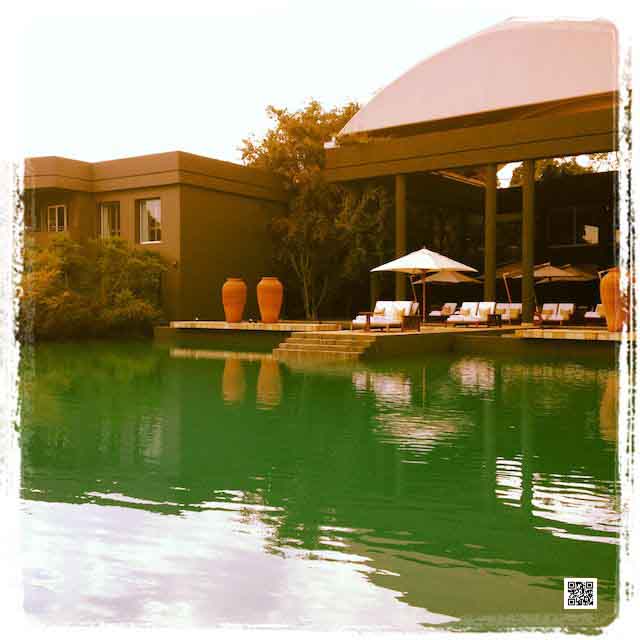
Have you ever had the feeling that something would happen, like your best friend would get the job he was so worried about and then he did or you did get the questions in the exam you were so afraid of getting, but refused to listen and learn for it? A typical reaction is that we say: I knew this would happen. So when you knew it would happen, why didn’t you do anything with that knowledge?
Our gut feeling is not something we can touch, smell or taste and it is not visible either. That makes it difficult for us to rely on it and trust it. Photography can help us a great deal in making it touchable and visible. We can photograph our gut feeling, not by photographing ourselves, but by just shooting away when we have the feeling that our gut feeling wants to tell us something and we don’t get it. It will make us photographing exactly the subjects that represent what it is trying to tell us. We just need to learn to trust, see and read the information in the image.
The image is the visualization of our gut feeling and when we print it, it becomes touchable as well.
When you try it, do not think about the photo or subject, thoughts will distort the visualization. Shoot with your gut or better call it heart. Be cautious with quick interpretations of what is in the image, distracting thoughts might do that. You will rather feel what you see. If you wish to learn how to use this tool for daily decisions, a training called Intuition Training is available.
The difficult part is not the photograph or the gut feeling or the heart. Thoughts can be a distorting factor and it is the art of clearing the channel from these kind of thoughts one got to learn.
Ute Sonnenberg for www.rohoyachui.com
Henri Cartier Bresson: A Photo Offers Itself.
27/08/12 12:17 Filed in: Photography & Art

A photograph is neither taken nor seized by force. It offers itself up. It is the photo that takes you. One must not take photos. (Henri Cartier-Bresson)
You might have experienced walking with your camera in a forest, on a beach or in a city and suddenly you see it, take up your camera and shoot. It’s like a composition hits you. Or you suddenly have the feeling you need to turn around and there it is, the photo, the wonderful sunset that made you turn around, although you didn’t see it, it made you turn around, the photo tapped on your shoulder, it offered itself to you and you love it. Its that kind of photo we call a “perfect photo”.
Essentially it is the light that creates the photo and your role is to listen, see and press the shutter.
Sit still and sense what photo is tapping on your shoulder right now. Look at it.
Ute Sonnenberg for www.rohoyachui.com
Would you like to do a Webinar?
22/08/12 17:15 Filed in: Photo Tips | Photography & Art

Photography is an inspiring medium and we all seem to love it and do it almost every day. There seems always to be some kind of discussion going on around photography, questions asked and opinions shared. How would it be to do that during a webinar?
If there is interest in doing a photography webinar, just leave a message to this blog post.
And if yes, what would you like the webinar to be about? What kind of photography subject would you like to hear and talk about?
You are welcome to share your thoughts and to inspire. Thank you!
Ute Sonnenberg for www.rohoyachui.com
Olympics Emotional Analogy in Photography: Victory
12/08/12 11:43 Filed in: Photography & Art

Victory has many faces. For some athletes it might be already a victory to be part of the Olympic Summer Games in London, for others a place in the finals is a victory and for others the winning of the gold medal is the victory they came for. All of them experience that feeling only a victory or success can give, like being on the top of the world.
Fortunately in photography victories can be experienced more easily and more frequently. Every image we love is a victory. It gives us joy whenever we look at it, it can hang on the wall like a gold medal and tells others about our love for photography.
Enjoy snapping your victories.
Ute Sonnenberg for www.rohoyachui.com
Olympics Emotional Analogy in Photography: Resilience
10/08/12 11:41 Filed in: Photography & Art

Isn’t it very interesting watching the more technical disciplines at the London Olympics like long jump, high jump and discus? The participants have a number of attempts for their jump or throw and they seem to need them. How must that feel having 4 invalid jumps and only 2 more attempts left? The most resilient athletes are able to cope with such a situation. They accomplish to focus again and throw out an amazing jump.
Photography is often like a 100-m final with no more attempts left, but there are plenty of situations where resilience is an important ability to have. Think of the simple task of photographing your dog. How much resilience does that demand? He is looking away, running off, putting his nose on the lens, biting the lens, biting in your trousers, putting his ears flat or closing his eyes and to make it worse he is enjoying the whole excitement and attention too. Well, this is a moment to practice resilience. Sit down, put the camera aside and let the whole situation calm down, for yourself and your dog. Let him go and he will start doing his normal thing, that what you actually wanted to photograph and then calmly grab you camera, stay in the background and shoot away.
Ute Sonnenberg for www.rohoyachui.com
Olympics Emotional Analogy in Photography: Perseverance
11/08/12 11:39 Filed in: Photography & Art

All athletes at the Olympic Summer Games in London must be perseverant; otherwise they wouldn’t be there. They managed to set aside everything else, trained hard and conquered challenges in order to participate in this amazing event. And if they didn’t make it this time they have to wait for another four years for the next Olympics.
How perseverant needs a photographer to be? Although photography is easy accessible for anybody and a photo is taken with a quick click on the shutter, becoming a professional photographer, a photo artist or growing as a hobby photographer demands a high amount of perseverance. It can be a process of insecurities, doubts and setbacks before improvement and success arrive. The photographers at the Olympics might be just as perseverant as the athletes they are photographing.
Ute Sonnenberg for www.rohoyachui.com
Olympics Emotional Analogy in Photography: Pain
09/08/12 18:21 Filed in: Photography & Art

It is very sad to see when a player from the Dutch women hockey team gets injured during the first training at the Olympics. Knee injury, over. All the training, commitment and sacrifices for nothing. At that moment there is not only physical pain, there is also a lot of emotional pain. The world seems to end at that very moment.
Is there a way to compare this situation with any situation in photography? There are no Olympic medals in photography, but there is also a lot of commitment, sacrifices and work done to create great images. And there are also moments of great pain, when all the efforts seem to fall into nothing. Finally being on the Galapagos Islands, these incredible animals eventually right in front of you and the camera is not working, broken. At that moment not only the camera is broken, but also the photographer. What to do now?
Allow the pain to be there, give it space and a moment to be. If you don’t, it will push through when you don’t want it to. By giving it a moment it will disappear quickly and you will have all your energy to borrow a camera from another photographer, put in your memory card, take some shots and explore the opportunities to repair or replace your own camera.
Ute Sonnenberg for www.rohoyachui.com
Olympics Emotional Analogy in Photography: Disappointment
08/08/12 11:13 Filed in: Photography & Art
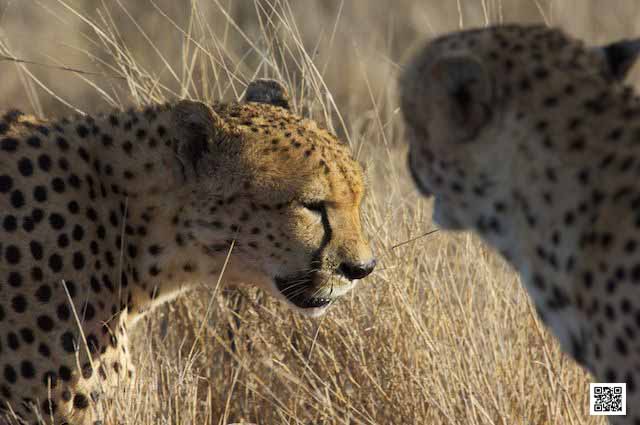
The short cut to disappointment goes through unrealistic expectations. When you are a man and you need 10.5 seconds to run the 100-meter and you expect yourself to be the gold medal winner at the Olympic Summer Games in 2012, you will be disappointed at the finish. Even if Usain Bolt falls ill that day, there are still others to beat you by lengths.
When you experience the feeling of disappointment in photography, ask yourself what you expected to happen and if this was realistic. Did you buy a new camera, expecting everything would go by itself now? Or did you photograph a house in the style you saw in a magazine, expecting that your image would be on the next cover? Reflect on your thoughts that lead to the expectations, what were they based on and what was the outcome. By doing that your disappointment will be converted into realistic plans to accomplish your photography dreams.
Ute Sonnenberg for www.rohoyachui.com
Olympics Emotional Analogy in Photography: Trances
07/08/12 08:14 Filed in: Photography & Art
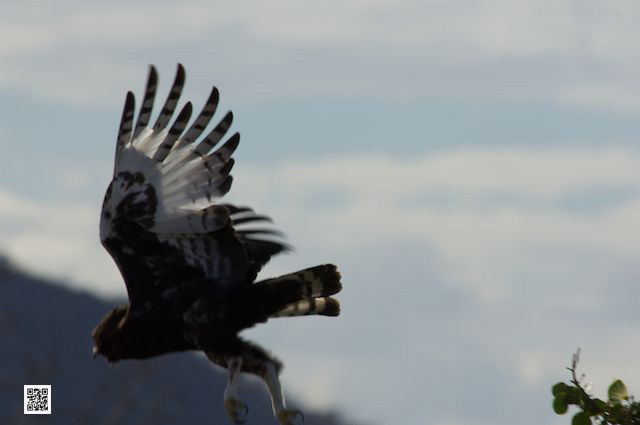
Some of the Olympic athletes look like they are in a trance when getting ready for the start. Swimmers wear already their goggles and headsets with music to induce an even deeper focus trance, blocking out all possible disturbing factors.
How about photographers? Isn’t a photographer in a trance like state when being connected with what he/she is photographing? This state of forgetting the world around you and focusing on the subject and light, walking around it to shoot it from different angles, discovering new perspectives and moving with the light. Photographers can enter this trance like state easily and that makes them vulnerable for dangers like cars approaching, balls flying around and more serious things, just because they wouldn’t notice. Be conscious about that and cover your back before you surrender to the pleasant trance of photographing great subjects.
Ute Sonnenberg for www.rohoyachui.com
Olympics Emotional Analogy in Photography: Expectations
06/08/12 17:03 Filed in: Photography & Art

Over 14,000 athletes are competing at the Olympic Summer Games in London to win one of the 906 medals. How many of them might have arrived with expectations to win a medal or even a gold medal and how many of these expectations were proved not to be realistic? Not all 14,000 participants can win a gold medal and expecting one can spoil the fun and great experience.
How many people are doing photography and how many of them can have their image on the cover of a magazine? Don’t spoil the fun and great joy of doing photography through the pressure of unrealistic expectations. Enjoy your photography and show how you see the world through your amazing work.
Ute Sonnenberg for www.rohoyachui.com
What the Olympic Sports teach Photographers: Diving
05/08/12 13:33 Filed in: Photography & Art

You probably associate immediately diving with depth, depth of field, depth in the picture. Yes, photography has a lot to do with depth. In psychoanalysis diving into the ocean is associated with descending into the subconscious. As a photographer we are surfacing the colorful under water world all the time by visualizing emotions, feelings, moments and ideas. A photo is always a dive into the soul of whatever moment is captured.
Ute Sonnenberg for www.rohoyachui.com
What the Olympic Sports teach Photographers: Beach Volleyball
04/08/12 16:17 Filed in: Photography & Art

Don’t forget to play. Photography’s strength is playing. Play supports creativity and lets art evolve. Play inspires and opens space for innovation.
Rest and relax. Recharge creative energy for exciting photographic events to come, although you might not know about them yet. Wouldn’t it just be to bad being too tiered to photograph the Olympics when suddenly asked to do so?
Ute Sonnenberg for www.rohoyachui.com
What the Olympic Sports teach Photographers: Athletics
03/08/12 19:13 Filed in: Photography & Art

Some assignments might be like a 100-meter race, others like high jumping and others like a marathon. Find out what kind of athlete you are. Don’t try to run the marathon when you are a sprinter and don’t do high jumping when you are afraid of height. Find your strength and go for it. You wouldn’t do underwater photography, if you couldn’t swim, would you? Unless you want to learn how to swim.
Ute Sonnenberg for www.rohoyachui.com
What the Olympic Sports teach Photographers: Cycling
02/08/12 16:51 Filed in: Photography & Art
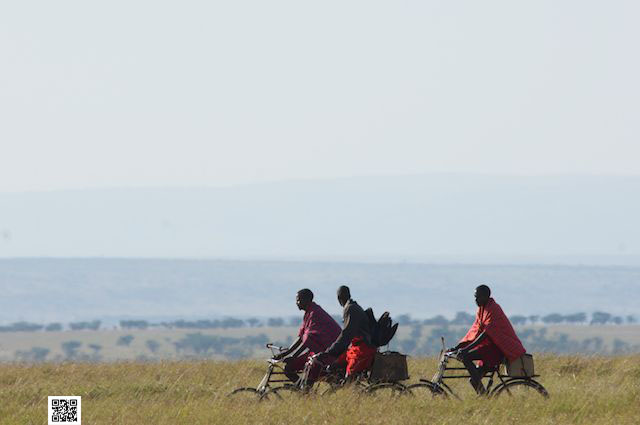
You might feel sometimes like being on an endless climb, followed by a scary decent into endless roads through boring landscapes. Endurance on physical, emotional and mental level is needed to make it to the finish. Keep your spirit high and listen to your body. Maintain your bicycle, your physical health and have a spare wheel. Find likeminded to make a great team.
Ute Sonnenberg for www.rohoyachui.com
What the Olympic Sports teach Photographers: Canoe Slalom
01/08/12 16:04 Filed in: Photography & Art

Photographer’s life can be a wild river, fast and with obstacles hidden in the waves. Hold the paddle steady in your hand. Steer your canoe through the stream of challenges with a sharp eye and don’t panic when you go head under. Use your strength to surface again and steer past all the obstacles into calmer waters.
Ute Sonnenberg for www.rohoyachui.com
What the Olympic Sports teach Photographers: Archery
31/07/12 15:09 Filed in: Photography & Art
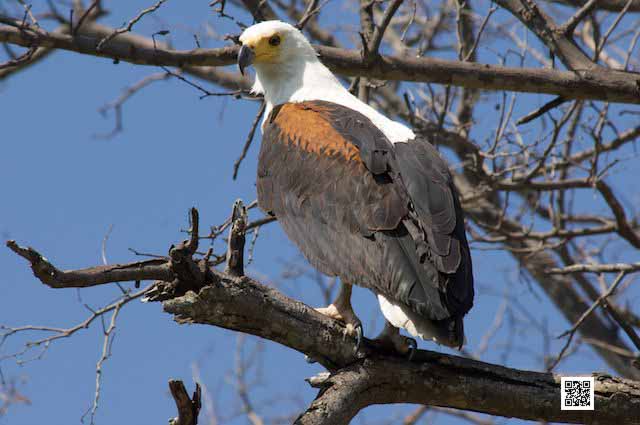
Be focused on what you are aiming for. Set yourself a goal, focus and go. When you feel your hand shaking when pulling the string, take the bow down and rest. Then focus again and shoot.
Ute Sonnenberg for www.rohoyachui.com
Who Inspired Who - Intellectual Property in Photography
26/07/12 20:41 Filed in: Photography & Art
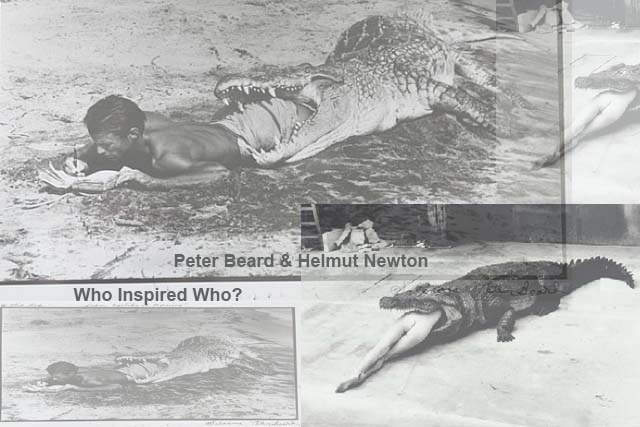
Have you ever asked yourself when seeing art who might have been the inspiration for this artwork? Was there somebody who did something similar before this artist picked it up and created his/her artwork? Pablo Picasso paid respect to Vincent van Gogh in one of his early paintings by painting in Van Gogh’s style. He had seen the greatness of Van Gogh before others did.
An interesting “couple” are also Charlie Chaplin and Stanley Kubrick. There is a great documentary about Stanley Kubrick called “A Life in Pictures” from 2001 and another great documentary about Charlie Chaplin called “Charlie: The Life and Art of Charles Chaplin” from 2003. I watched first the Kubrick documentary and it was absolutely amazing and impressive. Only later when I watched the Chaplin documentary I was surprised how influential Charlie Chaplin was and how much of his artistically groundbreaking film work could be found in Kubrick’s work.
The same happens in photography. One of the photographs above is from Peter Beard, “I’ll Write Whenever I can” and shows him with a dead crocodile in the typical Peter Beard style of presenting his work. The other photograph is from Helmut Newton, “Crocodile Eating Ballerina” from 1983. Seeing the age of Peter Beard in the image, it looks like he was first with the crocodile posing.
How often does the same as with these two pictures happen? In this Internet social media age probably a million times. We just don’t know, because not every artwork becomes as famous as the art from Beard and Newton. But that doesn’t mean that we shouldn’t care about the intellectual property of others, only because they might never find out. Treat them the way you want to be treated. Credit your sources and protect your creations.
Happy sourcing and creating. Be inspired.
Ute Sonnenberg for www.rohoyachui.com
How to Photograph Leopards
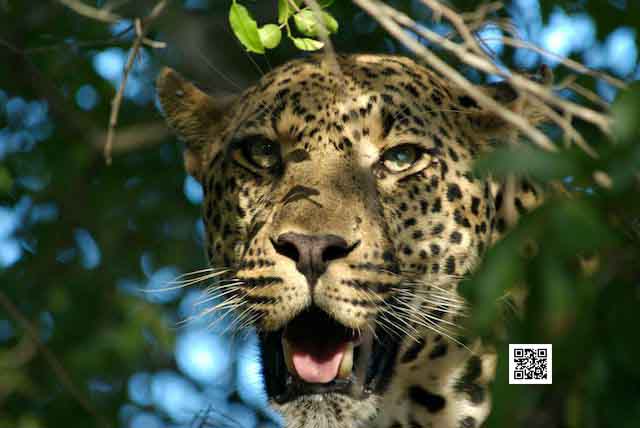
It might sound far-fetched, but Quantum Physics is the starting point to understand and photograph leopards. Everything is made of the same energy and everything is connected to everything else is an essential lesson from Quantum Physics, that applies to us as it applies to leopards, a coffee mug and the car we are driving in. Because we are all made of the same energy, we are also all connected and communicate on the energy level all the time, mostly without being conscious about that, although we use phrases like “we are on the same wavelength” with somebody or not. So somehow we know that we are communicating on frequencies like radio channels and some people can receive the signals and some don’t or receive only distorted messages. That means that the energy we are made of vibrates or moves in different frequencies, higher or lower frequencies, faster or slower. We might experience situations where we immediately have a good “click” with somebody. Most likely this persons communicates on energy level on the same frequency as we do. When we experience a situation that we find it difficult to be in the presence of a certain person for too long, because we start to feel tensed and restless, like pressure is building up, we might have an encounter with somebody of a high frequency energy and our energy frequency finds it hard to adjust to the same level. In the other direction to a lower frequency the adjustment is easier and mostly not experienced as demanding or unpleasant. But what does all that have to do with photography and especially leopard photography?
An easy answer could be, wait until you look one into the eyes, but it is helpful to know what happens when you are in the lucky position to be near a leopard and able to spend time with the animal. The difference in photographing wildlife in general and leopards in particular is the very high frequency energy this incredible cat has. Being conscious about that helps a lot when photographing them.
Imagine you are on a game drive and suddenly there is the leopard you were looking for already for days, right in front of the vehicle on a termite mount. Now just shoot away. Don’t think. Let the adrenaline from the excitement out and also take the pictures you can get, before the leopard possibly disappears. This moment might take a minute or two. You will feel when the excitement has settled and you will sit more relaxed in the vehicle. First thoughts of how to photograph the leopard properly will pop up. The next thing might be a feeling of impatience and negative thoughts about the light, the not doing anything animal, chaos with the camera settings, maybe a bit cursing, annoyance and eventually anger why we are still here with this leopard, enough leopard. This is a very important moment. When you decide to leave the sighting, you will miss the chance to connect with the animal and to get the most beautiful photos. All the negative thoughts and the physical reactions of feeling uncomfortable are caused by the difference in energy vibration/frequency. The leopard as a high frequency animal is just sitting there and doing nothing, only sending out on his/her frequency and your energy is trying to tune in to the leopards energy frequency. This tuning process causes the uncomfortable feeling. It will disappear as soon as you are tuned in and from there its as easy as what to photograph this amazing animal and to get the most beautiful leopard images.
Be patient. Stay with the animal and give yourself the time to tune in. As soon as you are tuned in on the leopards frequency the whole “energy situation” on the sighting will calm down and all present parties will connect on the same level. The leopard will start doing his/her thing and the most incredible photo opportunities will occur.
Try it at home with your cat and get trained for the big cat!
Ute Sonnenberg for www.rohoyachui.com
Recipe for a Soul Feeding Photo Adventure

Ingredients
1 or more camera(s)
1 or more lens(es)
1 or more fully charged battery(ies)
1 or more memory cards/films
1 laptop or other backup medium
1 or more power adapter(s)
1 card reader or cable for image upload
1 or more places to stay
1 or more reliable guide(s) depending on destination
1 or more camera bag(s)/backpack
comfortable clothes for all possible weather conditions
food & beverages
well planned logistics and accommodations
visas and permits if necessary
maps/GPS for navigation
well considered security preparations and backup plan
plan B if plan A cannot go through
emergency plan
passion, inspiration & a high spirit
Method
Listen to your heart when deciding on the destination of your photo adventure; the park in your town, your grandmother’s garden, the beaches of Hawaii or the African savanna, no matter how close to home or how far away, follow the choice of the heart.
Take all technical ingredients, check them, clean them and decide on the cameras and lenses depending on the destination and subject. When you made your choice put the technical equipment in the camera bag or backpack.
Add the environmental ingredients. Make sure that everything is organized and set in a way that you are safe and comfortable.
Finish with putting the cherry on the cake; the ingredients passion, inspiration and high spirit.
Enjoy your soul feeding photo adventure.
Ute Sonnenberg for www.rohoyachui.com
The Mourning of a Lioness in the Masai Mara
20/07/12 17:52 Filed in: Photography & Art | Travel & Inspiration
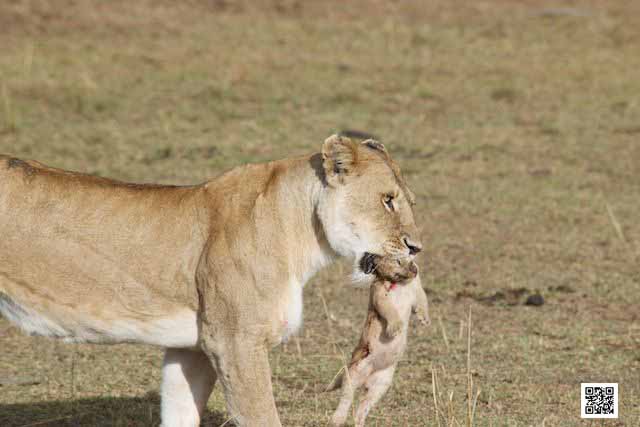
It was on a morning game drive in the Masai Mara when we spotted a lioness lying on the grass and holding something between her paws. It looked like a small animal and we thought it might be a hare or other small animal she was feeding on. But she was not feeding. She was holding it and looking around as in despair. As we came closer we saw that she was holding a little cup between her paws and the cub was not moving, it was obviously dead, only a few weeks old. The lioness started licking the cub, moving it with her paws, trying to revive the little body, but it wouldn’t come to life. Between her attempts to revive her cub she was looking up, opening her mouth as if she wanted to scream, but no sound was to be heard, it were silent screams of sadness and pain of the mother of a lion cub.
After a while she stood up, grabbed her cub with her mouth and carried it into higher grass. There she put her cub down and stood there looking at it until she moved away to a nearby tree. The lioness lay down under the tree, closed her eyes and rested. She stayed there for hours. In the late afternoon she got up and walked back to her dead cub. Then started eating her cub, maybe in some attempt to make sure that it goes back to where it was safe. After this final act of mourning the lioness left the site and walked back to the rest of the pride that had been waiting for her on a close by clearing. They had respected her need to mourn and she had taken the time she needed.
Nature will bring her straight away into estrus and she will have new cubs with hopefully a happier ending.
Ute Sonnenberg for www.rohyachui.com
How to Create an all Senses Photo Experience
19/07/12 19:26 Filed in: Photography & Art
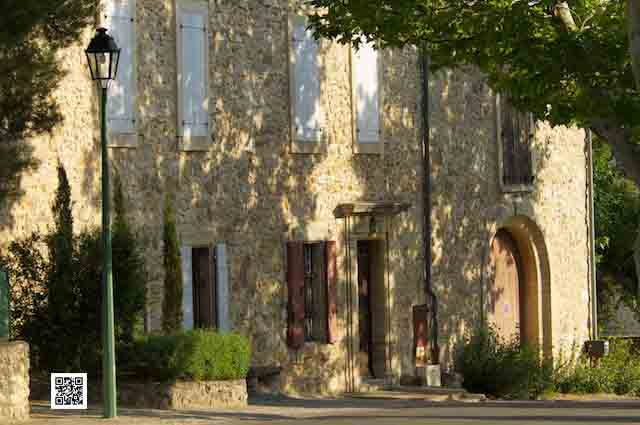
In earlier blog posts was explained how an image captures a moment with all what’s in the moment. It allows us at any given time even years later to recap what we saw, felt, smelled and thought. We can immediately tell where the photo was taken, who the people in the photo are, how we felt when we took the photo and a lot more what happened at that time. How would it be to intensify this memory by enhancing the aspects of the image with real smells and touches?
Print the photo from the holiday in the Provence, put some lavender in the room, play music from the region, make yourself comfortable on the sofa and have a glass of rosé while feeling that holiday again, 10 years later at any given place.
Sense photography with all your senses and enjoy travelling back in time to the moments you enjoyed.
Happy sensing.
Ute Sonnenberg for www.rohoyachui.com
How to Show and Sell Your Photos and Artwork on the Internet
17/07/12 18:23 Filed in: Photography & Art | Technology & Gadgets
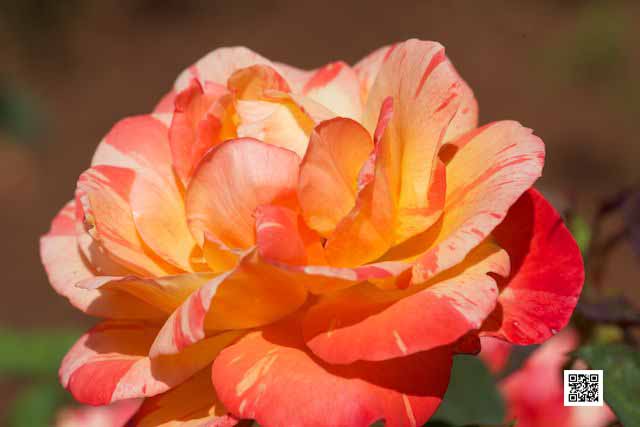
We all know about the obvious photo sharing options like facebook, Flickr, other social media and portfolio sites, but what if you want to sell your images as posters, postcards or other products? Maybe we need only to wait long enough and facebook will do that as well, but maybe not. There are websites that offer this service already and here are 2 of them.
The first is PhotoShelter. Photoshelter is as its name says a shelter for photographers. Not only can images be sold as prints and products, you can also have your own stock photo gallery and sell digital image files. The clients go to your website, browse the images and buy directly online. Photoshelter takes care of the financial part of the transaction and the copyright safety of your images. The services of Photoshelter are not for free. You pay a monthly or annual fee depending on the storage size you choose. Their services are open for professional photographers.
The second service provider is Artflakes. Artflakes is open to all artists and photographers. They are based in Berlin and offer great print services in good quality for deliveries all over the world. As a photographer you can sign up for free, upload images and set the price you wish for prints and products yourself (also in photoshelter you can set the price yourself). Artflakes is also a kind of artists network with following options and likes, but you don’t need to go around and like if you don’t like, but there are interesting artworks to discover.
Maybe these two websites can open new fields of activities for you. Have a look.
Happy discovering!
Ute Sonnenberg for www.rohoyachui.com
5 Tips for Choosing the Right Photo Course
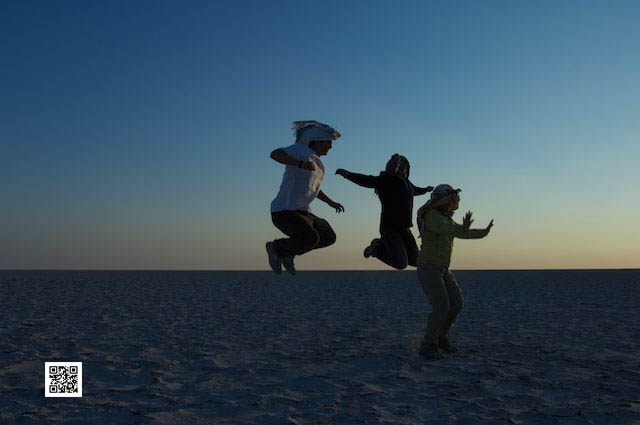
Fortunately we live in times of blooming creativity and plenty of opportunities to learn creative crafts like painting, sculpturing, cooking, photographing, gardening, app creating and many more. But it’s sometimes hard to find the right course and setting to learn and to get the most out of it. Here some pointers to help identifying a good course. They apply not only to photography, but also to courses in general.
- Make sure the course is about the students and not about the teacher. That means it stimulates the creativity of the students and enables them to develop their own style, guided by the teacher.
- Make sure the group is not to big or even go for individual training if it suits your purpose. Small groups provide more attention and space for individual questions and needs.
- Make sure you feel safe in the group. It’s a creative course and you will show yourself through your work. You will flourish and grow, if you feel safe to show your work and ask questions.
- Make sure you like the course environment incl. location, people, services and other facilities. That will stimulate your creative work and growth.
- Make sure it is fun. Fun makes us learn easier and learning enjoyable.
You might think, but I will know all these things only when I’m already in the course. Think back when you did courses in the past. Didn’t you have the right feeling about it already from the moment you booked it? Trust your intuition and you will have a great photo course, cooking classes, painting sessions or any other creating adventure you want to embark on.
Enjoy creating!
Ute Sonnenberg, www.rohoaychui.com
How Many Photo Equipment does One Need on Safari
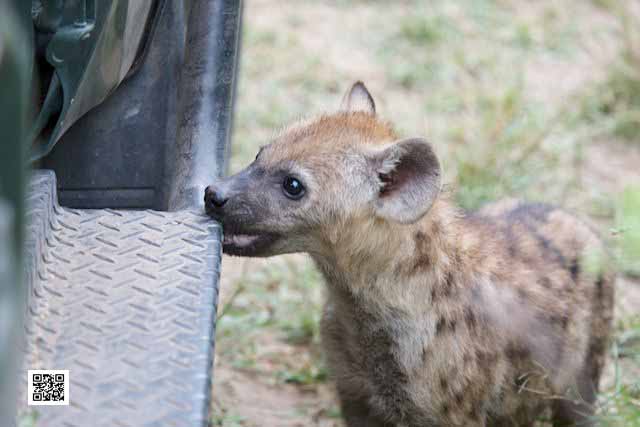
Many people go ones in their life on a safari and want to make sure they come home with lovely images. That puts a lot of pressure on the one who is responsible for the photography and one can easily end up buying all equipment possibly necessary, just to make sure to have it in case they need it. There is an overwhelming amount of equipment available and its really hard to make the right choice, but you got to make a choice and if its only for the luggage allowance on the flights.
If you are an entry-level hobby photographer, the best you can do is having a bridge type of digital camera with you with a good zoom and a relatively good speed. The biggest problem of the point and shoot cameras is their speed. They are often to slow to capture the moment and the animal is gone. Bringing that good bridge model to start with is a good choice for the less ambitious hobby photographer. No further photo equipment needed.
The more ambitious photographer with an entry level DSLR and interchangeable lenses gets already confronted with more choices. There are flowers and small animals that make great subjects, there are landscapes and there are the elephants on the water whole. For all three different situations are different lenses and the best thing to do would be to bring a macro, a wide angle and a zoom lens. But in reality one ends up not really using the macro lens when focusing on wildlife, unless macro is a specialty of the photographer and he/she will focus on small animals and objects. So, in general the wide angle and the zoom lens will be enough to bring. This lens choice can also apply to the more advanced and ambitious photographer. The next question is the tripod. A tripod is great for low light situations or night photography, but not essential for wildlife photography. A beanbag is the better choice. There is limited space in the vehicle, one needs to be flexible for the always-moving objects and night photography is not really happening. Get a beanbag.
The photographers with the more advanced cameras and lenses have a difficult task in making a decision. The beautiful fixed 400mm/500mm/600mm lenses are great, but they are also heavy, not flexible, need a tripod or monopod to be handled and require space. Already the transport on the international flight and definitely on the safari flight is challenging. But the main concern is their flexibility. In many places the animals are very close to the vehicles and the big lens cannot be used. So, one needs at least two cameras to have a more flexible lens on the other body to capture also these moments. If you want to bring all this great equipment, be prepared to have a private vehicle in order to manage it while being on safari. Also special arrangements for the transfers and flights might be necessary.
Whatever your choice will be, keep in mind to have a fast camera with a fast processing memory card, a minimum 400 mm zoom lens when shooting full frame and a beanbag. These essentials will serve you well when going out to shoot great photos of wildlife, yet having a relaxed safari and easy transportation.
Enjoy preparing for a great trip!
Ute Sonnenberg, www.rohoyachui.com
